Kardomia prominens
Kardomia silvestris
Karrabina benthamiana
Kennedia nigricans
Kennedia rubicunda
Keraudrenia corollata
Keraudrenia hillii
Kopsia arborea
Korthalsella rubra
Kunzea affinis
Kunzea ambigua
Kunzea bracteolata
Kunzea capitata
Kunzea opposita
Kunzea parvifolia
Kunzea pauciflora
Kardomia prominens
Classification:
Unranked: Eudicots
Class Rosids
Order: Myrtales
Family: Myrtaceae
Genus: From Kardomia, which is unknown.
Specie: From Prōminēns, which is Latin for to stand out as to be seen easily. It refers to plants, which have outstanding beauty especially when in flower and thus become more prominent in their environment.
Sub species:
Common Name:
Distribution:
Kardomia prominens is restricted to a small area from Nymboida to the Nymboi-Binderay National Park south of Grafton in far north eastern New South Wales.
https://avh.ala.org.au/occurrences/search?taxa=Kardomia+prominens#tab_mapView
Habitat Aspect Climate:
Kardomia prominens prefers light dappled shade. It grows on steep hills in dry sclerophyll forests. The altitude ranges from 220 meters ASL to 390 meters ASL.
The temperatures range from minus 1 degree in August to 36 degrees in January.
The rainfall ranges from lows of 850mm to an average of 1550mm annually.
Soil Requirements:
Kardomia prominens prefers to grow on better quality shallow sandy loams. The soils are derived from a mixture of decomposed sandstone and granite. The soils pH ranges from 5.5pH to 6pH are preferred. It does not tolerate waterlogged soils. Non saline soils to moderately saline soils are tolerated.
Height & Spread:
Wild Plants: 1.5m to 2.5m by 0.5m to 2m.
Characteristics:
Kardomia prominens’s has a slightly furrowed, grey-brown trunk. The dull blue-green or grey-green branches and branchlets are erect. The branchlets are glabrous and winged.
Kardomia prominens’s elliptical, decussate leaves measure 3.5mm to 4.5mm in length by 1.8mm to 2.2mm in width. The bases are cuneate to rounded while the apexes are obtuse. The discolourous leaves are mid grass-green to deep green and glabrous on the upper laminas while the lower laminas are paler and covered in evenly scattered oil dots. The laminas are flat while the margins are entire. The petioles measure 0.4mm to 0.6mm in length.
The inflorescences of Kardomia prominens are born singularly from the upper axils. The pale yellowish-green often tinged pink pedicels are glabrous and measure 1mm to 2.5mm in length. The 5 linear bracteoles are pale yellowish-green to deep grass-green and measure 1.5mm to 2.5mm in length.
The yellowish-green to olive-green hypanthium is rough while the 5 minute sepals are obtuse. The corollas measure 5mm to 8mm in diameter. The white orbicular petals measure 2.6mm to 3mm in diameter.
The 8 to 10 stamens are white while the pale fawn anthers are orbicular. The style is positioned in a shallow pit on the hypanthia’s lime-green disc. The flowers have been recorded in April, September and November.
Kardomia prominens’s fruits are conical coriaceous capsules. The capsules are glabrous and measure 2mm to 2.4mm in diameter. The styles remnant is often persistent on the ripe green capsules which turn deep grey when ripe.
The hemispherical seeds are brown to deep rusty-brown.
Wildlife:
Kardomia prominens’s flowers support the native honey bee, Tetragonula carbonaria and the Blue banded bee Amegilla cingulata.
Cultivation:
Kardomia prominens should make beautiful medium shrubs in the garden. It is suitable for small, medium and large sunny gardens close to the coast or mountains in semi-arid, temperate and subtropical areas, especially where the soils are sandy loams to medium clays and are well drained. As garden subjects it will probably grow to 2 meters to 2.5 meters in height by 1.5 meters to 2 meters in diameter when grown in the open. It is fast growing and are cold tolerant to temperatures as low as minus 4 degrees once established.
It is most suitable for use in rockeries, along drive ways or adjacent to natural bush gardens. Mass plantings of 5 or more plants even in small areas; really do the plants justification especially when it is in flower and trimmed to different heights. It would make an excellent soft hedge or screen.
It is best used adjacent to small areas of bush close to paths or the house so their white flowers can be viewed. Plants can be placed near a bend in the garden or along a long driveway with other smaller broad green leaf shrubs. It will gain a lot of attention and highlight the other broader green leaf shrubs. Mass plant it (in small groups to madd attention with other plants, which have deep green broader simple leaves in the background and with prostrate plants with broad deep green leaves in the foreground. If fine leaf plants are used they will be lost in a miniature jungle that may look very untidy. Ensure that the whole plant or at least most of it is on display from most sections of the garden as the flowers are a real bonus.
Propagation:
Seeds: Kardomia prominens seeds can be sown directly into a seed raising mix. Sow thinly and cover them with 1mm to 2mm of fine weed free mulch and keep moist. Place the tray in a warm sunny position or beneath 30mm shade cloth. Harden plants off by placing them in full sun for a week or 2 before transplanting. When the seedlings are 20mm to 50mm tall, prick them out and plant them into 50mm native tubes using a good organic mix.
Once the seedlings reach 100mm to 150mm in height they can be planted out into their permanent position.
Fertilize using seaweed, fish emulsion or organic chicken pellets soaked in water on an alternate basis. Fertilize every two months until the plants are established then twice annually in early September or March to maintain health, vitality and better flowering.
Cuttings:
Use 100mm long half ripened material when growing from cuttings from the present season’s growth. Take them in warmer months of the year. Remove half the leaves from the bottom section being careful not to tear the bark. Take a 10mm slice off the bark from the bottom of the cutting on one side.
1 Prepare the cutting mix by adding one third sharp clean river sand, one third peat and one third perlite. These ingredients are sterilize,
2 Select good material from non diseased plants,
3 Select semi green stems for cuttings. Look for a stem with two or three nodes,
4 Place the cutting on a flat, hard surface, and make a clean cut down one side of the cutting at the base for 10mm with a sharp sterile knife or razor blade. – This scarification of the node will increase the chances of roots emerging from this spot. Now remove all but one or two the leaves, leaving the apex leaves in tact. If the leaves are very large in proportion to the stem, cut off the apical halves.
5 Fill a saucer with water, and place a little medium strength rooting hormone into another container like a milk bottle top. Dip the node end of the cutting into the water and then into the rooting hormone. Tap off any excess hormone,
6 Use a small dipple stick or old pencil to poke a hole into the soilless potting mix. Ensure the hole is slightly larger than the stem diameter and be careful not to wipe the rooting hormone off the cuttings base, place the cuttings in a pattern ensuring the cuttings are not touching each other,
7 I like to place the pots in Plastic bags to help maintain temperature and moisture. Place in a semi shaded place like under 50mm shade cloth.
8 When the cuttings have struck, open the bag to allow air circulation for a few days to a week,
9 Once hardened off remove the cuttings from the bag and allow to further hardening for a few more days,
10 Transplant into a good potting mix to grow on.
Fertilize using seaweed, fish emulsion or organic chicken pellets soaked in water on an alternate basis. Fertilize every two months until the plants are established then twice annually in early September or March to maintain health, vitality and better flowering.
Further Comments from Readers:
Hi reader, it seems you use The Bible of Botany a lot. That’s great as we have great pleasure in bringing it to you! It’s a little awkward for us to ask, but our first aim is to purchase land approximately 1,600 hectares to link several parcels of N.P. into one at The Pinnacles NSW Australia, but we need your help. We’re not salespeople. We’re amateur botanists who have dedicated over 30 years to saving the environment in a practical way. We depend on donations to reach our goal. If you donate just $5, the price of your coffee this Sunday, We can help to keep the planet alive in a real way and continue to bring you regular updates and features on Australian plants all in one Botanical Bible. Any support is greatly appreciated. Thank you.
In the spirit of reconciliation we acknowledge the Bundjalung, Gumbaynggirr and Yaegl and all aboriginal nations throughout Australia and their connections to land, sea and community. We pay our respect to their Elders past, present and future for the pleasures we have gained.
Kardomia silvestris
Classification:
Unranked: Eudicots
Class Rosids
Order: Myrtales
Family: Myrtaceae
Genus: From Kardomia, which is unknown.
Specie: From Silvaticum, which is Latin for trees. It refers to plants, which grow beneath trees within a forest.
Sub species:
Common Name:
Distribution:
Kardomia silvestris is restricted to 3 disjunct populations in far north eastern New South Wales. It is found on the Great Dividing Range in Girraween National Park, Mount Neville Nature Reserve on Wyan Creek Road and Mobong Falls at Wild Cattle Creek in the Nyboi-Binderay National Park.
https://avh.ala.org.au/occurrences/search?taxa=Kardomia+silvestris#tab_mapView
Habitat Aspect Climate:
Kardomia silvestris prefers full sun to light dappled shade. It grows on hills in dry sclerophyll woodlands. The altitude ranges from 97 meters ASL to 950 meters ASL.
The temperatures range from minus 3 degree in August to 38 degrees in January.
The rainfall ranges from lows of 700mm to an average of 1550mm annually.
Soil Requirements:
Kardomia silvestris prefers better quality deep gravelly clay-loams to medium clays. The soils are usually derived from decomposed rhyolitica granites. The soils pH ranges from 5.5pH to 6pH are preferred. It does not tolerate waterlogged soils. Non saline soils to moderately saline soils are tolerated.
Height & Spread:
Wild Plants: 1.5m to 2.5m by 0.5m to 2m.
Characteristics:
Kardomia silvestris’s has a slightly furrowed, grey-brown trunk. The dull creamy fawn to fawn-ochre branchlets are erect to semi pendant, are not winged but have longitudinal coriaceous ridges. The branchlets are smooth, glabrous and semi glossy and only turn lime-green with a pinkish tinge close to the growing tip.
Kardomia silvestris’s ovate to elliptical decussate leaves measure 3mm to 4.5mm in length by 1.5mm to 3.3mm in width. The bases are cuneate while the apexes are obtuse. The discolourous leaves are mid grass-green to deep green and glabrous on the upper laminas while the lower laminas are slightly paler and covered in scattered oil dots. The laminas are flat and decurve slightly on the apex third while the margins are entire. The petioles are lime-green with a pinkish tinge and measure 0.6mm to 1mm in length.
The inflorescences of Kardomia silvestris are born singularly from the upper axils. The pale yellowish-green often tinged pink peduncles and pedicels are glabrous. The peduncles measure 1.2mm to 2.5mm in length while the pedicels measure 2.7mm to 4mm in length. The 2 ovate to elliptical bracteoles are grass-green to deep green and measure 2mm to 2.5mm in length.
The mid green to deep green tinged purple or red hypanthium is smooth and glabrous while the 5 minute sepals are broad acute and deep reddish-purple. The deep green tinged reddish-purple or deep reddish-purple corollas measure 6mm to 8mm in diameter. The white orbicular to ovate petals measure 1.6mm to 2.4mm in diameter. The margins are crenulate, denticulate and mucronate.
The 8 to 10 stamens are situated on the rim of the hypanthium, are white while the fawn anthers are orbicular. The style is positioned on a small rise on the hypanthia’s lime-green disc. The flowers have been sporadically throughout the year when weather conditions are favourable.
Kardomia silvestris’s fruits are conical coriaceous capsules. The capsules are glabrous and measure 4.5mm to 5mm in diameter. The styles remnant is often persistent on the ripe green capsules which turn deep maroon-purple following anthesis then to grey when ripe.
The cuboidal seeds are brown to deep rusty-brown.
Wildlife:
Kardomia silvestris’s flowers are popular with native bees like Tetragonula carbonaria.
Cultivation:
Kardomia silvestris make beautiful medium shrubs in the garden. It is suitable for small, medium and large sunny gardens close to the coast or mountains in semi-arid, temperate and sub-tropical areas, especially where the soils are sandy loams to medium clays and are well drained. As garden subjects they will probably grow to 2 meters to 2.5 meters in height by 1.5 meters to 2 meters in diameter when grown in the open. It is fast growing and are cold tolerant to temperatures as low as minus 4 degrees once established.
It is most suitable for use in rockeries, along driveways or adjacent to natural bush gardens. When it is mass planted in small groups even in small areas, will highlight the plants and justify the flowering especially when trimmed to different heights. It would make an excellent soft hedge or screen.
It is best used adjacent to small areas of bush close to paths or the house so their white flowers can be viewed. Plants can be placed near a bend in the garden or along a long driveway with other smaller broad green leaf shrubs. It will gain a lot of attention and highlight the other broader green leaf shrubs. When planted in small groups with plants, which have deep green broader simple leaves in the background and with prostrate plants with broad deep green leaves in the foreground. If fine leaf plants are used it will be lost in a miniature jungle that may look very untidy. Ensure that the whole plant or at least most of it is on display from most sections of the garden as the flowers are a real bonus.
Propagation:
Seeds: Kardomia silvestris can be sown directly into a seed raising mix. Sow thinly and cover them with 5mm to 6mm of fine weed free mulch and keep moist. Place the tray in a warm sunny position. Harden plants off by placing them in full sun for a week before transplanting. This should be started when the seedlings are just 10mm tall. When the seedlings are 20mm to 25mm tall, prick them out and plant them into 50mm native tubes using a good organic mix. Be very careful at this stage as the plants are very susceptible to damping off as they resent root disturbance. I usually did this before watering the plants so the mix was semi dry.
Once the seedlings reach 100mm to 150mm in height they can be planted out into their permanent position.
Fertilize using seaweed, fish emulsion or organic chicken pellets soaked in water on an alternate basis. Fertilize every two months until the plants are established then twice annually in early September or March to maintain health, vitality and better flowering.
Cuttings:
Use 80mm to 100mm long semi hardwood material when growing from cuttings from the present season’s growth. Take them in the warmer months of the year. Remove half the leaves from the bottom section being careful not to tear the bark. Take a 10mm slice off the bark from the bottom of the cutting on one side.
1 Prepare the cutting mix by adding one third sharp clean river sand, one third peat and one third perlite. These ingredients are sterilize,
2 Select good material from non diseased plants,
3 Select semi green stems for cuttings. Look for a stem with two or three nodes,
4 Place the cutting on a flat, hard surface, and make a clean cut down one side of the cutting at the base for 10mm with a sharp sterile knife or razor blade. – This scarification of the node will increase the chances of roots emerging from this spot. Now remove all but one or two the leaves, leaving the apex leaves in tact. If the leaves are very large in proportion to the stem, cut off the apical halves.
5 Fill a saucer with water, and place a little medium strength rooting hormone into another container like a milk bottle top. Dip the node end of the cutting into the water and then into the rooting hormone. Tap off any excess hormone,
6 Use a small dipple stick or old pencil to poke a hole into the soilless potting mix. Ensure the hole is slightly larger than the stem diameter and be careful not to wipe the rooting hormone off the cuttings base, place the cuttings in a pattern ensuring the cuttings are not touching each other,
7 I like to place the pots in Plastic bags to help maintain temperature and moisture. Place in a semi shaded place like under 50mm shade cloth.
8 When the cuttings have struck, open the bag to allow air circulation for a few days to a week,
9 Once hardened off remove the cuttings from the bag and allow to further hardening for a few more days,
10 Transplant into a good potting mix to grow on.
Fertilize using seaweed, fish emulsion or organic chicken pellets soaked in water on an alternate basis. Fertilize every two months until the plants are established then twice annually in early September or March to maintain health, vitality and better flowering.
Further Comments from Readers:
Hi reader, it seems you use The Bible of Botany a lot. That’s great as we have great pleasure in bringing it to you! It’s a little awkward for us to ask, but our first aim is to purchase land approximately 1,600 hectares to link several parcels of N.P. into one at The Pinnacles NSW Australia, but we need your help. We’re not salespeople. We’re amateur botanists who have dedicated over 30 years to saving the environment in a practical way. We depend on donations to reach our goal. If you donate just $5, the price of your coffee this Sunday, We can help to keep the planet alive in a real way and continue to bring you regular updates and features on Australian plants all in one Botanical Bible. Any support is greatly appreciated. Thank you.
In the spirit of reconciliation we acknowledge the Bundjalung, Gumbaynggirr and Yaegl and all aboriginal nations throughout Australia and their connections to land, sea and community. We pay our respect to their Elders past, present and future for the pleasures we have gained.
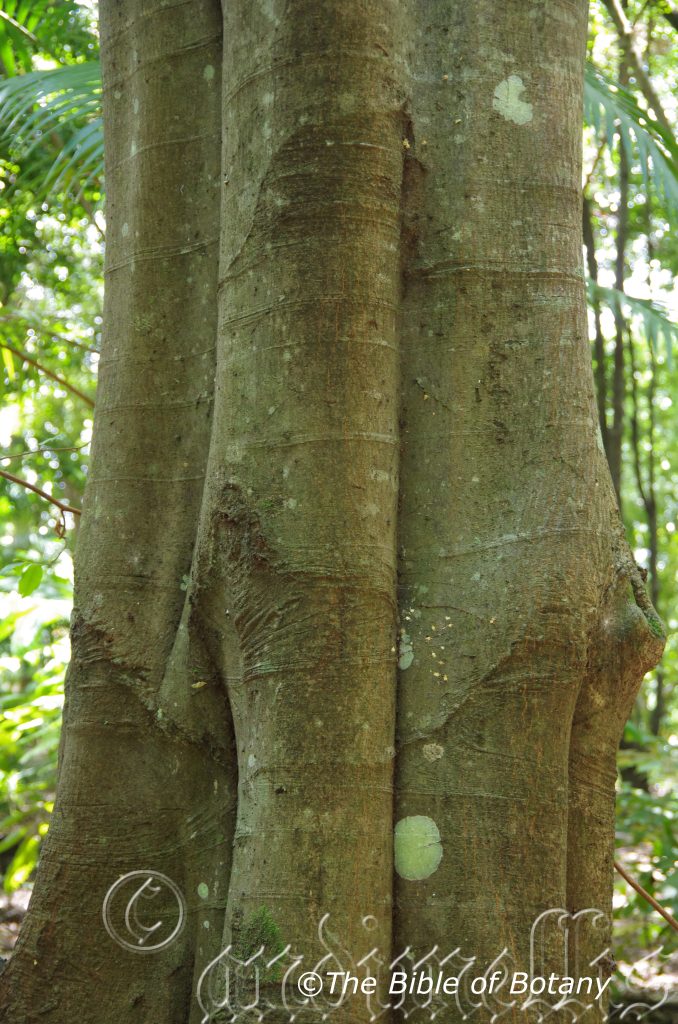
NCBG Coffs Harbour NSW
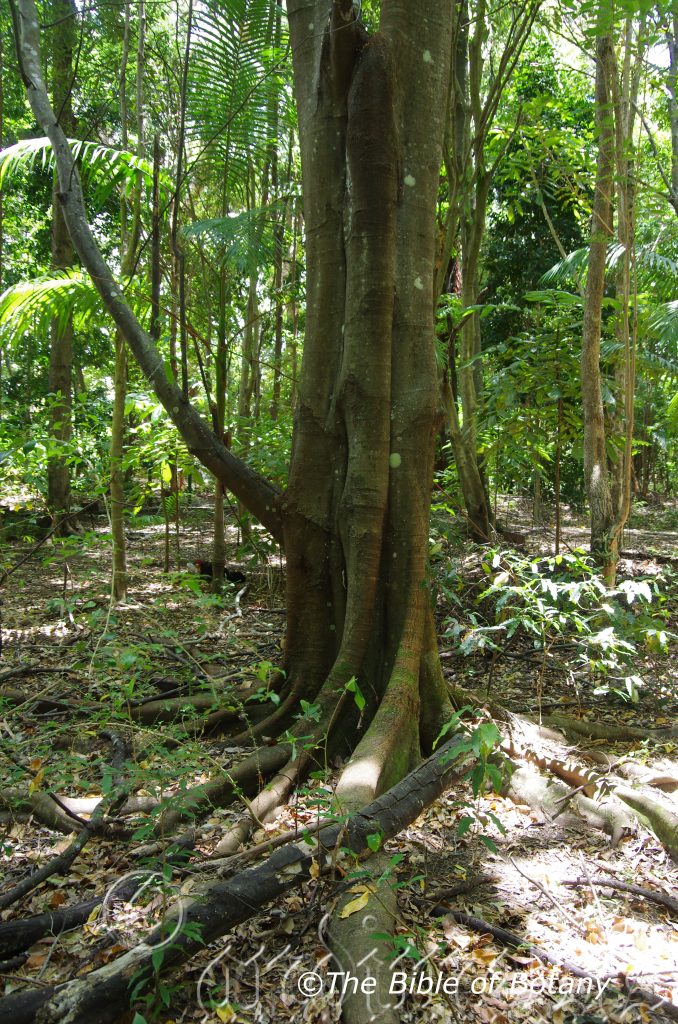
NCBG Coffs Harbour NSW
Karrabina benthamiana
Classification:
Unranked: Eudicots
Unranked: Rosids
Order: Oxalidales
Family: Cunoniaceae
Genus: Is Latinized from Garrabini, which is from the Yugambeh Language Region that extends from the Logan River to the Tweed River in south-eastern Queensland. It is the name given by the Yugambeh people for this tree.
Specie: Is named in honour of George Bentham; 1800-1884, who was an English botanist who undertook the reclassification of seed plants into families.
Sub specie:
Common Name: Red Carabeen or Red Bean or Leather Jacket or Brush Mahogany.
Distribution:
Karrabina benthamiana is a found south from Mount Tamborine in far south east Queensland to the Manning River in coastal central New South Wales. It is mainly found on and east of the Great Dividing Range.
https://avh.ala.org.au/occurrences/search?taxa=Karrabina+benthamiana#tab_mapView
Habitat:
Aspect / Climate:
Karrabina benthamiana prefers dense shade, partial shade or full sun. It usually grows in the valleys of well-developed cool subtropical and well developed warm temperate rainforest. The altitude ranges from 200 meters ASL to 1000 meters ASL.
The temperatures range from 12 degrees in July to 38 degrees in January.
The rainfalls range from lows of 110mm to an average of 2200mm.
Soil Requirements:
Karrabina benthamiana prefers better quality medium clays to stony clays or deep rocky screes. The soils are derived from decomposed brown basalt or black basalt. The soils pH ranges from 5pH to 6pH are preferred. It does not tolerate waterlogged soils. Non saline soils to moderately saline soils are tolerated.
Height & Spread:
Wild Plants: 30m to 40m by 12m to 15m.
Characteristics:
Karrabina benthamiana grows as a large tree with a straight mid brown rough bole. The trunk is buttressed in larger specimens. The trunks and larger branches are often covered in lichens and mosses. The branchlets are glabrous and smooth while the branchlets are mid green, smooth and glabrous.
The alternate, trifoliate, coriaceous leaves of Karrabina benthamiana has elliptical to narrow ovate. The leaflets measure 60mm to 170mm in length and 20mm to 50mm in width. The petiole and petiolules are glabrous. The petiole measures 20mm to 50mm in length while the petiolules measure 5mm to 15mm in length. The bases are usually rounded while the apexes are acuminate. The discolourous laminas are mid green to deep green, smooth, dull and glabrous on the upper laminas while the lower laminas are paler. The laminas recurve upwards from the mid vein to the margins and decurve downwards near the apexes. The laminas are raised between the lateral penniveins and the mid vein while the margins are regularly toothed. The mid vein and lateral veins are prominent on both laminas but is more prominent on the lower laminas. The caduceous, pale green stipules are orbicular, semi curved and measure 10mm to 25mm in diameter.
The new growth is deep red to maroon-red smooth and glossy.
The inflorescences of Karrabina benthamiana are born as large with long racemes. The racemes measure 70mm to 150mm in length by 25mm to 30mm in diameter. The pedicels measure 4mm to 6mm in length.
The 5 cream, elliptical, glabrous sepals are fused at the base into a short calyx tube and measure 4mm to 6mm in length.
The 20 to 30 cream, filiform filaments measure 4mm to 6mm in length. The style is white to cream and measures 3mm to 5mm in length. The flowers appear from July to September.
Karrabina benthamiana has fruits that are straight or falcate syllabicated to cylindrical capsules. The capsules measure 10mm to 15mm in length by 3.5mm to 5mm in diameter at the widest point. The green capsules are covered in soft pale fawn pulverulent hairs and turn pale brown when ripe.
There are several overlapping, flattened, ovate seeds in each segment that measure 3mm to 4mm in length. The seeds are pale brown with a chartaceous wing at each end.
Wildlife:
Karrabina benthamiana’s wildlife is unknown to the author.
Cultivation:
Karrabina benthamiana is a beautiful large growing tree for use in the rainforest garden. It is suitable for medium to large gardens, parks and rainforest restoration. The large leaves give the rainforest affect at an early age.
It is relatively quick to establish itself and to form a dense canopy. In cultivation the trees will grow to from 15 meters to 20 meters by 12 meters to 16 meters in diameter when grown in the open. It makes an excellent specimen trees and has an attractive bark which will soon become covered in lichens. The trunk usually becomes fluted at an early age and in the long term will become buttressed with wide spreading roots which will make it unsuitable for planting near utilities and foundations.
Karrabina benthamiana is at their best when grown on rich organic, fertile, well drained, acid soils.
Trees should be fertilized every 3-4.months during the first 3 years of growth with our recommended fertilizing program, and thereafter once a year. Mulching is highly recommended to add nutrients and organic matter to the soil which the trees are highly dependent upon for trace nutrients, to conserve moisture and control weeds.
It is sensitive to high levels of fertilizer, and are better with a diluted organic fertilizer solution similar to our recommended organic fertilizing programmed on a regular basis to prevent the trees becoming top heavy and vulnerable to wind damage.
The upper branches are excellent for epiphytic ferns and orchids.
The trees would also be suitable in bonsai collections.
Propagation:
Seeds: The seeds of Karrabina benthamiana are quick to germinate with germination completed in 5 or 6 weeks. Sow fresh seeds into a tray and cover with 2mm of fine mix seed raising mix and place the trays beneath 30mm shade cloth and keep moist not wet. When the seedlings are 30mm to 40mm tall, prick them out and plant them into 50mm native tubes using a good organic mix.
Once the seedlings reach 100mm to 150mm in height plant them out into their permanent position.
Fertilize using seaweed, fish emulsion or organic chicken pellets soaked in water on an alternate basis. Fertilize every two months until the plants are established then twice annually in early September or March to maintain health, vitality and better flowering.
Further Comments from Readers:
Hi reader, it seems you use The Bible of Botany a lot. That’s great as we have great pleasure in bringing it to you! It’s a little awkward for us to ask, but our first aim is to purchase land approximately 1,600 hectares to link several parcels of N.P. into one at The Pinnacles NSW Australia, but we need your help. We’re not salespeople. We’re amateur botanists who have dedicated over 30 years to saving the environment in a practical way. We depend on donations to reach our goal. If you donate just $5, the price of your coffee this Sunday, We can help to keep the planet alive in a real way and continue to bring you regular updates and features on Australian plants all in one Botanical Bible. Any support is greatly appreciated. Thank you.
In the spirit of reconciliation we acknowledge the Bundjalung, Gumbaynggirr and Yaegl and all aboriginal nations throughout Australia and their connections to land, sea and community. We pay our respect to their Elders past, present and future for the pleasures we have gained.
Kennedia nigricans
Classification:
Unranked:
Class:Rosids
Order: Fabales
Family: Fabaceae
Subfamily: Faboideae
Tribe: Phaseoleae
Genus: Is probably named in honour of Kennedy; 1818-1848, who was an Australian surveyor explorer but I cannot substantiate it.
Specie: From Nīgritum, which is Latin for blackish. It refers to a structures or organs, which are deep blueish-black or purplish-black.
Sub species:
Common Name: Black flowering Kennedia.
Distribution:
Kennedia nigricans is found in two disjunct populations, in Western Australia. The first is from north of Perth south to Leshenault on the Swan River Plain. The second and larger population is found east from Cape Howe National Park to Bremer Bay.
https://avh.ala.org.au/occurrences/search?taxa=Kennedia+nigricans#tab_mapView
Habitat Aspect Climate:
Kennedia nigricans prefer full sun to light dappled shade. It grows on hills in dry mallee woodlands, open Eucalyptus woodlands or open Eucalyptus forests. The altitude ranges from 2 meters ASL to 40 meters ASL.
The temperatures range from 1 degree in August to 38 degrees in January.
The rainfall ranges from lows of 400mm to an average of 1000mm annually.
Soil Requirements:
Kennedia nigricans prefers deep sands to sandy loams. The soils are derived from granite, sandstone and limestone. The soils pH ranges from 5pH to 8pH are preferred. It does not tolerate waterlogged soils. Non saline soils to moderately saline soils are tolerated as are salt laden winds.
Height & Spread:
Wild Plants: 3m to 8m by 3m to 8m.
Characteristics:
Kennedia nigricans‘ stems are red-brown and glabrous. The young stems are red to green-red and glabrous or covered in lenticels.
Kennedia nigricans‘ alternate trifoliate leaves measure 100mm to 160mm in length. The ovate to obovate leaflets measure 50mm to 120mm in length by 30mm to 90mm in width. The base is rounded while the apex is obtuse with a mucronate point. The concolourous laminas are grass-green to deep olive-green and glabrous. The margins are entire and curve upwards from the mid vein. The mid vein is prominent on the lower lamina and is distinctly visible from the upper lamina being yellow-orange. The lanceolate stipules measure 3mm to 4mm in length. The terminal petiolules measure 15mm to 30mm in length while the lateral petiolules measure 3mm to 7mm in length.
Kennedia nigricans inflorescences are short racemes which are born from the leaf axis. There are 6 to 18 flowers on a rachis. The green to orange-red racemes measure 30mm to 120mm in length. The pedicels measure 5mm to 12mm in length. The olive-green calyx has 4 acute lobes. The calyx measures 4mm to 7mm in length while the lobes measure 3mm to 5.5mm in length. The deep maroon-black to black standards have a large bright yellow slash from the base, extending to the apical third and measure 12mm to 18mm in height by 6mm to 9mm wide. The deep maroon-black to black wings measure 11mm to 16mm in length by 5mm to 7mm in height. The deep maroon-black to black keel is concealed and measures 9mm to 10mm in length by 4mm to 6mm in height. The flowers appear from late July to mid November.
Kennedia nigricans‘ fruit is a long compressed pod. The pods measure 50mm to 70mm in length by 6mm to 9mm in diameter. The coriaceous pods turn a dull golden brown then black as they ripen. It is densely covered in rusty hirsute hairs. The 6 to 12 flat, ovate seeds are black with a white aril on the apex and half way down one side. The seeds measure 4mm to 5mm in length by 3.5mm to 4mm in diameter.
Wildlife:
Kennedia nigricans‘ wildlife is unknown to the author.
Cultivation:
Kennedia nigricans is suitable for medium and large sunny gardens close to the coast or inland in temperate or Mediterranean climates areas, especially where the soils are sand or light loams. It has unusual Black flowers with cream to bright yellow standards. As garden subjects it will grow to 6 meter to 8 meters in height by 6 meters to 8 meters in diameter when grown in the open.
It is fast growing and are cold tolerant to temperatures as low as 1 degree once established. It can cope with light frosts however the leaves will be cut back to the stems but will recover as soon as warm weather returns. Kennedia nigricans is a large vigorous creeper for sunny pergolas, beach side fences or hiding that unsightly chicken coop. It is also suitable for planting on large banks as a stabilizer.
Periodic pruning will ensure the plants remain vigorous compact and bushy.
Propagation:
Seeds: Kennedia nigricans require treatment before sowing. Pre-treat by placing the seeds into a glass of hot water. Allow the water to cool and leave to soak for 4 to 10 hours. Seeds that have not swollen repeat the exercise.
Kennedia nigricans seeds can be sown directly into a seed raising mix. Cover them with 5mm to 6mm of fine weed free mulch and keep moist. Place the tray in a warm sunny position. When the seedlings are 20mm to 30mm tall, prick them out and plant them into 50mm native tubes using a good organic mix.
Once the seedlings reach 100mm to 150mm in height they can be planted out into their permanent position.
Cuttings:
Use 80mm to 120mm long half ripened or hard wood material when growing from cuttings from the present season’s growth. Take them in warmer months of the year. Remove half the leaves from the bottom section being careful not to tear the bark. Take a 10mm slice off the bark from the bottom of the cutting on one side.
1 Prepare the cutting mix by adding one third sharp clean river sand, one third peat and one third perlite. These ingredients are sterilize,
2 Select good material from non diseased plants,
3 Select semi green stems for cuttings. Look for a stem with two or three nodes,
4 Place the cutting on a flat, hard surface, and make a clean cut down one side of the cutting at the base for 10mm with a sharp sterile knife or razor blade. – This scarification of the node will increase the chances of roots emerging from this spot. Now remove all but one or two the leaves, leaving the apex leaves in tact. If the leaves are very large in proportion to the stem, cut off the apical halves.
5 Fill a saucer with water, and place a little medium strength rooting hormone into another container like a milk bottle top. Dip the node end of the cutting into the water and then into the rooting hormone. Tap off any excess hormone,
6 Use a small dipple stick or old pencil to poke a hole into the soilless potting mix. Ensure the hole is slightly larger than the stem diameter and be careful not to wipe the rooting hormone off the cuttings base, place the cuttings in a pattern ensuring the cuttings are not touching each other,
7 I like to place the pots in Plastic bags to help maintain temperature and moisture. Place in a semi shaded place like under 50mm shade cloth.
8 When the cuttings have struck, open the bag to allow air circulation for a few days to a week,
9 Once hardened off remove the cuttings from the bag and allow to further hardening for a few more days,
10 Transplant into a good potting mix to grow on.
Fertilize using seaweed, fish emulsion or organic chicken pellets soaked in water on an alternate basis. Fertilize every two months until the plants are established then twice annually in early September or March to maintain health, vitality and better flowering.
Further Comments from Readers:
Hi reader, it seems you use The Bible of Botany a lot. That’s great as we have great pleasure in bringing it to you! It’s a little awkward for us to ask, but our first aim is to purchase land approximately 1,600 hectares to link several parcels of N.P. into one at The Pinnacles NSW Australia, but we need your help. We’re not salespeople. We’re amateur botanists who have dedicated over 30 years to saving the environment in a practical way. We depend on donations to reach our goal. If you donate just $5, the price of your coffee this Sunday, We can help to keep the planet alive in a real way and continue to bring you regular updates and features on Australian plants all in one Botanical Bible. Any support is greatly appreciated. Thank you.
In the spirit of reconciliation we acknowledge the Bundjalung, Gumbaynggirr and Yaegl and all aboriginal nations throughout Australia and their connections to land, sea and community. We pay our respect to their Elders past, present and future for the pleasures we have gained.
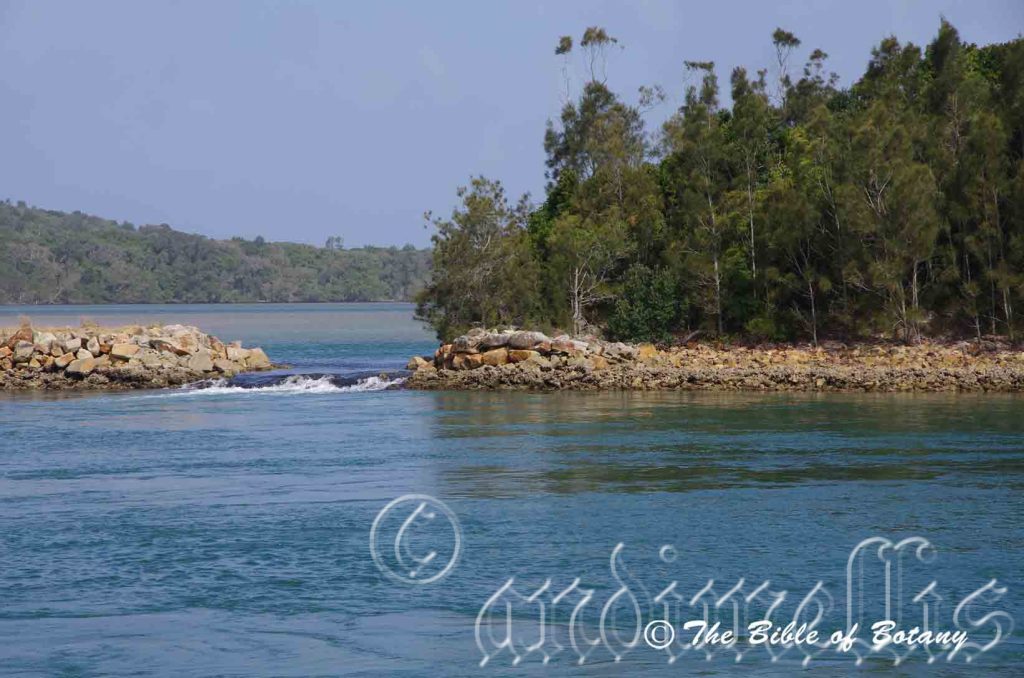
Laurieton NSW
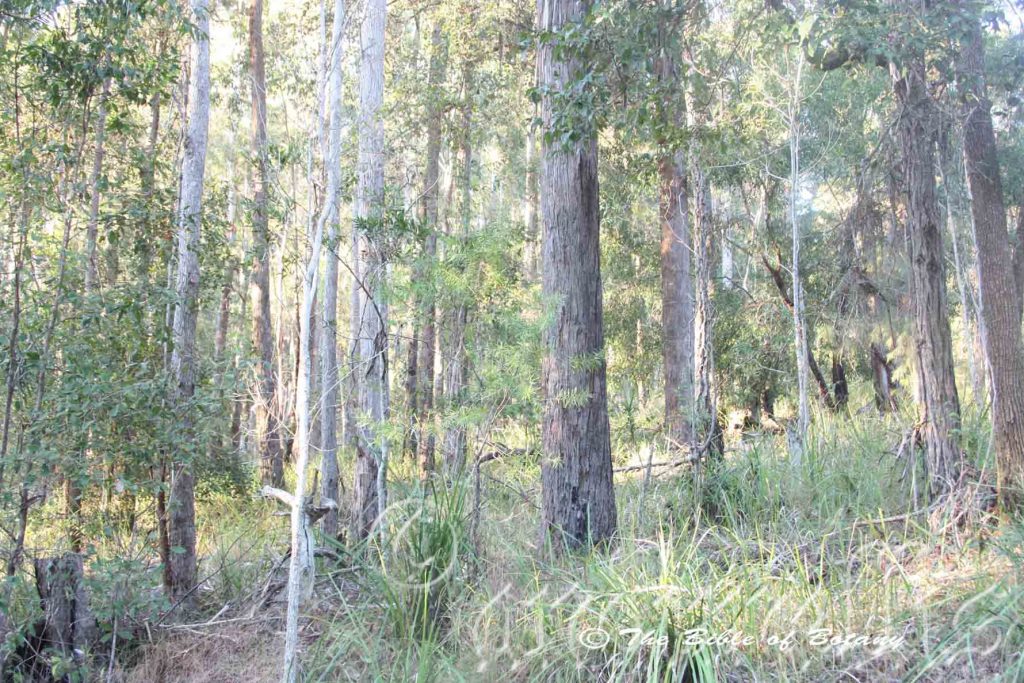
Kendall NSW
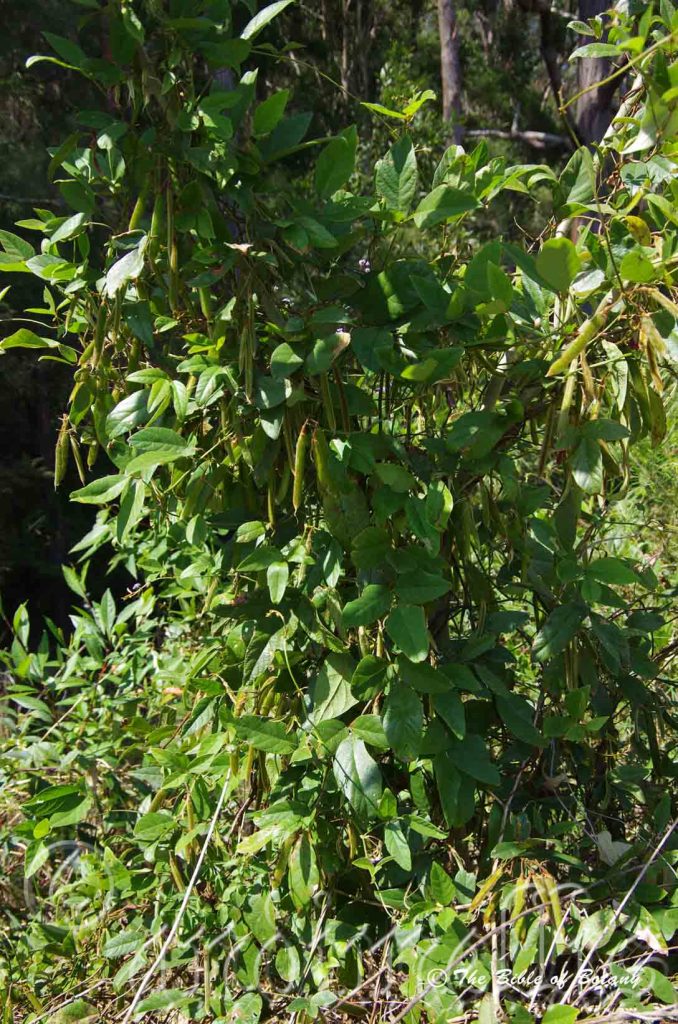
Laurieton NSW
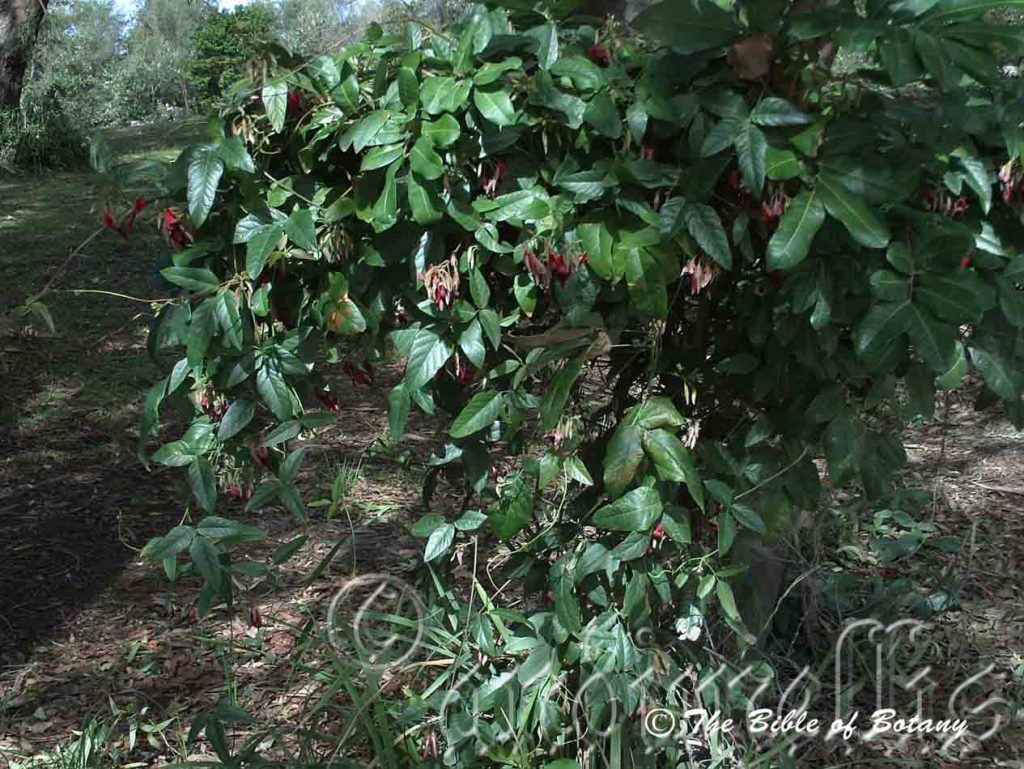
North Haven NSW
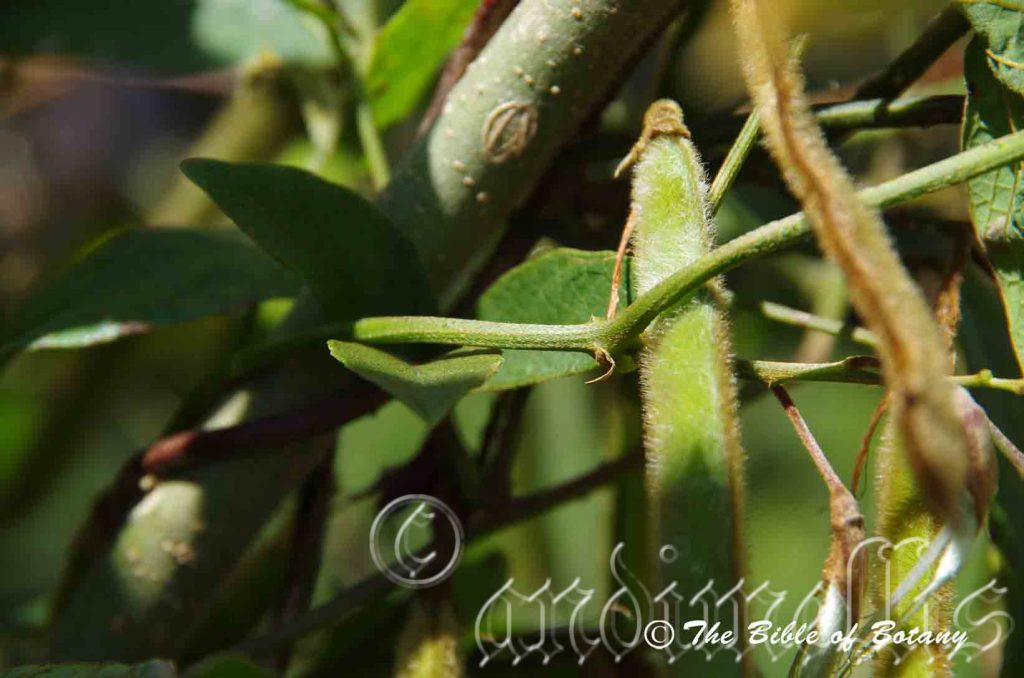
Laurieton NSW
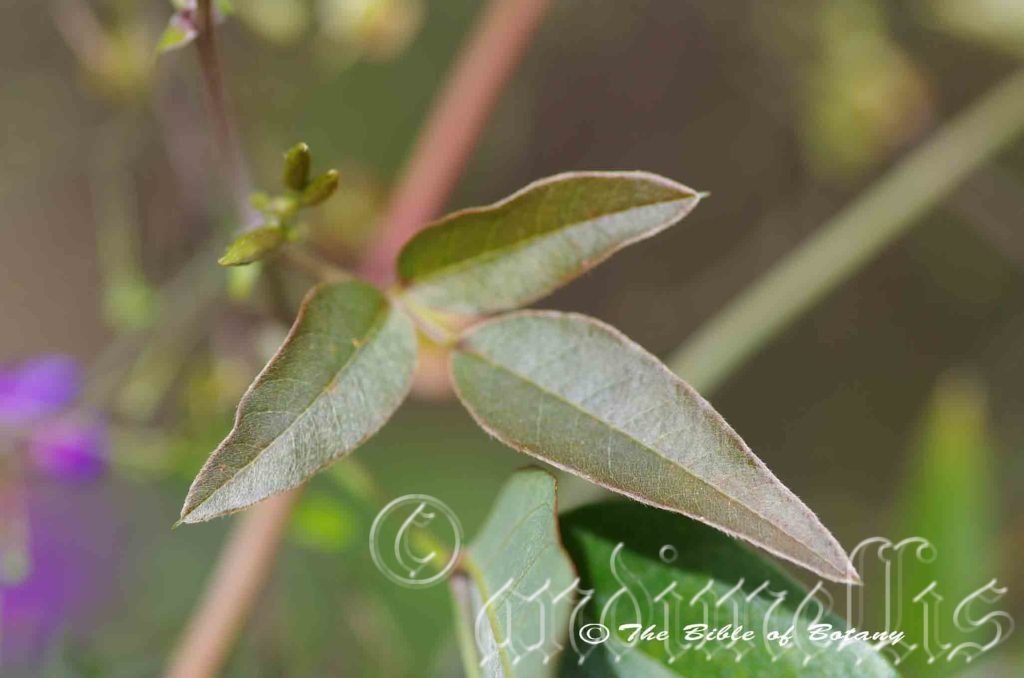
Townsville Qld.
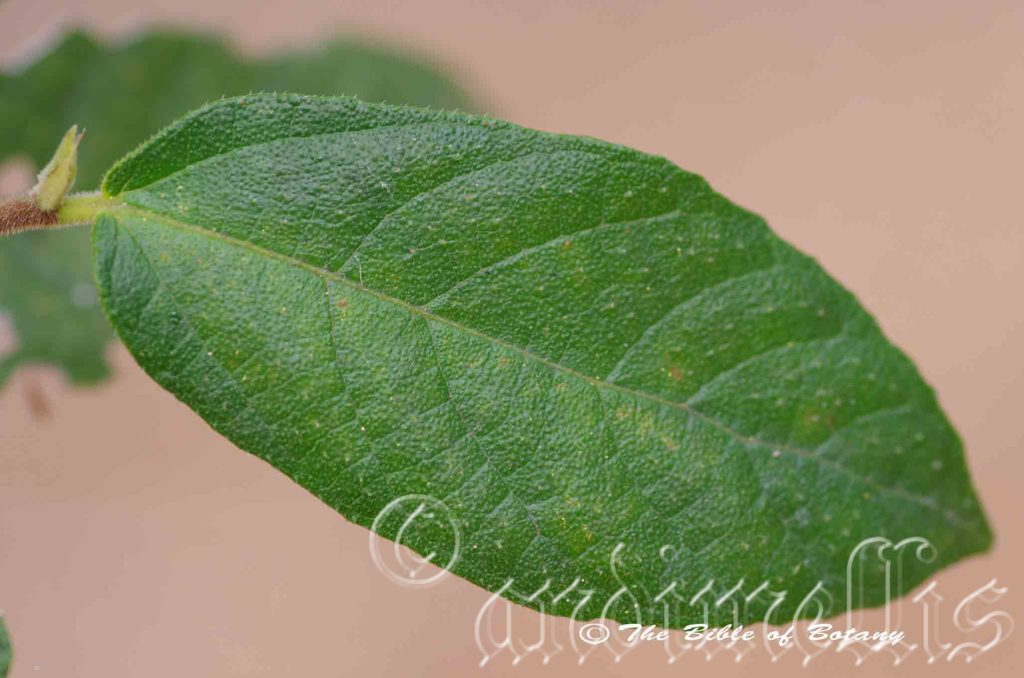
Townsville Qld.
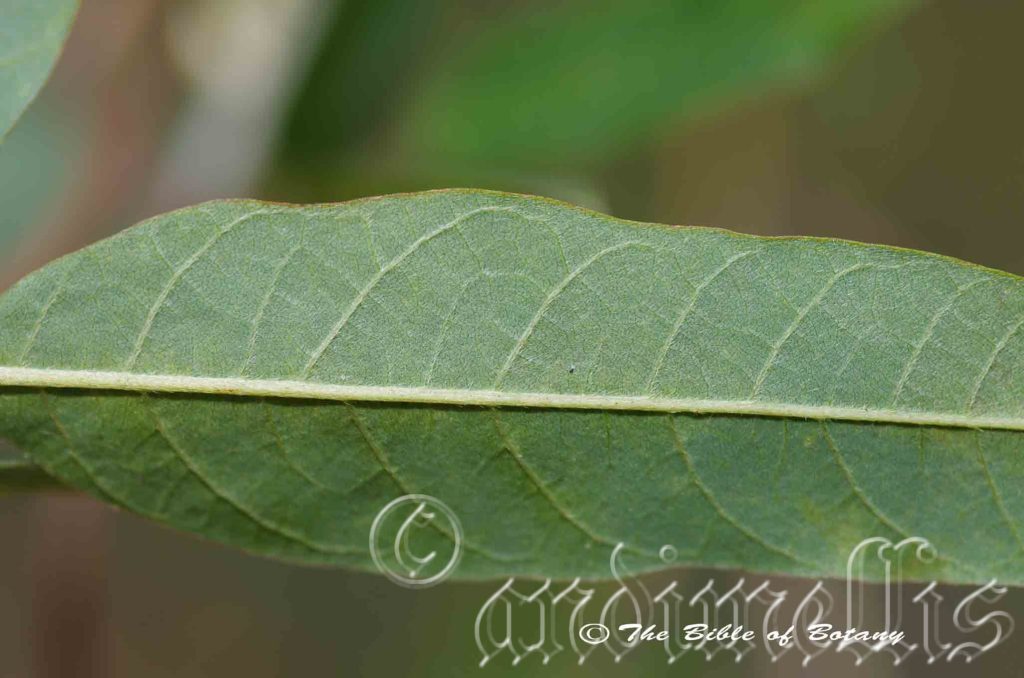
Townsville Qld.
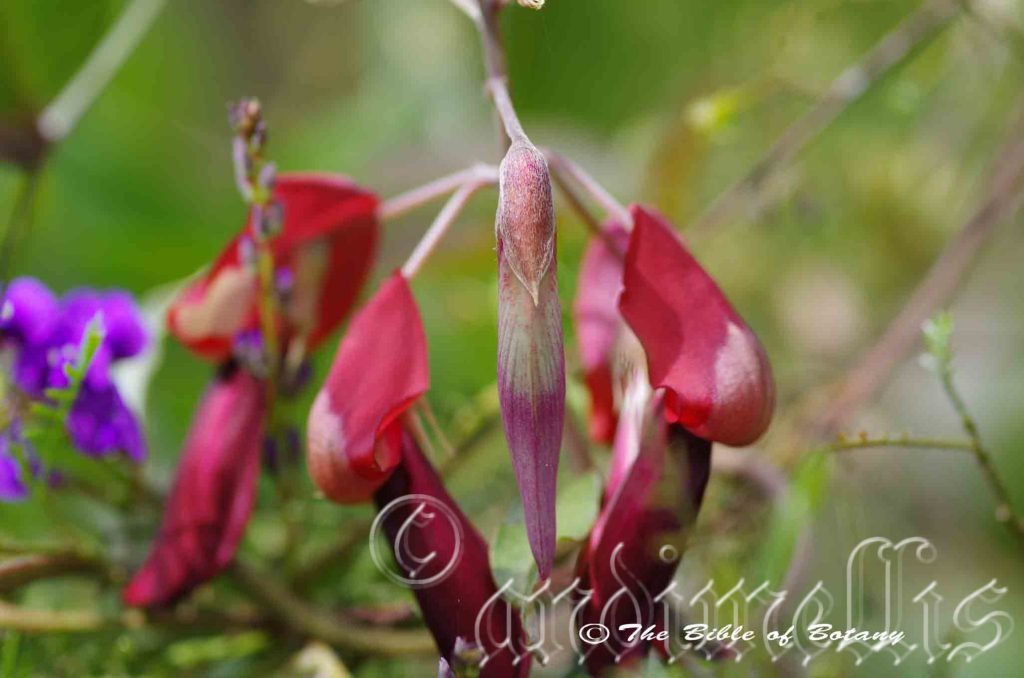
Townsville Qld.
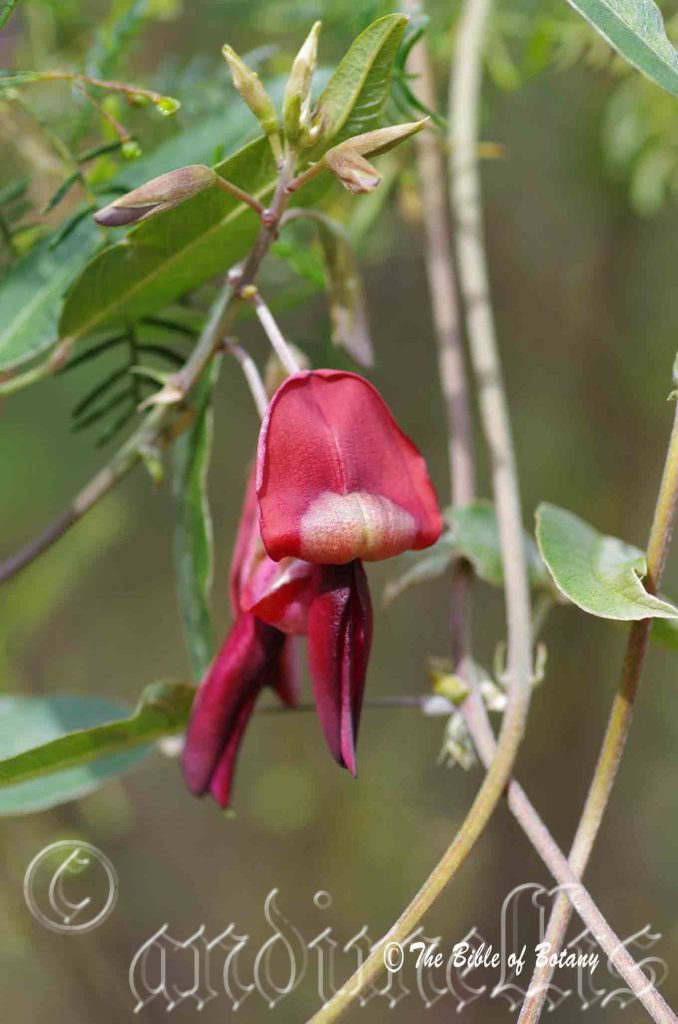
Townsville Qld.

Crescent Head NSW
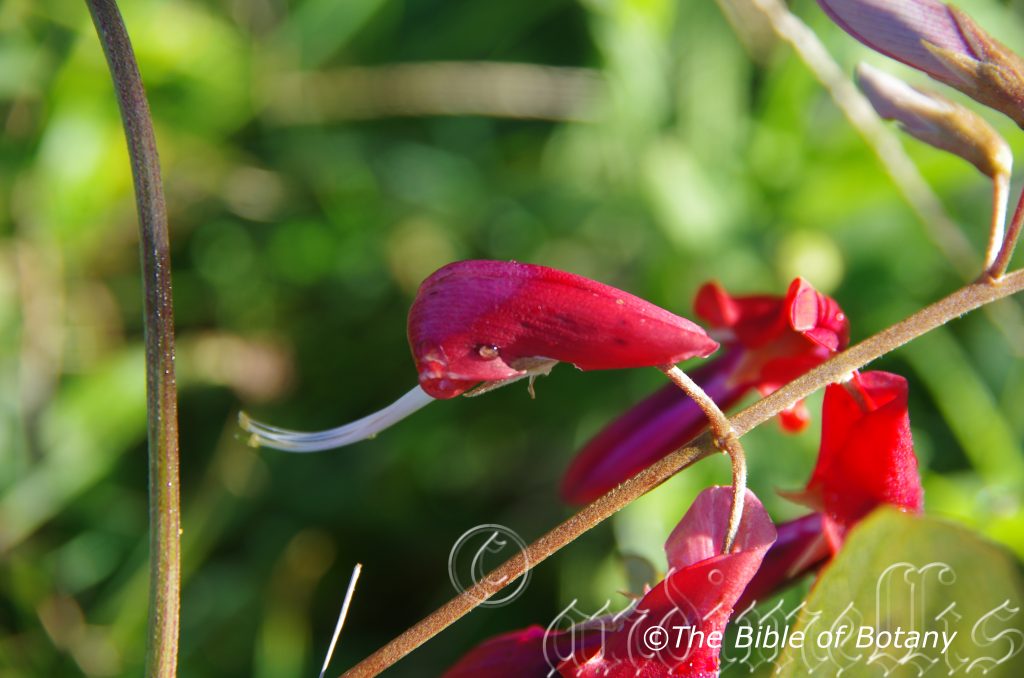
Crescent Head NSW
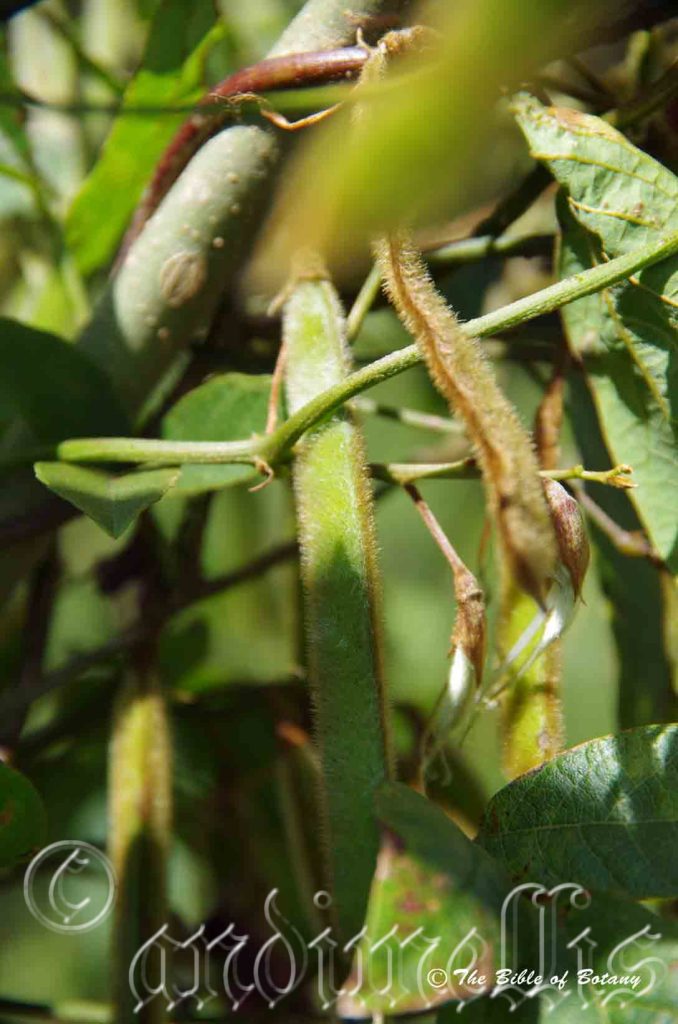
Laurieton NSW
Kennedia rubicunda
Classification:
Unranked:
Class:Rosids
Order: Fabales
Family: Fabaceae
Subfamily: Faboideae
Tribe: Phaseoleae
Genus: Is probably named in honour of Kennedy; 1818-1848, who was an Australian surveyor explorer but I cannot substantiate it.
Specie: From Rubicundus, which is Latin for deep red. It refers to organs usually the flowers, which are deep red in colour.
Sub species:
Common Name: Dusky Coral Pea.
Distribution:
Kennedia rubicunda is found south from Moore Park Beach in north eastern coastal Queensland to near Geelong in southern coastal Victoria.
https://avh.ala.org.au/occurrences/search?taxa=Kennedia+rubicunda#tab_mapView
Habitat Aspect Climate:
Kennedia rubicunda prefers full sun to light dappled shade. It grows on coastal dunes, along creek banks and adjacent to wallums and in dry woodland heaths, on headlands, adjacent to dry rainforests or Eucalyptus forests. The altitude ranges from 5 meters ASL to 1400 meters ASL.
The temperatures range from 3 degree in August to 37 degrees in January.
The rainfall ranges from lows of 600mm to an average of 2000mm.
Soil Requirements:
Kennedia rubicunda prefers skeletal to deep sands, sandy loams to medium gritty clays. The soils are derived from shale, brown basalts sandstones, accumulated beach sands or alluvial deposits close to the coast. The soils pH ranges from 5pH to 6pH are preferred. It does not tolerate waterlogged soils. Non saline soils to very saline soils are tolerated as are salt laden winds.
Height & Spread:
Wild Plants: 3m to 5m by 3m to 5m.
Characteristics:
Kennedia rubicunda’s grows as a small twinning climber or large prostrate ground cover with glabrous green stems. The young stems are green and sparsely to densely covered in rusty pubescent hairs.
Kennedia rubicunda’s alternate trifoliate leaves measure 100mm to 160mm in length over all. The ovate to broadly lanceolate or on rare occasions are orbicular leaflets measure 40mm to 120mm in length by 30mm to 80mm in width. The base is rounded while the apex is broad acute. The concolourous laminas are deep olive green, grass green to deep sea green and are glabrous to densely covered in rusty pubescent hairs. The mid vein is prominent on the lower lamina and is distinctly visible from above. The lanceolate stipules measure 2mm to 4.5mm in length. The petioles measure 75mm to 140mm in length while the petiolules measure 9mm to 24mm in length.
Kennedia rubicunda are racemes or peduncles which are born from the leaf axis. The pale green racemes measure 40mm to 60mm in length while the pale green peduncles measure 50 to 150mm in length. The pedicels measure 20mm to 70mm in length. There are 2 to 12 flowers per rachis. The olive-green caducous lanceolate bracts are covered in reddish-olive hirsute hairs and measure 3mm to 4mm in length. The pale olive-green calyx has 4 narrow acute lobes and is covered in reddish-olive hirsute hairs. The calyx measures 10mm to 15mm in length while the lobes measure 3mm to 4mm in length. The calyx is densely covered in rusty puberulent hairs. The coral red to brick red corolla measures 30mm to 40mm in length. The deep dusky red, narrow ovate, erect standards measure 30mm to 35mm in height by 12mm to 15mm wide near the base and 6mm to 9mm wide near the apex. The deep dusky red wings measure 35mm to 40mm in height by 5mm to 7mm in width. The purple red keel is partially exposed and measures 35mm to 40mm in height by 4mm to 6mm in width. The flowers appear from late July to mid-November.
Kennedia rubicunda’s fruits are long compressed pod. The pods measure 50mm to 100mm in length by 8mm to 10mm in diameter. The coriaceous pods are densely covered in rusty hirtellous hairs and turn a dull golden brown then deep grey-brown as they ripen. The 6 to 14 flattish, oblong seeds are brown and measure 4mm to 5mm in length by 3.5mm to 4mm in diameter.
Wildlife:
Kennedia rubicunda’s wildlife is unknown to the author.
Cultivation:
Kennedia rubicunda is suitable for medium and large sunny gardens close to the coast or inland in temperate sub-tropical areas, tropical or semi-arid zones especially where the soils are light sandy loams, light clays, medium clays or the clays are gravelly or rocky. As garden subjects they will grow to 5 meter to 6 meters in height by 5 meters to 6 meters in diameter. It is fast growing and are cold tolerant to temperatures as low as minus 2 degrees once established.
Kennedia rubicunda responds well to native fertilizers and will produce bigger flowers over a longer period when fertilized and watered when adverse weather conditions prevail. When grown in cultivation and fertilized on an annual basis in mid-autumn the flowering can be awesome in the following season.
It is a large vigorous creeper for sunny pergolas, along the beach side or arid area fences or hiding that unsightly chicken coop. It can be pruned on a regular basis to encourage a denser habit and a smaller climber
It is also suitable for planting on large banks as a stabilizer. It has quite an attractive coral red pea flowers with a paler purple blotch at the base of the standard.
Propagation:
Seeds: Kennedia rubicunda require treatment before sowing. Pre-treat by placing the seeds into a glass of hot water. Allow the water to cool and leave to soak for 10 hours. Seeds that have not swollen repeat the exercise.
Kennedia rubicunda’s seeds can be sown directly into a seed raising mix. Cover them with 5mm to 6mm of fine weed free mulch and keep moist. Place the tray in a warm sunny position. When the seedlings are 20mm to 30mm tall, prick them out and plant them into 50mm native tubes using a good organic mix.
Once the seedlings reach 100mm to 150mm in height they can be planted out into their permanent position.
Cuttings: Use 80mm to 120mm long half ripened or hard wood material when growing from cuttings from the present season’s growth. Take them in the warmer months of the year. Remove half the leaves from the bottom section being careful not to tear the bark. Take a 10mm slice off the bark from the bottom of the cutting on one side.
1 Prepare the cutting mix by adding one third sharp clean river sand, one third peat and one third perlite. These ingredients are sterilize,
2 Select good material from non-diseased plants,
3 Select semi green stems for cuttings. Look for a stem with two or three nodes,
4 Place the cutting on a flat, hard surface, and make a clean cut down one side of the cutting at the base for 10mm with a sharp sterile knife or razor blade. – This scarification of the node will increase the chances of roots emerging from this spot. Now remove all but one or two the leaves, leaving the apex leaves in tact. If the leaves are very large in proportion to the stem, cut off the apical halves.
5 Fill a saucer with water, and place a little weak strength rooting hormone into another container like a milk bottle top. Dip the node end of the cutting into the water and then into the rooting hormone. Tap off any excess hormone,
6 Use a small dipple stick or old pencil to poke a hole into the soilless potting mix. Ensure the hole is slightly larger than the stem diameter and be careful not to wipe the rooting hormone off the cuttings base, place the cuttings in a pattern ensuring the cuttings are not touching each other,
7 I like to place the pots in Plastic bags to help maintain temperature and moisture. Place in a semi shaded place like under 50mm shade cloth.
8 When the cuttings have struck, open the bag to allow air circulation for a few days to a week,
9 Once hardened off remove the cuttings from the bag and allow to further hardening for a few more days,
10 Transplant into a good potting mix to grow on.
Further Comments from Readers:
Hi reader, it seems you use The Bible of Botany a lot. That’s great as we have great pleasure in bringing it to you! It’s a little awkward for us to ask, but our first aim is to purchase land approximately 1,600 hectares to link several parcels of N.P. into one at The Pinnacles NSW Australia, but we need your help. We’re not salespeople. We’re amateur botanists who have dedicated over 30 years to saving the environment in a practical way. We depend on donations to reach our goal. If you donate just $5, the price of your coffee this Sunday, We can help to keep the planet alive in a real way and continue to bring you regular updates and features on Australian plants all in one Botanical Bible. Any support is greatly appreciated. Thank you.
In the spirit of reconciliation we acknowledge the Bundjalung, Gumbaynggirr and Yaegl and all aboriginal nations throughout Australia and their connections to land, sea and community. We pay our respect to their Elders past, present and future for the pleasures we have gained.
Kopsia arborea
Classification:
Unranked: Eudicots
Class:Asterids
Order: Gentianales
Family: Apocyanaceae
Subfamily: Faboideae
Genus Is named in honour of Jan Kops; 1765-1849, who was a Dutch botanist.
Specie: From Arborescent, which is Latin for a tree. It refers to plants, which have a typical tree like structure.
Sub species:
Common Name:
Distribution:
Kopsia arborea is found south along the coast in far North Queensland from Cooktown to Ingham.
There is also an outlying population north of Darwin in the Northern Territory.
https://avh.ala.org.au/occurrences/search?taxa=Kopsia+arborea#tab_mapView
Habitat Aspect Climate:
Kopsia arborea prefers full sun to light dappled shade. It grows on coastal slopes, hills in littoral rainforests, monsoonal vine forests or Eucalyptus woodlands close to the coast. The altitude ranges from 5 meters ASL to 200 meters ASL.
The temperatures range from 10 degree in August to 35 degrees in January.
The rainfall ranges from lows of 1250mm to an average of 3000mm.
Soil Requirements:
Kopsia arborea prefers sands, sandy loams to medium clays. The soils are derived from brown basalts or accumulated peaty sands. The soils pH ranges from 5pH to 7pH are preferred. It does not tolerate waterlogged soils. Non saline soils to moderately saline soils are tolerated as are salt laden winds.
Height & Spread:
Wild Plants: 8m to 14m by 4m to 6m.
Characteristics:
Kopsia arborea’s grows as a small tree with a pale grey, glabrous trunk. The branchlets are grass-green to deep green, semi glossy and glabrous. All parts of the plant produce a white milky fluid.
Kopsia arborea’s alternate, narrow elliptical to lanceolate leaves measure 100mm to 200mm in length by 50mm to 80mm in width. The bases are cuneate while the apexes are acute. The laminas are concolourous with the laminas being grass green to deep sea green and glabrous. The margins are entire, undulating and curve upwards from the mid vein. The mid vein is slightly prominent on the lower lamina and is faintly visible from above. The base of the petioles has numerous stiff pale brown hirsute hairs. The petioles measure 1mm to 2mm in length.
The inflorescences of Kopsia arborea are cymes which are born terminally. There are 5 to 12 flowers to a cymae. The 5 pale creamy green sepal lobes are triangular and covered in white fimbriate hairs. They measure 1.5mm to 2mm in length. The flowers measure 25mm to 32mm in diameter. The corolla is white externally and white or pale pink to rose pink internally. The corolla is glabrous externally and sparsely covered in white pulverulent hairs internally near the opening. The corolla measures 24mm to 28mm in length by 2mm to 3mm in diameter. The 5 oblong glabrous lobes measure 14mm to 17mm in length by 3.5mm to 4mm in width.
The 5 white or rose coloured stamens are inserted and are joined to the corolla tube just below the opening. The anthers and pollen are white. The single erect style is centrally located on the disc and measures 24mm to 28mm in length. The faintly, sweetly scented flowers appear from late August to mid-November.
Kopsia arborea’s fruit is an ellipsoidal drupe. The single locular capsules measure 20mm to 30mm in length by 8mm to 16mm in diameter. The glaucous drupes turn purple black when ripe. The single grey seed measures 19mm to 29mm in length by 7mm to 15mm in diameter. In favourable wet seasons the seeds will germinate while still attached to the tree.
Wildlife:
Kopsia arborea’s wildlife is unknown to the author.
Cultivation:
Kopsia arborea is an ideal small well shaped, slowly growing tree, which is being introduced into cultivation. It has been ignored in the past because of a preconception that it may grow into a tall rainforest tree when in fact it is rather small. It is suitable for small, medium and large sunny gardens close to the coast or inland in temperate subtropical areas or semi-arid zones especially where the soils are well drained, poor to fertile sandy to medium clay. As a garden subject it grows from 4 meters to 6 meters high by 4 meters to 5 meters in diameter when grown in the open as a single trunk tree. It is moderately slow growing and is cold tolerant to temperatures at least as low as 2 degrees so should be tried further south to at least Coffs Harbour in frost free zones.
It is most suitable for use adjacent to pathways, rockeries, along sandy clay banks or along drive ways or adjacent to natural bush gardens. Mass plantings of 5 or more plants in a row can make a beautiful formal back drop or make a garden very private. The magnificent flowers are a real bonus on this plant and can be used indoors as a cut flower though they only last for a few days.
Six or more planted back from a bend will become a very strong focal point when in flower gain a lot of attention whether you are coming or going because of the fresh clean look of the foliage even in the driest of times. It can be regularly tip pruned if a shrub is required. It responds well to pruning recovering quickly and often increasing the number of flowers in the following season. Place it in the background with other large leaf ground covers with very small shrubs in front. Plants with white, pastel pinks and purples purple flowers can be used in front as they will give greater depth to the garden. This will lead the viewer’s eyes directly to the profusion of beautiful large white flowers.
It is ideal for street planting, and minor roads, especially where the planting verge is narrow and along park drives and walkways due to its compact size and habit.
When it is in flower it is an attention seeker. Plant it at 7 meter centers for a forest scene or around 12 meter centers for an avenue look.
Propagation:
Seeds: Sow the fresh seeds of Kopsia arborea directly into a seed raising mix in 50mm native tubes. Only use fresh seed as germination viability is short. Cover them with 5mm to 10mm of fine weed free mulch and keep moist. Place the tray in a warm sunny position. When the seedlings are 120mm to 150mm tall, they can be planted out into their permanent position.
Fertilize using seaweed, fish emulsion or organic chicken pellets soaked in water on an alternate basis. Fertilize every two months until the plants are established then twice annually in early September or March to maintain health, vitality and better flowering.
Further Comments from Readers:
Hi reader, it seems you use The Bible of Botany a lot. That’s great as we have great pleasure in bringing it to you! It’s a little awkward for us to ask, but our first aim is to purchase land approximately 1,600 hectares to link several parcels of N.P. into one at The Pinnacles NSW Australia, but we need your help. We’re not salespeople. We’re amateur botanists who have dedicated over 30 years to saving the environment in a practical way. We depend on donations to reach our goal. If you donate just $5, the price of your coffee this Sunday, We can help to keep the planet alive in a real way and continue to bring you regular updates and features on Australian plants all in one Botanical Bible. Any support is greatly appreciated. Thank you.
In the spirit of reconciliation we acknowledge the Bundjalung, Gumbaynggirr and Yaegl and all aboriginal nations throughout Australia and their connections to land, sea and community. We pay our respect to their Elders past, present and future for the pleasures we have gained.
Korthalsella rubra
Classification
Unranked: Eudicots
Class:Asterids
Order: Gentianales
Family: Apocyanaceae
Subfamily: Faboideae
Genus Is named in honour of Pieter Willem Korthalas; 1807-1892, who was a Dutch explorer and botanist who studied the flora of the West Indies.
Specie: From Rubens, which is Latin for reddish. It refers to organ/s which have a reddish colour.
Sub species: Karthalsella rubra subsp. geijericola. From Geijeri which is unknown and Kola, which is Ancient Greek or Cola which is Latin for to dwell or reside at.
Sub species: Karthalsella rubra subsp. rubra. From Rubens, which is Latin for reddish. It refers to organ/s which have a reddish colour.
Common Name:
Distribution:
karthalsella rubra subsp. rubra is found south from Cape York Peninsula in far north eastern Queensland to Glenaladale National Park in coastal eastern Victoria. It is mainly found on and east of the Great Dividing Range.
karthalsella rubra subsp. geijericola is found south of Injune in central Queensland to Moulamein in far southern central New South Wales. It is mainly found on the Western slopes and on the Great Dividing Range with a few disjunct populations along the coast. There is also an isolated population on Lord Howe Island.
https://avh.ala.org.au/occurrences/search?taxa=Korthalsella+rubra#tab_mapView
Habitat Aspect Climate:
Karthalsella rubra prefers full sun to light dappled shade. It grows on coastal and western slopes and hills as a parasite on various rainforest trees or woodland trees. The altitude ranges from 50 meters ASL to 1500 meters ASL.
The temperatures range from 10 degree in August to 35 degrees in January.
The rainfall ranges from lows of 1250mm to an average of 3000mm.
Soil Requirements:
Karthalsella rubra prefers sandy loams to medium clays. The soils are derived from brown basalts, granites, sandstones or accumulated peaty sands. The soils pH ranges from 5.5pH to 7pH are preferred. It does not tolerate waterlogged soils. Non saline soils to moderately saline soils are tolerated.
Height & Spread:
Wild Plants: 0.1m to 0.2m by 0.2m to 0.4m.
Characteristics:
Karthalsella rubra’s grows as a parasite with flat pale grey-green to mid green stems. The glabrous stems branch several times from the lower nodes with the unbranched extremities having 4 to 12 internodes. The stems are usually transversely positioned to the parent stem. The internodes are contracted at the ends and are strongly articulated at the nodes. The internodes measure 10mm to 18mm in length by 3mm to 8mm in width. The bases are narrow cuneate or attenuate.
Karthalsella rubra’s leaves are absent or very small and measure 0.5mm to 1mm in length by 0.4mm to 0.8mm in width.
The inflorescence of Karthalsella rubra are listed below in detail under subspecies differences.
The fruits are ellipsoidal drupes. The drupes measure 1.5mm to 2mm length. The perianth remnants are persistent at the apex of the ripe fruits. The fruits are produced in clusters on the upper side of the nodes and are interspersed with fawn hirtellous hairs. The small black seeds are immersed in a sticky, gelatinous mucilage and measure 0.5mm to 0.8mm in length.
Confusing Sub Specie Varieties:
Karthalsella rubra subsp. geijericola’s floral cushions protrude in older and are longer than those flowers in younger inflorescences. The inflorescences are densely covered in white hirsute hairs. The minute leaves are produced around the flower clusters. The acute, tapering leaves measure 0.5mm in length at outer edge of floral cushion and measure 0.2 mm at the inner limit and extend onto the margins of the internodes between the flower clusters. It has a preference for Geijera parviflora as its host. The flowers appear throughout the year.
Karthalsella rubra subsp. rubra’s floral cushions do not protrude and are sparsely covered in long reddish hirsute hairs which are usually in a single row between flowers. The rudimentary leaves measure 0.5mm to 1mm in length. The membranous leaves apexes are usually obtuse and are continuous around the edge of the nodes and fused to face of internodes. The flowers completely encircle the nodes before anthesis and separate as the internodes expand. It is nonspecific in its choices of host trees and parasitizes a wide range of rainforest and wet sclerophyll forest trees. The flowers usually appear from September to early December.
Wildlife:
Karthalsella rubra’s is the major food source for the larval stage of the Yellow-spotted Jezabel Butterfly, Delias nysa nysa. The fact that the seeds are contained in a sweet gelatinous, yet mucilage substance indicates that the seeds are distributed by small birds or small mammals which may include the little sugar glider, Petaurus breviceps.
Cultivation:
Karthalsella rubra is a very unusual succulent type plant that deserve a chance in cultivation but until it has been successfully propagated will elude the home gardener.
Propagation:
Seeds: Karthalsella rubra propagation methods are unknown to the author.
Further Comments from Readers:
Hi reader, it seems you use The Bible of Botany a lot. That’s great as we have great pleasure in bringing it to you! It’s a little awkward for us to ask, but our first aim is to purchase land approximately 1,600 hectares to link several parcels of N.P. into one at The Pinnacles NSW Australia, but we need your help. We’re not salespeople. We’re amateur botanists who have dedicated over 30 years to saving the environment in a practical way. We depend on donations to reach our goal. If you donate just $5, the price of your coffee this Sunday, We can help to keep the planet alive in a real way and continue to bring you regular updates and features on Australian plants all in one Botanical Bible. Any support is greatly appreciated. Thank you.
In the spirit of reconciliation we acknowledge the Bundjalung, Gumbaynggirr and Yaegl and all aboriginal nations throughout Australia and their connections to land, sea and community. We pay our respect to their Elders past, present and future for the pleasures we have gained.
Kunzea affinis
Classification:
Unranked: Eudicots
Class:Rosids
Order: Myrtales
Family: Myrtaceae
Genus Is named in honour of Gustav Kunz; 1793-1851, who was a German botanist who worked on Australian plants from Preiss.
Specie: From affinis, which is Latin for being allied to another species. It refers to plants, which resemble another specie in the genus.
Sub species:
Common Name: Tick Bush.
Distribution:
Kunzea affinis is endemic to Western Australia, east from Albany to Cape Arid National Park.
https://avh.ala.org.au/occurrences/search?taxa=Kunzea+affinis#tab_mapView
Habitat Aspect Climate:
Kunzea affinis prefers full sun to light dappled shade. It grows on granite outcrops and ridges in dry sclerophyll forests and heaths. The altitude ranges from 5 meters ASL to 120 meters ASL.
The temperatures range from 4 degree in August to 36 degrees in January.
The rainfall ranges from lows of 400mm to an average of 700mm.
Soil Requirements:
Kunzea affinis prefers loams to light fatty sands. The soils are usually derived from granites. The soils pH ranges from 5pH to 6pH are preferred. It does not tolerate waterlogged soils. Non saline soils to moderately saline soils are tolerated.
Height & Spread:
Wild Plants: 0.3m to 2m by 0.5m to 1.5m.
Characteristics:
It grows as a small erect shrub with pale grey-brown, glabrous or slightly scabrous stems. The stems are pale olive green and glabrous.
Kunzea affinis‘ crowded, linear leaves measure 5mm to 8mm in length by 0.8mm to 1mm in width. The base tapers to the point of attachment and is sessile while the apex is narrowly acute. The concolourous laminas are bright grass-green when they first emerge turning to deep sea green as they age. The margins are entire and are recurved at the apex. The mid vein is slightly prominent on the lower lamina and is not visible from above.
The inflorescence of Kunzea affinis are sessile and are born singularly from the leaf axils. The 5 pale creamy green caduceous sepals are narrow triangular and measure 1.5mm to 2mm in length. The flowers measure 18mm to 22mm in diameter. The 5 oval to semicircular, deep rose pink petals, measure 6mm to 8mm in length by 6mm to 8mm in width. The 25 deep rose pink stamens are attached on the rim of the glabrous hypanthium and have cream or yellow anthems. The stamens measure 7mm to 9mm in length. The single stout, erect deep rose pink style is centrally located on the lime green disc and measures 7mm to 9mm in length. The flowers appear from late August to October.
Its fruit is a globose capsule. The capsules turn a dull grey prior to dehiscing. The numerous small seeds are red-brown.
Wildlife:
Kunzea affinis’s flowers are popular amongst small nectar feeding birds, native bees and many different specie of the colourful soldier beetles Cantharidae specie.
Cultivation:
Kunzea affinis are beautiful clean small native shrubs that are frequently overlooked by gardeners because of their spindly appearance in pots or a pre conception that they look weedy and common when in fact it is magnificent when in flower. It is suitable for small, medium and large sunny gardens close to the coast or inland in temperate or semi-arid zones especially where the soils are well drained, poor and sandy. As garden subjects it will grow from 0.5 meter to 1 meter in height by 0.8 meters to 1 meter in diameter with several shoots extending beyond 1.5 meters particularly when flowering commences. It is fast growing and are cold tolerant to temperatures as low as minus 2 degrees once established.
It is most suitable for use adjacent to pathways, rockeries, along sandy clay banks, around swimming pools or along drive ways or adjacent to natural bush gardens. Mass plantings of 3 or more plants even in small areas; really do the plants justification especially when it is in flower.
Six or more planted back from a bend will become a very strong focal point when in flower, gaining a lot of attention whether you are coming or going because of the fresh clean look of the foliage even in the driest of times. It can be regularly tip pruned if a smaller shrub is required. It responds well to pruning recovering quickly. An annual application of native fertilizer will enhance flowering even further.
Place it in the fore ground with other large leaf ground covers and very small shrubs next to them. To the rear, use large leaf taller plants. Plants with white, cream or deep red flowers can be used in both the mid ground and background. Do not use a lot of colour at the time when these plants flower as you want all the attention on them, so select plants that flower at different times of the year.
It is ideal subjects to add colour to a heath garden. When you design a flat heath garden don’t use contours to display the plants as heath lands are almost always flat or have a slight rise. Plants must be planted close together and be short so you can see over the tallest ones with the exception of one or two plants at the most. These will be feature plants. The idea is to achieve a feeling of expansive flatness. This can be achieved with using the Kunzea affinis‘ deep green linear leaves and having them contrasting finer pale green or soft grey to glaucous coloured foliages. Use a lot of procumbent plants like Hibbertia specie, Leschenaultia biloba or Leschenaultia formosa. Mix them with other smaller shrubs so none of them dominate the scene but blend in to give a mosaic of foliage colours that you oversee. Here Actinotis helianthi and Grevillea repens represent plants with two great contrasting foliages.
Propagation:
Seeds: Kunzea affinis seeds can be sown directly into a seed raising mix. Cover them with 5mm to 6mm of fine weed free mulch and keep moist. Place the tray in a warm sunny position. When the seedlings are 20mm to 30mm tall, prick them out and plant them into 50mm native tubes using a good organic mix.
Once the seedlings reach 100mm to 150mm in height they can be planted out into their permanent position.
Cuttings: Seedling plants can be very variable in the profusion and depth of flower colour and the height and width so to ensure the properties you desire, select plant material from the best plants and those that suit your particular requirements.
Use 100mm long half ripened material when growing from cuttings from the present season’s growth. Take them in warmer months of the year. Remove half the leaves from the bottom section being careful not to tear the bark. Take a 10mm slice off the bark from the bottom of the cutting on one side.
1 Prepare the cutting mix by adding one third sharp clean river sand, one third peat and one third perlite. These ingredients are sterilize,
2 Select good material from non diseased plants,
3 Select semi green stems for cuttings. Look for a stem with two or three nodes,
4 Place the cutting on a flat, hard surface, and make a clean cut down one side of the cutting at the base for 10mm with a sharp sterile knife or razor blade. – This scarification of the node will increase the chances of roots emerging from this spot. Now remove all but one or two the leaves, leaving the apex leaves in tact. If the leaves are very large in proportion to the stem, cut off the apical halves.
5 Fill a saucer with water, and place a little medium strength rooting hormone into another container like a milk bottle top. Dip the node end of the cutting into the water and then into the rooting hormone. Tap off any excess hormone,
6 Use a small dipple stick or old pencil to poke a hole into the soilless potting mix. Ensure the hole is slightly larger than the stem diameter and be careful not to wipe the rooting hormone off the cuttings base, place the cuttings in a pattern ensuring the cuttings are not touching each other,
7 I like to place the pots in Plastic bags to help maintain temperature and moisture. Place in a semi shaded place like under 50mm shade cloth.
8 When the cuttings have struck, open the bag to allow air circulation for a few days to a week,
9 Once hardened off remove the cuttings from the bag and allow to further hardening for a few more days,
10 Transplant into a good potting mix to grow on.
Fertilize using seaweed, fish emulsion or organic chicken pellets soaked in water on an alternate basis. Fertilize every two months until the plants are established then twice annually in early September or March to maintain health, vitality and better flowering.
Further Comments from Readers:
Hi reader, it seems you use The Bible of Botany a lot. That’s great as we have great pleasure in bringing it to you! It’s a little awkward for us to ask, but our first aim is to purchase land approximately 1,600 hectares to link several parcels of N.P. into one at The Pinnacles NSW Australia, but we need your help. We’re not salespeople. We’re amateur botanists who have dedicated over 30 years to saving the environment in a practical way. We depend on donations to reach our goal. If you donate just $5, the price of your coffee this Sunday, We can help to keep the planet alive in a real way and continue to bring you regular updates and features on Australian plants all in one Botanical Bible. Any support is greatly appreciated. Thank you.
In the spirit of reconciliation we acknowledge the Bundjalung, Gumbaynggirr and Yaegl and all aboriginal nations throughout Australia and their connections to land, sea and community. We pay our respect to their Elders past, present and future for the pleasures we have gained.
Kunzea ambigua
Classification:
Unranked: Eudicots
Class:Rosids
Order: Myrtales
Family: Myrtaceae
Subfamily: Faboideae
Genus Is named in honour of Gustav Kunz; 1793-1851, who was a German botanist who worked on Australian plants from Preiss.
Specie: From ambiguous, which is Ancient Greek for uncertainty or confusion. It refers to plants, which display similar properties to other species in the genre, causing confusion when trying to identify them.
Sub species:
Common Name: Tick Bush.
Distribution:
Kunzea ambigua is found in New South Wales south from Sydney to Orbost in Victoria. There are a number of disjunct populations further south including Wilson’s Promontory, the eastern Islands in Bass Strait including Flinders Island and from George Town in central northern Tasmania south to Sorell.
https://avh.ala.org.au/occurrences/search?taxa=Kunzea+ambigua#tab_mapView
Habitat Aspect Climate:
Kunzea ambigua prefers full sun to light dappled shade. It grows on coastal slopes and hills in dry sclerophyll forests and particularly open woodland heaths on headlands. The altitude ranges from 5 meters ASL to 350 meters ASL.
The temperatures range from minus 3 degrees in August to 35 degrees in January.
The rainfall ranges from lows of 500mm to an average of 1200mm.
Soil Requirements:
Kunzea ambigua prefers on better quality sandy loams to light clays. The soils are usually derived from decomposed sandstones or granites. The soils pH ranges from 5pH to 6.5pH are preferred. It does not tolerate waterlogged soils. Non saline soils to moderately saline soils are tolerated.
Height & Spread:
Wild Plants: 1.5m to 3.5m by 1.5m to 2m.
Characteristics:
It grows as a tall, erect multi stemmed shrub with pale grey, glabrous stems. The stems turn pale tan with a pale pink tinge and are densely covered in white villous hairs. The branchlets are pendulous towards the ends.
Kunzea ambigua’s alternate, linear to narrow lanceolate leaves measure 4mm to 12mm in length by 1mm to 1.5mm in width. The base tapers to the point of attachment and is sessile or has a short petiole to 0.5mm in length while the apex is narrow acute. The concolourous laminas are grass green to deep sea green and are glabrous to sparsely covered in white puberulent. The margins are entire and flat. The mid vein is slightly prominent on the lower lamina and is faintly visible from above.
The inflorescence of Kunzea ambigua are sessile, are born singularly from the leaf axis or rarely crowded on leafy side shoots. The hypanthium is sparsely covered in white villous hairs. The 5 pale creamy green sepals are narrowly triangular and measure 1.5mm to 2mm in length. The white to pale cream flowers measure 6.5mm to 8mm in diameter. The 5 oval to semicircular petals are white or cream and measure 1.5mm to 2mm in length by 2mm to 2.5mm in width.
The 40 to 50 white or cream stamens are united at the base and are attached on the rim of the hypanthium. The stamens measure 3mm to 5mm in length. The anthers are white or cream while the pollen is cream. The single erect style is centrally located on the disc and measures 5mm in length. The honey scented flowers appear from late August in the north to late February in the south.
Kunzea ambigua‘s fruit is a globose capsule. The sepals are persistent on the 3 or occasionally 4 locular capsules which measure 2.5mm to 3.5mm in length by 3mm to 4mm in diameter. The capsules turn a dull grey prior to dehiscing. The numerous small seeds are red-brown.
Wildlife:
Kunzea ambigua‘s flowers are popular amongst small nectar feeding birds, native bees and many different specie of the colourful soldier beetles Cantharidae.
Cultivation:
Kunzea ambigua is a beautiful clean small native shrub that are frequently overlooked by gardeners because of their spindly appearance in pots or a pre conception that they look weedy and common when in fact it is magnificent in flower. It is suitable for small, medium and large sunny gardens close to the coast or inland in temperate, sub-tropical areas or semi-arid zones especially where the soils are well drained, poor and sandy but at the same time have good moisture retaining qualities. As garden subjects it will grow from 3 meters to 4.5 meters in height by 2.5 meters to 4.5 meters in diameter when grown in the open. It is fast growing and are cold tolerant to temperatures as low as minus 4 degrees once established.
It is most suitable for use adjacent to pathways, rockeries, along gravelly clay banks, hedges and screens or along drive ways or adjacent to natural bush gardens. Mass plantings of 3 or more plants even in small areas; really do the plants justification especially when it is in flower.
Six or more planted back from a bend will become a very strong focal point when in flower gain a lot of attention because of the fresh clean look of the foliage even in the driest of times. It can be regularly tip pruned if a smaller shrub is required. It responds well to pruning recovering quickly and often increasing the number of flowers in the following season. Place them in the mid ground with other large leaf ground covers and small shrubs in the foreground. To the rear, use large leaf taller plants. Plants with deep pink, orange, deep red or deep purple flowers can be used in both the foreground and background. This will lead the viewer’s eyes directly to the abundance of beautiful cream flowers.
Ensure that the whole plant or at least most of it is on display from most sections of the garden as the flowers are a real bonus.
When it is in flower these plants will catch your attention and the viewer will be transfixed on the display rather than watching the path. Plant them at 0.8 meter to 1 meter centers.
Used as screens they can form impenetrable barriers. There is a deep pink variety in cultivation which grows slightly smaller to 3 meters and when mixed with the white variety would look really spectacular. Mass plant them at 2 meters to 2.5 meter centers for something really special.
It is most suitable for use adjacent to pathways, rockeries, along sandy clay banks or along drive ways or adjacent to natural bush gardens. Mass plantings of 5 or more plants in a row can make a beautiful formal back drop or make a garden very private. The magnificent flowers are a real bonus on this plant. To add colour and depth to the garden, think of using other dwarf, pink flowering Kunzea specie or Hovea specie; for a vivid contrast in both flower colour and foliage types, in the foreground for a spectacular display. Here curves can replace the formal look.
Kunzea ambigua reacts beautifully to pruning so topiary work can be used to create beautiful gnarled, twisted shapes with the added colour of the dwarf pink flowering Kunzea below or if desired reverse the picture.
It could make an excellent bonsai specimens and are very easy to work and are hardy.
Propagation:
Seeds: Kunzea ambigua seeds can be sown directly into a seed raising mix. Cover them with 5mm to 6mm of fine weed free mulch and keep moist. Place the tray in a warm sunny position. When the seedlings are 20mm to 30mm tall, prick them out and plant them into 50mm native tubes using a good organic mix.
Once the seedlings reach 100mm to 150mm in height they can be planted out into their permanent position.
Cuttings: Seedling plants can be very variable in the profusion and depth of flower colour, height and width so to ensure the properties you desire select plant material from the best plants and those that suit your particular requirements.
Use 100mm long half ripened material when growing from cuttings from the present season’s growth. Take them in warmer months of the year. Remove half the leaves from the bottom section being careful not to tear the bark. Take a 10mm slice off the bark from the bottom of the cutting on one side.
1 Prepare the cutting mix by adding one third sharp clean river sand, one third peat and one third perlite. These ingredients are sterilize,
2 Select good material from non diseased plants,
3 Select semi green stems for cuttings. Look for a stem with two or three nodes,
4 Place the cutting on a flat, hard surface, and make a clean cut down one side of the cutting at the base for 10mm with a sharp sterile knife or razor blade. – This scarification of the node will increase the chances of roots emerging from this spot. Now remove all but one or two the leaves, leaving the apex leaves in tact. If the leaves are very large in proportion to the stem, cut off the apical halves.
5 Fill a saucer with water, and place a little medium strength rooting hormone into another container like a milk bottle top. Dip the node end of the cutting into the water and then into the rooting hormone. Tap off any excess hormone,
6 Use a small dipple stick or old pencil to poke a hole into the soilless potting mix. Ensure the hole is slightly larger than the stem diameter and be careful not to wipe the rooting hormone off the cuttings base, place the cuttings in a pattern ensuring the cuttings are not touching each other,
7 I like to place the pots in Plastic bags to help maintain temperature and moisture. Place in a semi shaded place like under 50mm shade cloth.
8 When the cuttings have struck, open the bag to allow air circulation for a few days to a week,
9 Once hardened off remove the cuttings from the bag and allow to further hardening for a few more days,
10 Transplant into a good potting mix to grow on.
Fertilize using seaweed, fish emulsion or organic chicken pellets soaked in water on an alternate basis. Fertilize every two months until the plants are established then twice annually in early September or March to maintain health, vitality and better flowering.
Further Comments from Readers:
Hi reader, it seems you use The Bible of Botany a lot. That’s great as we have great pleasure in bringing it to you! It’s a little awkward for us to ask, but our first aim is to purchase land approximately 1,600 hectares to link several parcels of N.P. into one at The Pinnacles NSW Australia, but we need your help. We’re not salespeople. We’re amateur botanists who have dedicated over 30 years to saving the environment in a practical way. We depend on donations to reach our goal. If you donate just $5, the price of your coffee this Sunday, We can help to keep the planet alive in a real way and continue to bring you regular updates and features on Australian plants all in one Botanical Bible. Any support is greatly appreciated. Thank you.
In the spirit of reconciliation we acknowledge the Bundjalung, Gumbaynggirr and Yaegl and all aboriginal nations throughout Australia and their connections to land, sea and community. We pay our respect to their Elders past, present and future for the pleasures we have gained.
Kunzea bracteolata
Classification:
Unranked: Eudicots
Class:Rosids
Order: Myrtales
Genus Is named in honour of Gustav Kunz; 1793-1851, who was a German botanist who worked on Australian plants from Preiss.
Specie: From Bractea, which is Latin for a thin plate of shiny metal. It refers to special type of leaves, which surround the flower or on the pedicel and are further from the flower when there are bracteoles.
Sub species:
Common Name:
Distribution:
Kunzea bracteolata is restricted to a small area endemic to far south eastern Queensland and far north eastern New South Wales on the Granite belt bounded by Stanthorpe, the Gibraltar Range National Park, the upper head waters of the Clarence Valley, the Guy Fawkes River National Park and Torrington.
https://avh.ala.org.au/occurrences/search?taxa=Kunzea+bracteolata#tab_mapView
Habitat Aspect Climate:
Kunzea bracteolata prefers full sun to light dappled shade. It grows among boulders and open dry heaths in open woodlands and open Eucalyptus forests. The altitude ranges from 800 meters ASL to 1300 meters ASL.
The temperatures range from minus 4 degrees in August to 35 degrees in January.
The rainfall ranges from lows of 650mm to an average of 900mm.
Soil Requirements:
Kunzea bracteolata prefers skeletal to shallow course, white sands trapped between boulders to deeper white or grey sandy loams over the parent rock in shallow depressions. The soils are derived from granite. The soils pH ranges from 5.5pH to 6pH are preferred. It does not tolerate waterlogged soils. Non saline soils to moderately saline soils are tolerated.
Height & Spread:
Wild Plants: 1m to 1.5m by 0.8m to 1.5m.
Characteristics:
Kunzea bracteolata’s grows as a small shrub with pale grey, glabrous stems that are often twisted into gnarled shapes by the wind. The young stems are pale reddish-fawn to red-brown, semi glossy and are sparsely covered in white puberulent or villous hairs near their apexes.
Kunzea bracteolata’s clustered or whirls when young growing out to be sub opposite, alternate or at right angles. The linear to narrow elliptical leaves measure 4mm to 9mm in length by 1.5mm to 2.5mm in width. The bases are slightly tapering while the apexes are acute. The concolourous laminas are grass-green to mid grey-green and are glabrous. The laminas recurve slightly upwards from the mid vein to the margins and decurve downwards on the apical third while the margins are entire. The mid vein is slightly prominent on the upper lamina and is not visible on the lower lamina. The lemon-green petioles measure 0.5mm to 0.8mm in length.
The inflorescences of Kunzea bracteolata are born in small sessile clusters at the terminals or from short lateral shoots which grow out shortly after anthesis. There are 2 to 16 individual flowers in a cluster. The hypanthium is smooth, pale green and sparsely covered in short, white puberulent hairs. The 5 pale green sepals are triangular and measure 1.5mm to 2mm in length. The white, ovate petals measure 1mm to 1.5mm in length by 2mm to 3mm in width.
The 30 to 40 white filiform stamens measure 4mm to 5mm in length while the pale yellow anthers are ovate to oblong. The ovary is usually triloculare or at times 4 locular with an axil placenta. The white style measures 4mm to 5mm in length. The flowers appear from mid-August to mid-November.
Kunzea bracteolata’s fruits are conical 3 locular capsules. The capsules measure 3mm to 4.5mm in length by 3mm to 3.5mm in diameter. The capsules turn a dull grey-brown prior to dehiscing. The numerous small seeds are red-brown.
Wildlife:
Kunzea bracteolata Flowers are popular amongst small nectar feeding birds, native bees and many different specie of the colourful soldier beetles Cantharidae.
Cultivation:
Kunzea bracteolata are beautiful clean small native shrubs that are frequently overlooked by gardeners because of their spindly appearance in pots or a preconception that it looks weedy and common when in fact it like all Kunzea species looks magnificent when in flower. It is suitable for small, medium and large sunny gardens close to the coast or inland in temperate sub-tropical areas or semi-arid zones especially where the soils are well drained, poor and sandy. As garden subjects it will grow from 1 meter to 1.5 meters in height by 1 meter to 2 meters in diameter when grown in the open. It is fast growing and are cold tolerant to temperatures as low as minus 4 degrees once established.
It is most suitable for use adjacent to pathways, rockeries, along sandy clay banks or along drive ways or adjacent to natural bush gardens. Mass plantings of 5 or more plants, even in small areas; really do the plants justification especially when it is in flower.
Six or more planted back from a bend will become a very strong focal point when in flower gain a lot of attention whether you are coming or going because of the fresh clean look of the foliage even in the driest of times. It can be regularly tip pruned if a smaller shrub is required. It responds well to pruning recovering quickly and often increasing the number of flowers in the following season. An annual application of native fertilizer will enhance flowering if that is at all possible. Place them in the mid ground with other large leaf ground covers and very small shrubs in front. To the rear, use large leaf taller plants. Plants with white, cream or deep red flowers can be used in both the mid ground and background. Do not use a lot of colour at the time when these plants flower as you want all the attention on them so select plants that flower at different times of the year.
Ensure that the whole plant or at least most of it is on display from most sections of the garden as the flowers are a real bonus.
When it is in flower these plants will catch your attention and the viewer will be transfixed on the display rather than watching the path. Small groups scattered throughout an open canopy bush garden are very enticing to people passing by who will stop to look and check them out.
The magnificent flowering of Kunzea capitata are a real bonus and add colour and depth to the garden, think of using Kunzea bracteolata as the back ground plant in either a formal line as a screen or informal curves with the pale pink to deep pink and purple flowers of Kunzea capitata in the foreground for a spectacular display.
Mass plant them at 1 meter to 1.5 meter centers for hedges or screens.
It could make an excellent bonsai specimens and are very easy to work and are hardy.
Propagation:
Seeds: Kunzea bracteolata seeds can be sown directly into a seed raising mix. Cover them with 5mm to 6mm of fine weed free mulch and keep moist. Place the tray in a warm sunny position. When the seedlings are 20mm to 30mm tall, prick them out and plant them into 50mm native tubes using a good organic mix.
Once the seedlings reach 100mm to 150mm in height they can be planted out into their permanent position.
Cuttings:
Use 100mm long half ripened material when growing from cuttings from the present season’s growth. Take them in warmer months of the year. Remove half the leaves from the bottom section being careful not to tear the bark. Take a 10mm slice off the bark from the bottom of the cutting on one side.
1 Prepare the cutting mix by adding one third sharp clean river sand, one third peat and one third perlite. These ingredients are sterilize,
2 Select good material from non diseased plants,
3 Select semi green stems for cuttings. Look for a stem with two or three nodes,
4 Place the cutting on a flat, hard surface, and make a clean cut down one side of the cutting at the base for 10mm with a sharp sterile knife or razor blade. – This scarification of the node will increase the chances of roots emerging from this spot. Now remove all but one or two the leaves, leaving the apex leaves in tact. If the leaves are very large in proportion to the stem, cut off the apical halves.
5 Fill a saucer with water, and place a little medium strength rooting hormone into another container like a milk bottle top. Dip the node end of the cutting into the water and then into the rooting hormone. Tap off any excess hormone,
6 Use a small dipple stick or old pencil to poke a hole into the soilless potting mix. Ensure the hole is slightly larger than the stem diameter and be careful not to wipe the rooting hormone off the cuttings base, place the cuttings in a pattern ensuring the cuttings are not touching each other,
7 I like to place the pots in Plastic bags to help maintain temperature and moisture. Place in a semi shaded place like under 50mm shade cloth.
8 When the cuttings have struck, open the bag to allow air circulation for a few days to a week,
9 Once hardened off remove the cuttings from the bag and allow to further hardening for a few more days,
10 Transplant into a good potting mix to grow on.
Fertilize using seaweed, fish emulsion or organic chicken pellets soaked in water on an alternate basis. Fertilize every two months until the plants are established then twice annually in early September or March to maintain health, vitality and better flowering.
Further Comments from Readers:
Hi reader, it seems you use The Bible of Botany a lot. That’s great as we have great pleasure in bringing it to you! It’s a little awkward for us to ask, but our first aim is to purchase land approximately 1,600 hectares to link several parcels of N.P. into one at The Pinnacles NSW Australia, but we need your help. We’re not salespeople. We’re amateur botanists who have dedicated over 30 years to saving the environment in a practical way. We depend on donations to reach our goal. If you donate just $5, the price of your coffee this Sunday, We can help to keep the planet alive in a real way and continue to bring you regular updates and features on Australian plants all in one Botanical Bible. Any support is greatly appreciated. Thank you.
In the spirit of reconciliation we acknowledge the Bundjalung, Gumbaynggirr and Yaegl and all aboriginal nations throughout Australia and their connections to land, sea and community. We pay our respect to their Elders past, present and future for the pleasures we have gained.
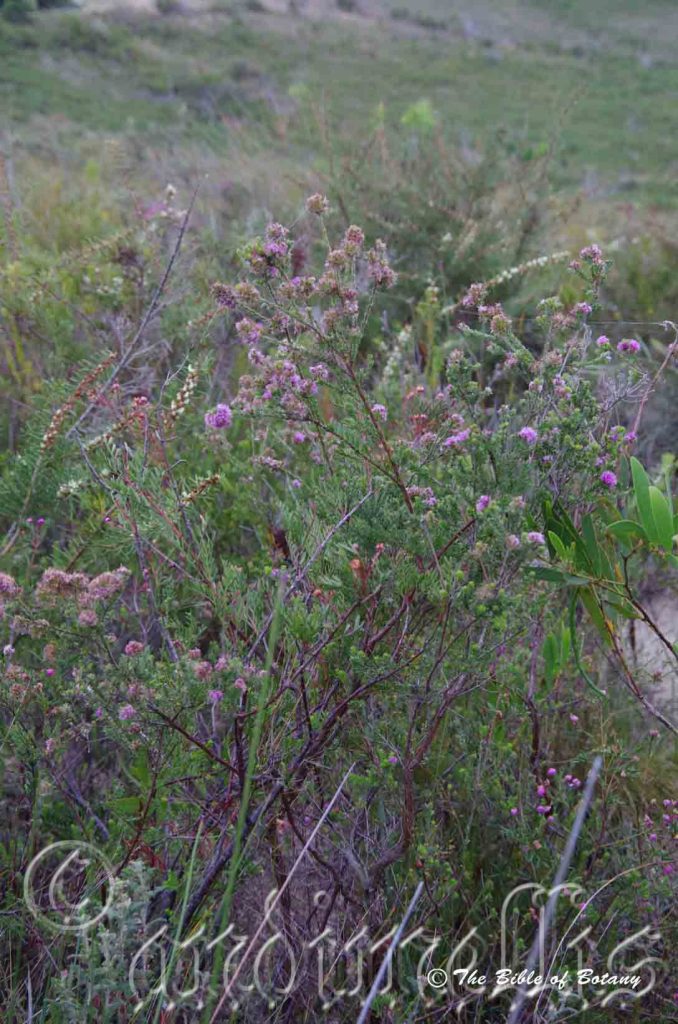
Innes Lake National Park NSW
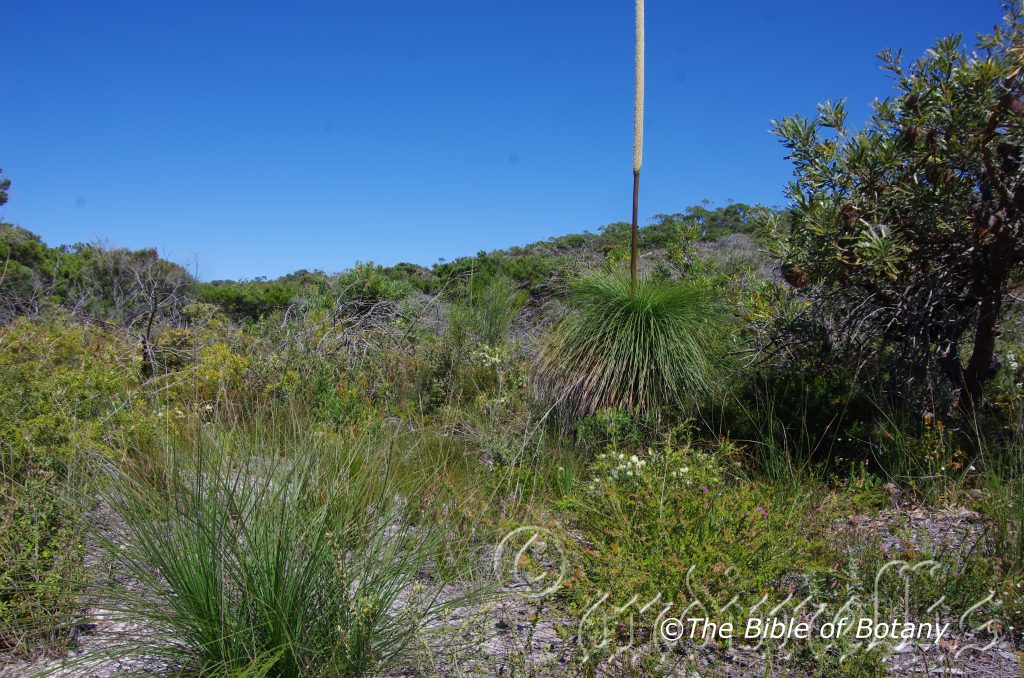
Yuraygir National Park NSW
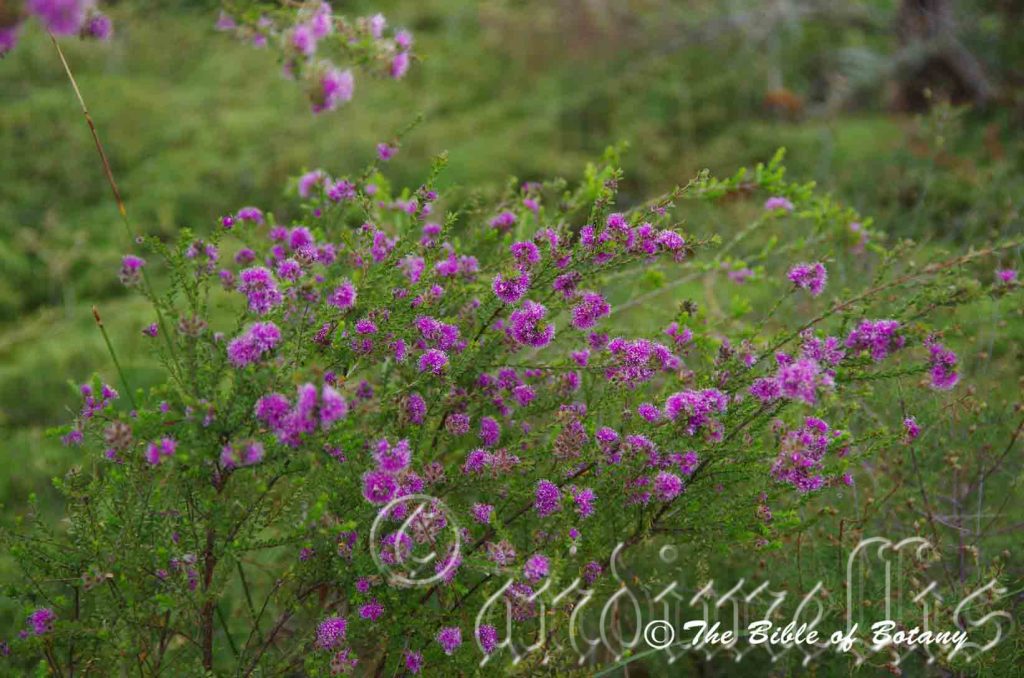
Innes Lake National Park NSW
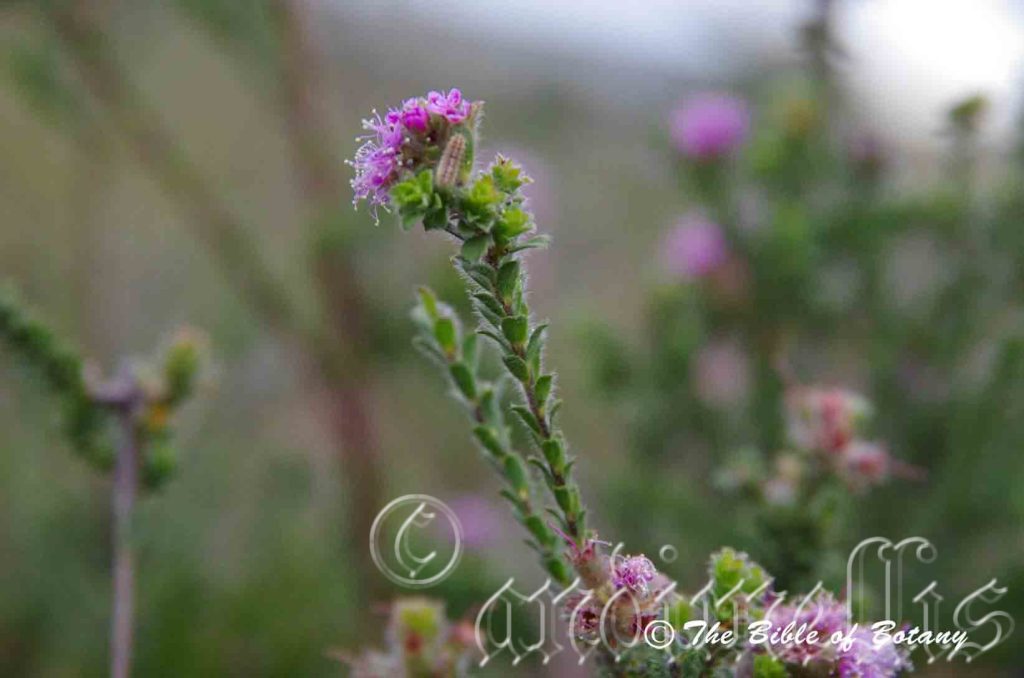
Innes Lake National Park NSW
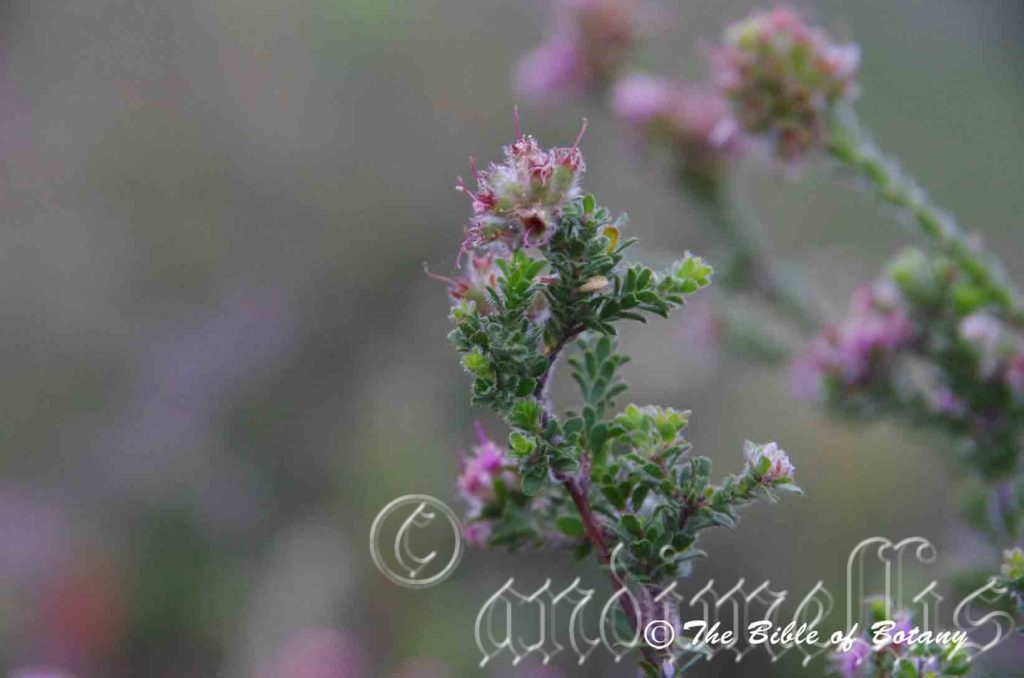
Innes Lake National Park NSW
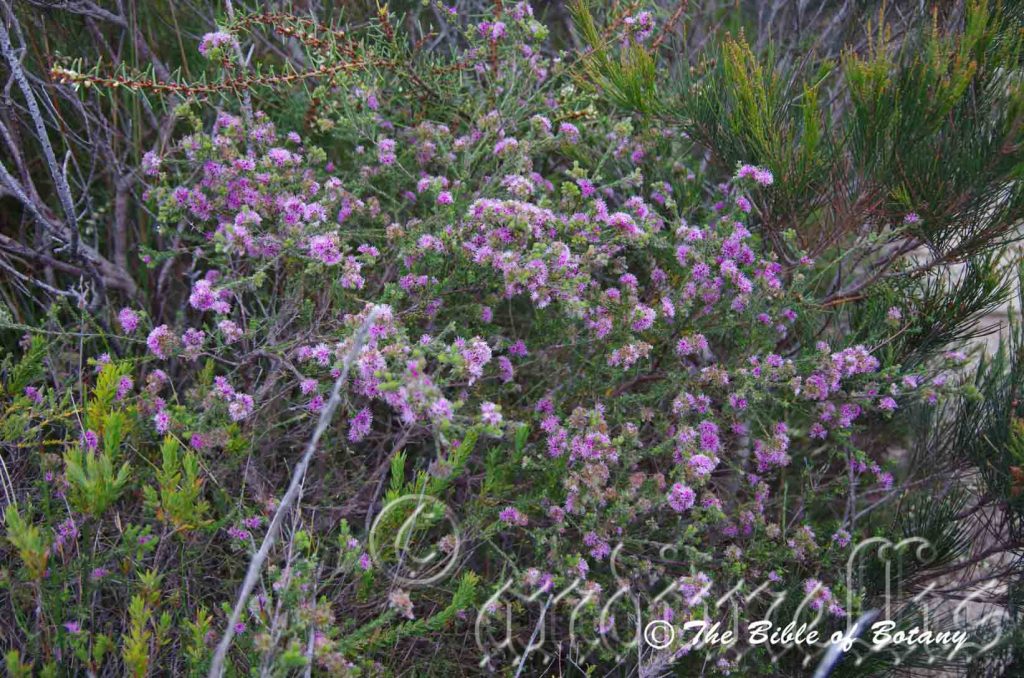
Innes Lake National Park NSW
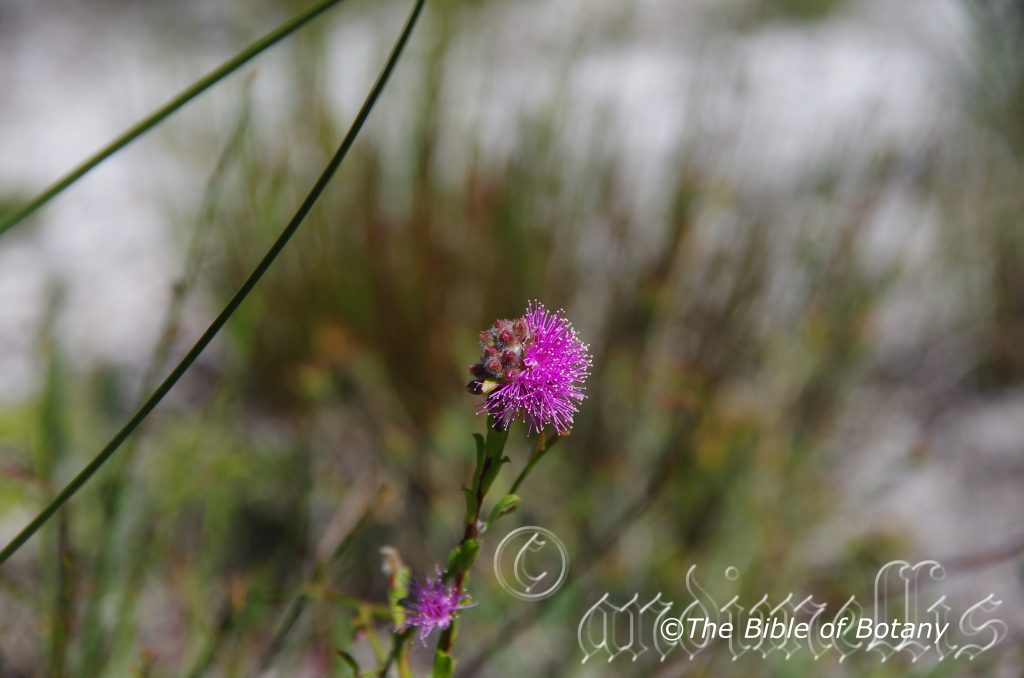
Yuraygir National Park NSW
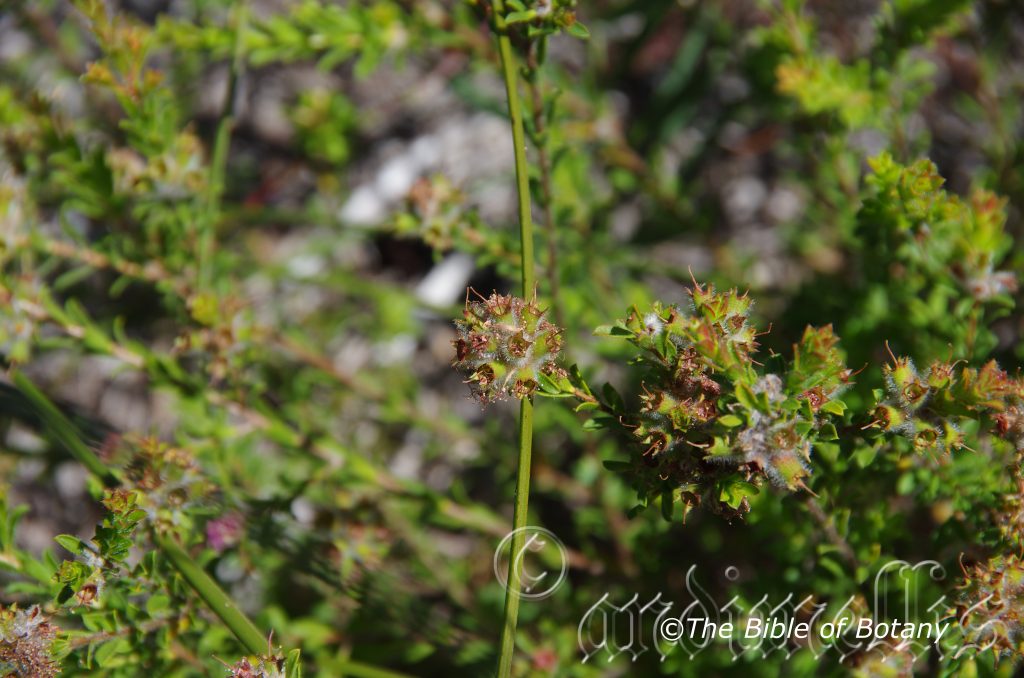
Yuraygir National Park NSW
Kunzea capitata
Classification:
Unranked: Eudicots
Class:Rosids
Order: Myrtales
Family: Myrtaceae
Subfamily: Faboideae
Genus Is named in honour of Gustav Kunz; 1793-1851, who was a German botanist who worked on Australian plants from Preiss.
Specie: From Capillāta, which is Latin for a pin head. It refers to the flowers, which form in small, compact heads.
Sub species:
Common Name: Pink flowering Kunzea.
Distribution:
Kunzea capitata is endemic to New South Wales south from Minnie Waters and Kungala between Coffs Harbour and Grafton to Ulladulla. It is quite prolific in the Sydney and Blue Mountains districts.
https://avh.ala.org.au/occurrences/search?taxa=Kunzea+capitata#tab_mapView
Habitat Aspect Climate:
Kunzea capitata prefers full sun to light dappled shade. It is found on coastal slopes, back dunes or headland heaths and open woodlands. It is also found on sandstone flats. The altitude ranges from 5 meters ASL to 750 meters ASL.
The temperatures range from 2 degree in August to 35 degrees in January.
The rainfall ranges from lows of 400mm to an average of 1500mm.
Soil Requirements:
Kunzea capitata prefers sands, fatty sands to heavier sandy loams. The soils are usually derived from decomposed sandstone, granite or at times accumulated beach sands. The soils pH ranges from 5pH to 6.5pH are preferred. It does not tolerate waterlogged soils. Non saline soils to moderately saline soils are tolerated.
Height & Spread:
Wild Plants: 0.8m to 2m by 0.8m to 1.5m.
Characteristics:
Kunzea capitata‘s grows as a medium shrub with pale grey, slightly flaky to glabrous. The stems turn pale red to red-brown, semi glossy and are usually covered in white hirsute and tomentose hairs or rarely glabrous.
Kunzea capitata‘s alternate, linear to oblanceolate to obovate leaves measure 4mm to 9mm in length by 1.5mm to 4mm in width. The base is cuneate while the apex is acute to obtuse with a mucronate point and is recurved. The concolourous laminas are grass-green and are glabrous to covered in white villous hairs. The margins are entire, flat and sparsely covered in white ciliate hairs. The mid vein and two longitudinal veins are slightly prominent on the lower lamina and are not visible from above. The red-brown petioles measure 0.5mm to 1.5mm in length.
The inflorescence of Kunzea capitata is sub sessile and is born in small clusters on the terminals or from special lateral shoots. The hypanthium is covered in white villous hairs. The 5 pale creamy green sepals are triangular and measure 1mm to 2mm in length. The pale pink, deep bright pink or bright purple flowers measure 12mm to 16mm in diameter. The 5 oval to semicircular petals are bright pink or purple and measure 1mm to 1.5mm in length by 2mm to 3mm in width.
The 40 to 50 bright pink or purple stamens are attached on the rim of the hypanthium and have white anthems. The stamens measure 3.5mm to 4.5mm in length. The versatile anthers form two lobes and are white or cream. The single erect style is centrally located on the deep pink disc and measures 5mm to 6.5mm in length. The flowers appear from mid-August to mid-November.
Kunzea capitata‘s fruit is an oblong 3 ocular capsule. The sepals are persistent on the capsules which measure 3mm to 4.5mm in length by 2mm to 2.5mm in diameter. The capsules turn a dull grey-brown prior to dehiscing. It is densely covered in white villous hairs. The numerous small seeds are red-brown.
Wildlife:
Flowers are popular amongst small nectar feeding birds, native bees and many different specie of the colourful soldier beetles Cantharidae.
Cultivation:
Kunzea capitata is a beautiful clean small native shrub that are frequently overlooked by gardeners because of their spindly appearance in pots or a pre conception that it will look weedy and common. In fact it is magnificent especially when in flower. It is suitable for small, medium and large sunny gardens close to the coast or inland in temperate sub-tropical areas or semi-arid zones especially where the soils are well drained, poor and sandy. As garden subjects it will grow from 1 meter to 1.5 meters in height by 1 meter to 1.5 meters in diameter when grown in the open. Flowering stems may grow beyond the 1.5 meters extending out to 2 meters. It is fast growing and are cold tolerant to temperatures as low as minus 4 degrees once established.
It is most suitable for use adjacent to pathways, rockeries, along sandy clay banks or along drive ways or adjacent to natural bush gardens. Mass plantings of 5 or more plants, even in small areas; really do the plants justification especially when it is in flower.
Six or more planted back from a bend will become a very strong focal point when in flower gain a lot of attention whether you are coming or going because of the fresh clean look of the foliage even in the driest of times. They can be regularly tip pruned if a smaller shrub is required. It responds well to pruning recovering quickly and often increasing the number of flowers in the following season. An annual application of native fertilizer will enhance flowering if that is at all possible. Place it in the mid ground with other large leaf ground covers and very small shrubs in front. To the rear, use large leaf taller plants. Plants with white, cream or deep red flowers can be used in both the midground and background. Do not use a lot of colour at the time when these plants flower as you want all the attention on them so select plants that flower at different times of the year.
Ensure that the whole plant or at least most of it is on display from most sections of the garden as the flowers are a real bonus.
When it is in flower these plants will catch your attention and the viewer will be transfixed on the display rather than watching the path. Small groups scattered throughout an open canopy bush garden are very enticing to people passing by who will stop, look or check them out.
The magnificent flowering of Kunzea capitata are a real bonus and add colour and depth to the garden, think of using Kunzea ambigua as the back ground plant in either a formal line as a screen or informal curves with the pale pink to deep pink and purple flowers of Kunzea capitata in the foreground for a spectacular display.
Mass plant them at 1 meter to 2 meter centers.
They make excellent bonsai specimens and are very easy to work and are hardy.
Propagation:
Seeds: Kunzea capitata seeds can be sown directly into a seed raising mix. Cover them with 5mm to 6mm of fine weed free mulch and keep moist. Place the tray in a warm sunny position. When the seedlings are 20mm to 30mm tall, prick them out and plant them into 50mm native tubes using a good organic mix.
Once the seedlings reach 100mm to 150mm in height they can be planted out into their permanent position.
Cuttings: Use 100mm long half ripened material when growing from cuttings from the present season’s growth. Take them in warmer months of the year. Remove half the leaves from the bottom section being careful not to tear the bark. Take a 10mm slice off the bark from the bottom of the cutting on one side.
1 Prepare the cutting mix by adding one third sharp clean river sand, one third peat and one third perlite. These ingredients are sterilize,
2 Select good material from non diseased plants,
3 Select semi green stems for cuttings. Look for a stem with two or three nodes,
4 Place the cutting on a flat, hard surface, and make a clean cut down one side of the cutting at the base for 10mm with a sharp sterile knife or razor blade. – This scarification of the node will increase the chances of roots emerging from this spot. Now remove all but one or two the leaves, leaving the apex leaves in tact. If the leaves are very large in proportion to the stem, cut off the apical halves.
5 Fill a saucer with water, and place a little medium strength rooting hormone into another container like a milk bottle top. Dip the node end of the cutting into the water and then into the rooting hormone. Tap off any excess hormone,
6 Use a small dipple stick or old pencil to poke a hole into the soilless potting mix. Ensure the hole is slightly larger than the stem diameter and be careful not to wipe the rooting hormone off the cuttings base, place the cuttings in a pattern ensuring the cuttings are not touching each other,
7 I like to place the pots in Plastic bags to help maintain temperature and moisture. Place in a semi shaded place like under 50mm shade cloth.
8 When the cuttings have struck, open the bag to allow air circulation for a few days to a week,
9 Once hardened off remove the cuttings from the bag and allow to further hardening for a few more days,
10 Transplant into a good potting mix to grow on.
Fertilize using seaweed, fish emulsion or organic chicken pellets soaked in water on an alternate basis. Fertilize every two months until the plants are established then twice annually in early September or March to maintain health, vitality and better flowering.
Further Comments from Readers:
Hi reader, it seems you use The Bible of Botany a lot. That’s great as we have great pleasure in bringing it to you! It’s a little awkward for us to ask, but our first aim is to purchase land approximately 1,600 hectares to link several parcels of N.P. into one at The Pinnacles NSW Australia, but we need your help. We’re not salespeople. We’re amateur botanists who have dedicated over 30 years to saving the environment in a practical way. We depend on donations to reach our goal. If you donate just $5, the price of your coffee this Sunday, We can help to keep the planet alive in a real way and continue to bring you regular updates and features on Australian plants all in one Botanical Bible. Any support is greatly appreciated. Thank you.
In the spirit of reconciliation we acknowledge the Bundjalung, Gumbaynggirr and Yaegl and all aboriginal nations throughout Australia and their connections to land, sea and community. We pay our respect to their Elders past, present and future for the pleasures we have gained.
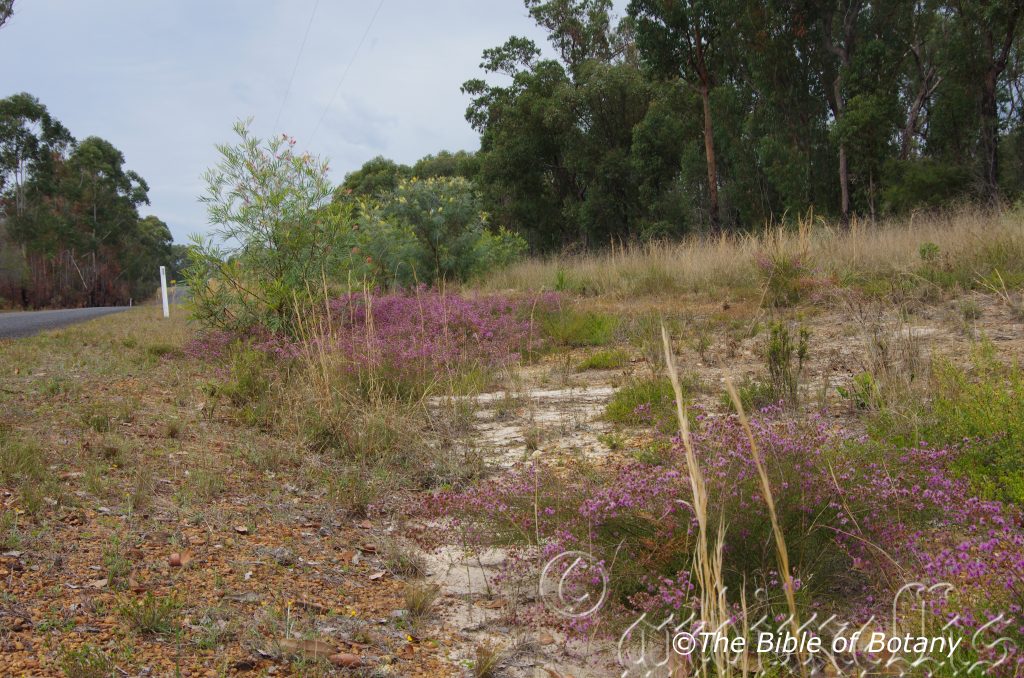
The Pinnacles NSW
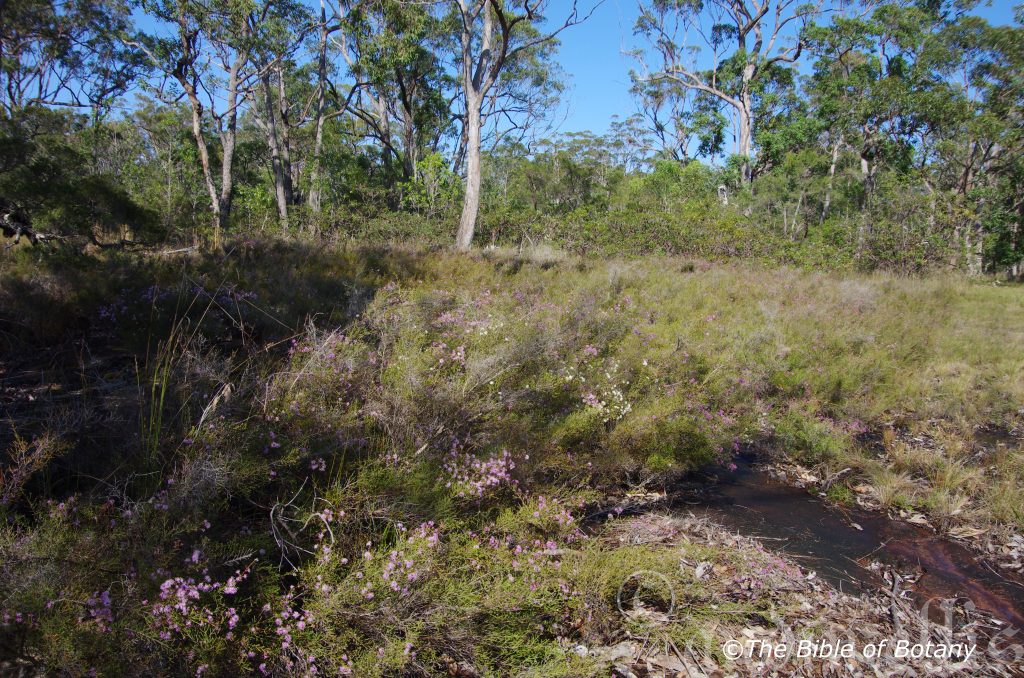
The Pinnacles NSW
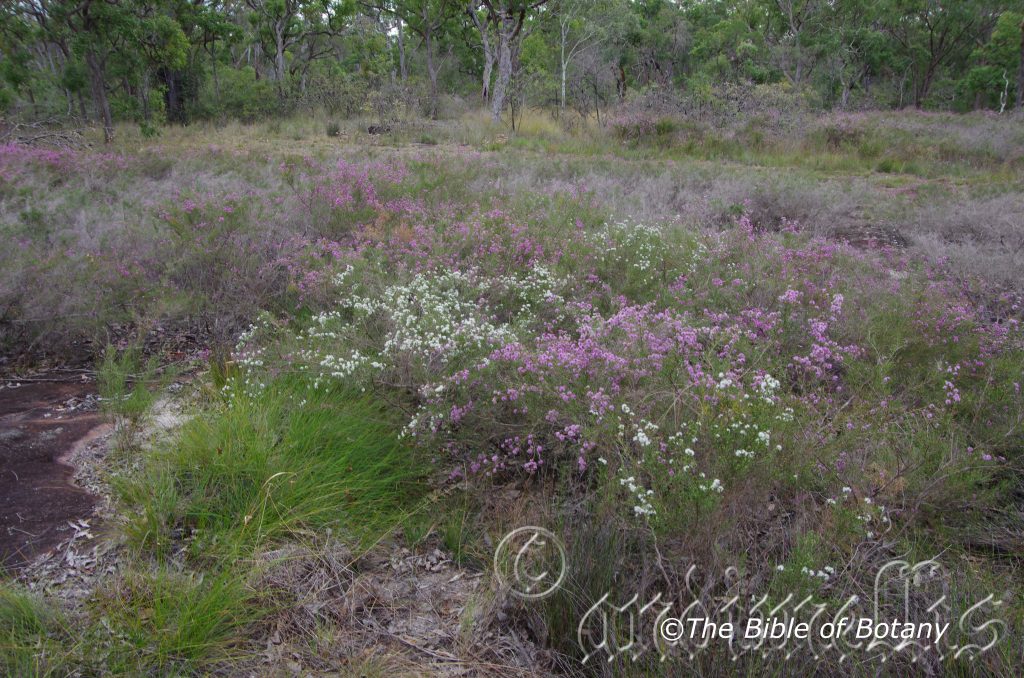
The Pinnacles NSW
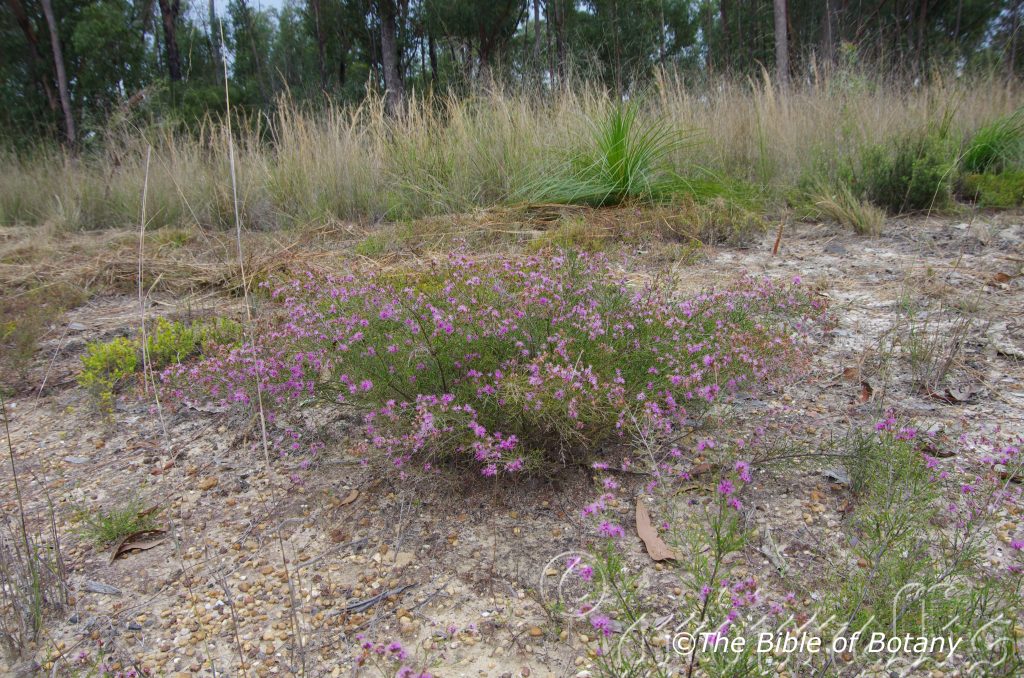
The Pinnacles NSW
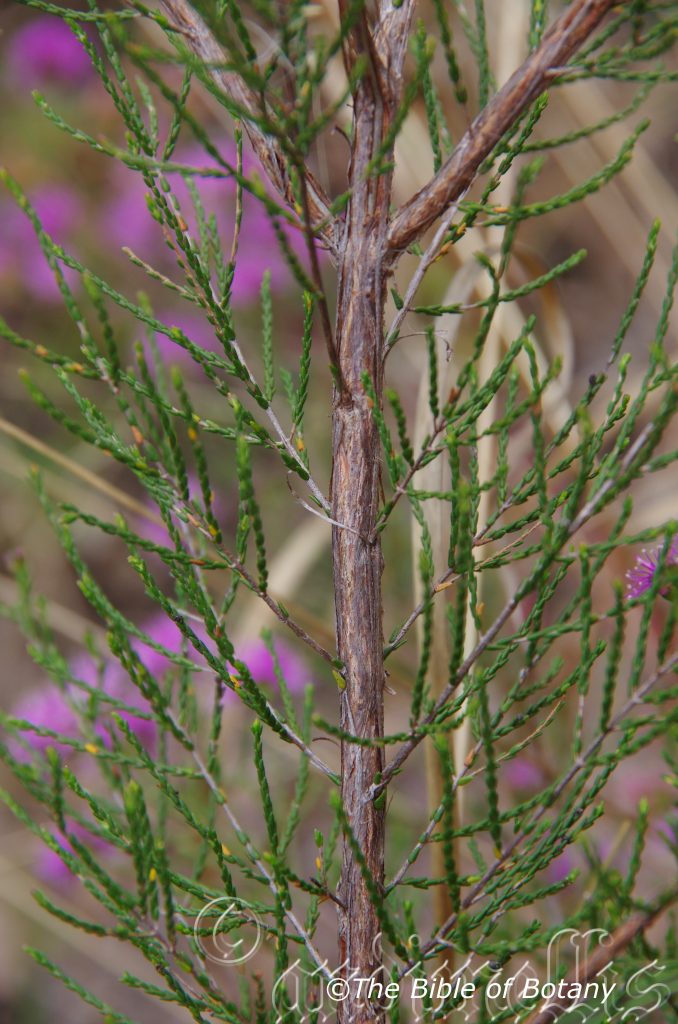
Author’s Garden The Pinnacles NSW
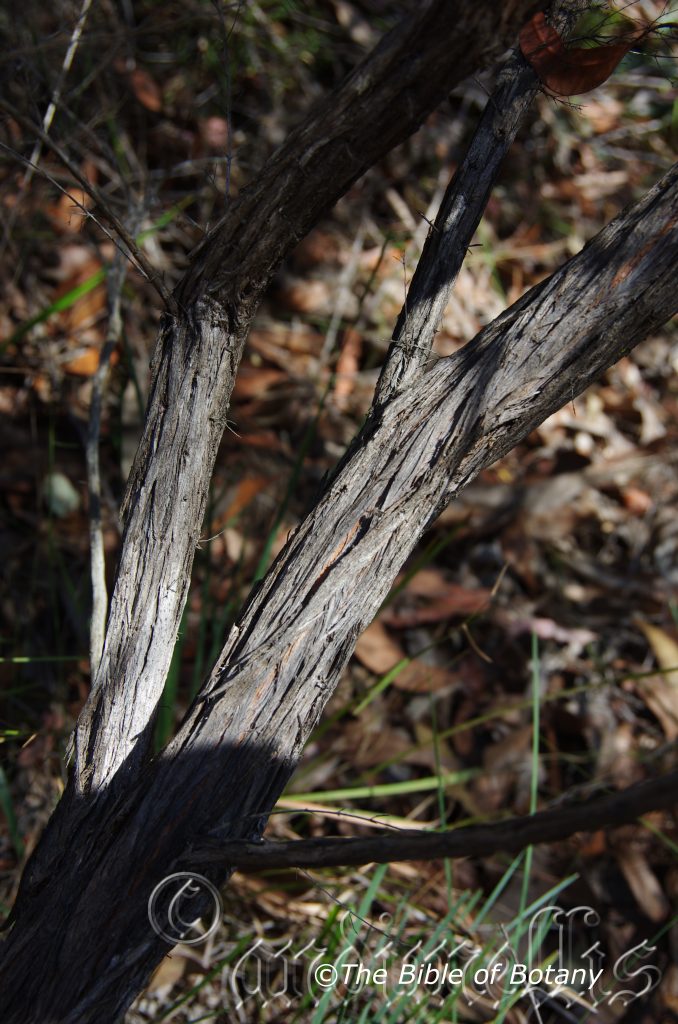
Fortis Creek National Park NSW
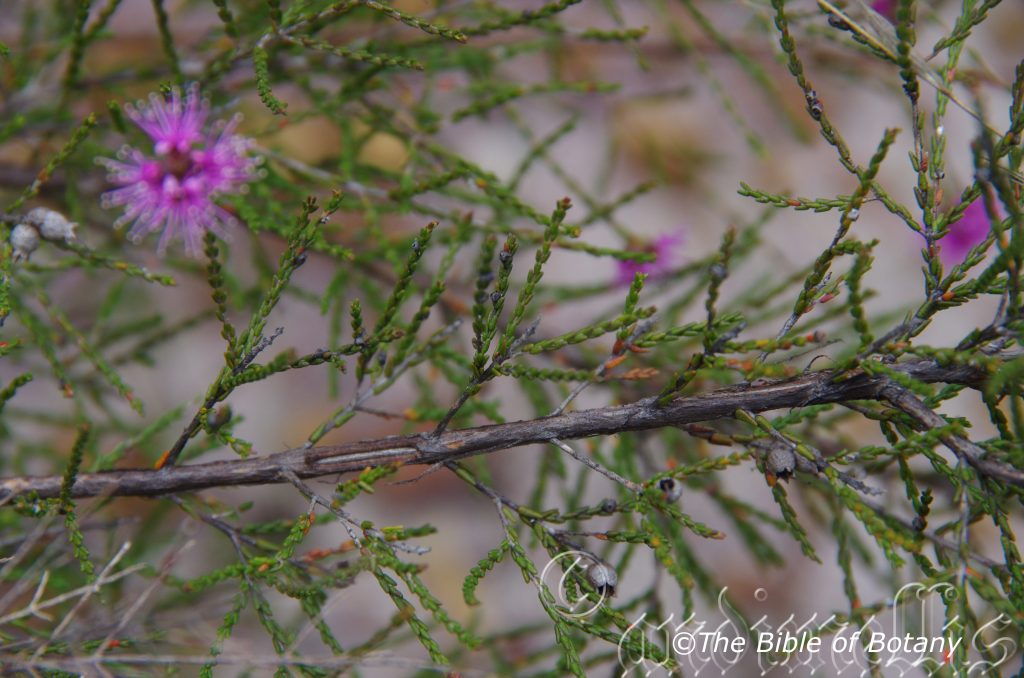
Author’s Garden The Pinnacles NSW
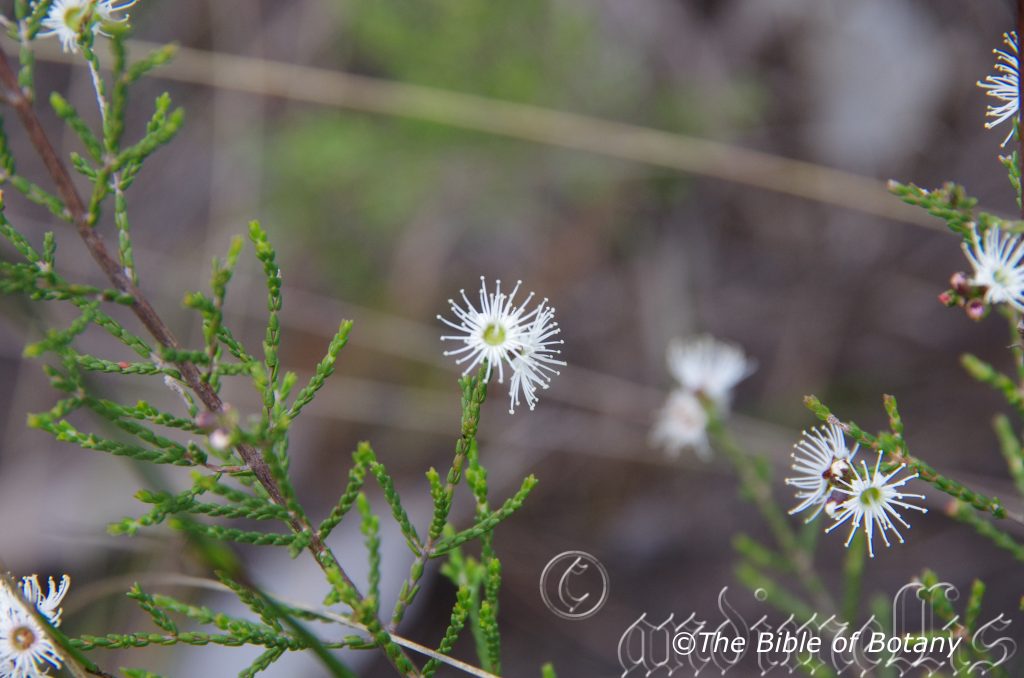
Author’s Garden The Pinnacles NSW
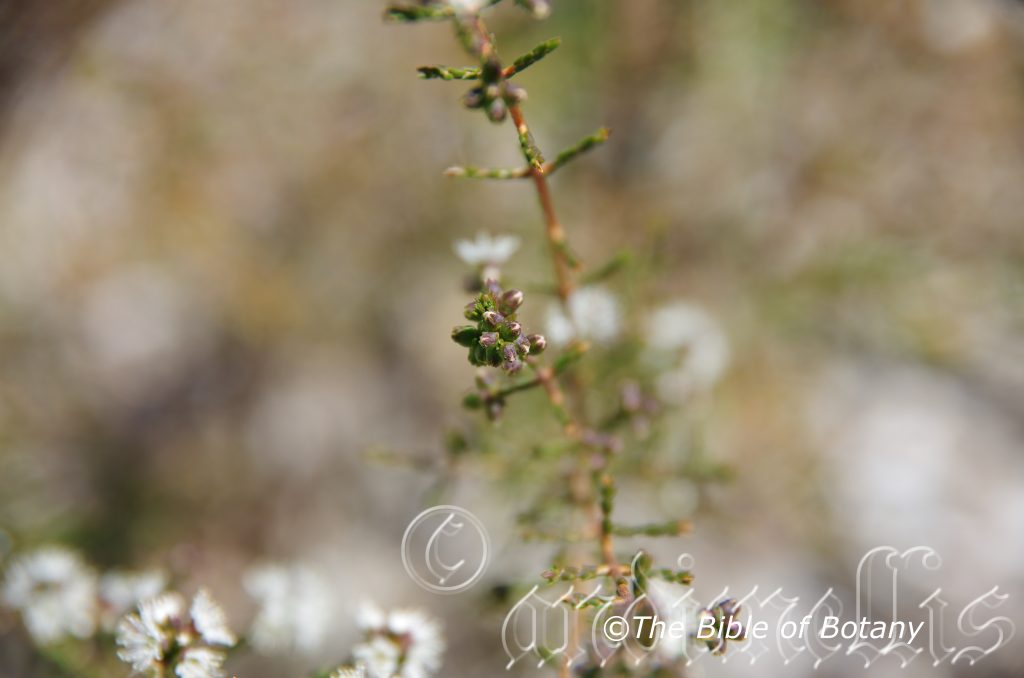
The Pinnacles NSW
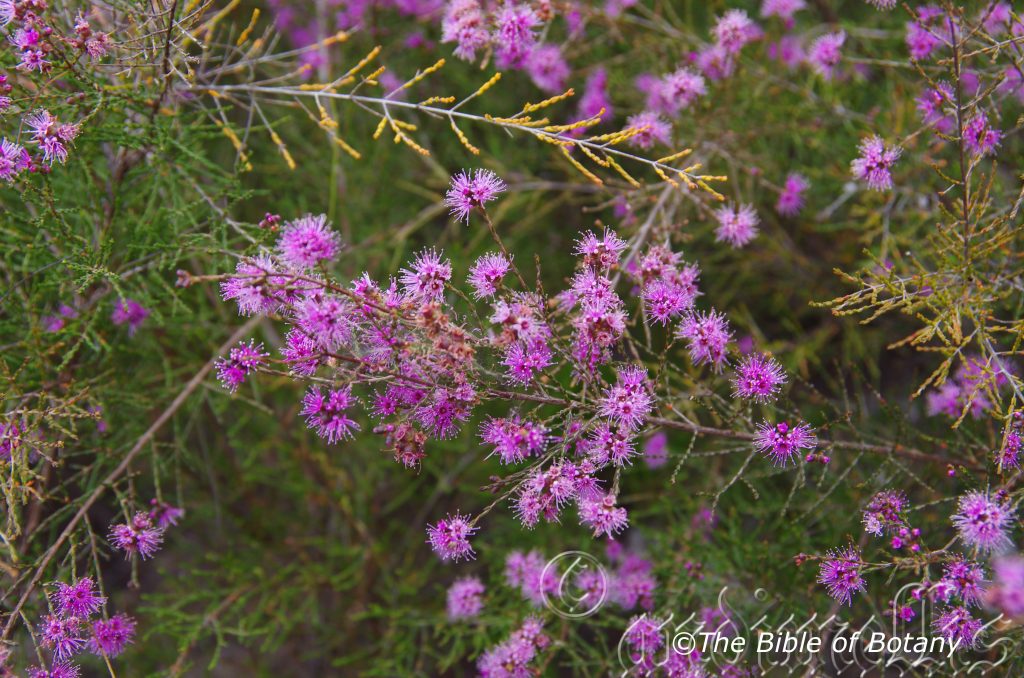
Author’s Garden The Pinnacles NSW
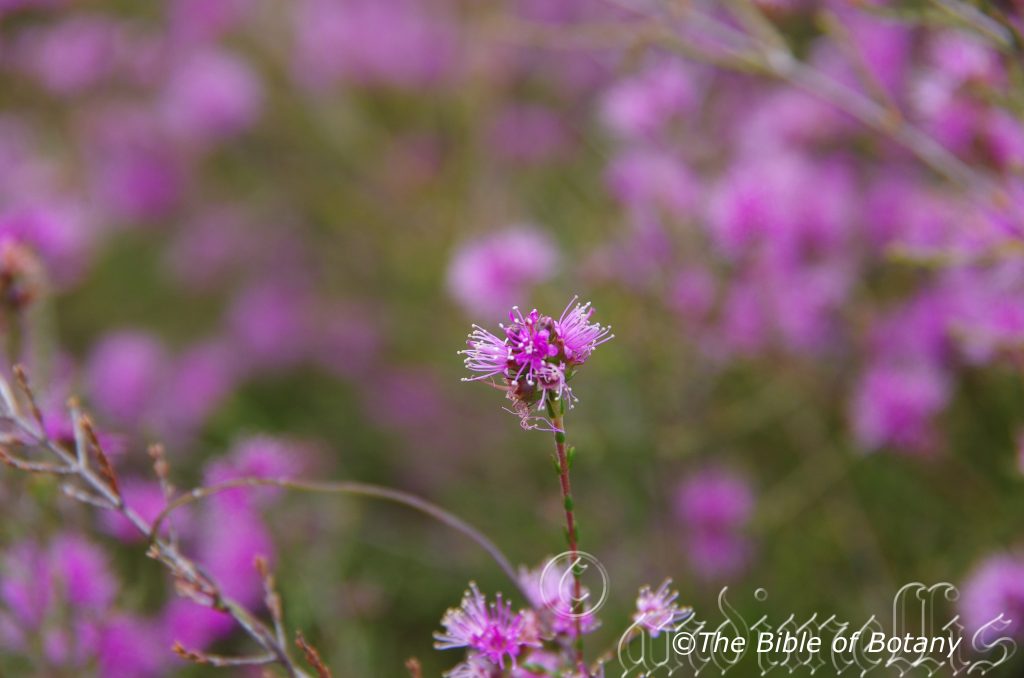
Author’s Garden The Pinnacles NSW
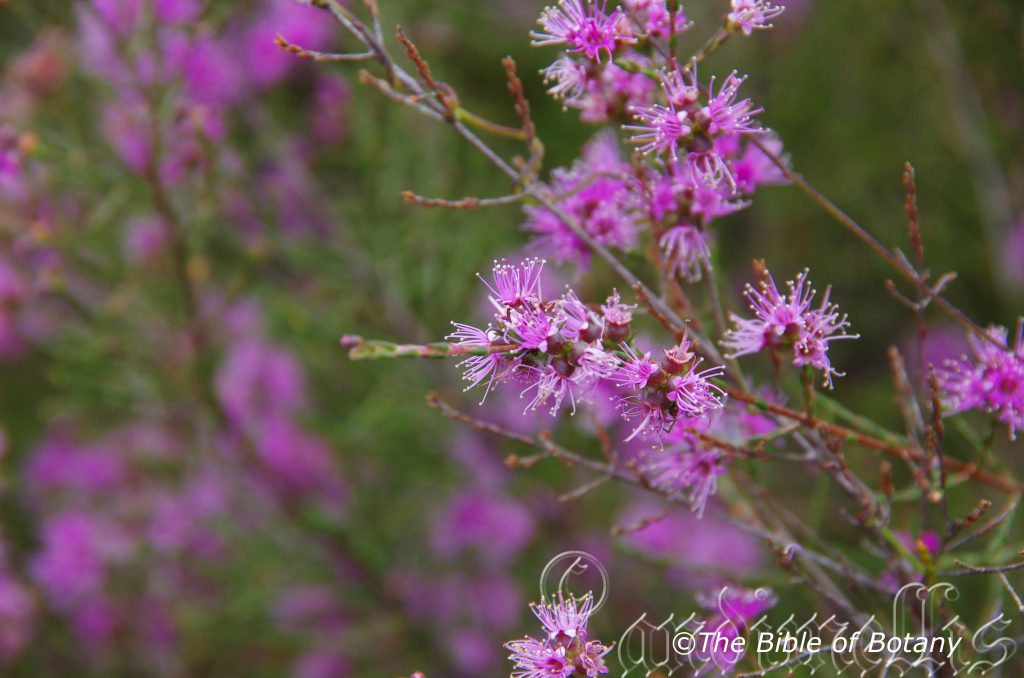
Author’s Garden The Pinnacles NSW
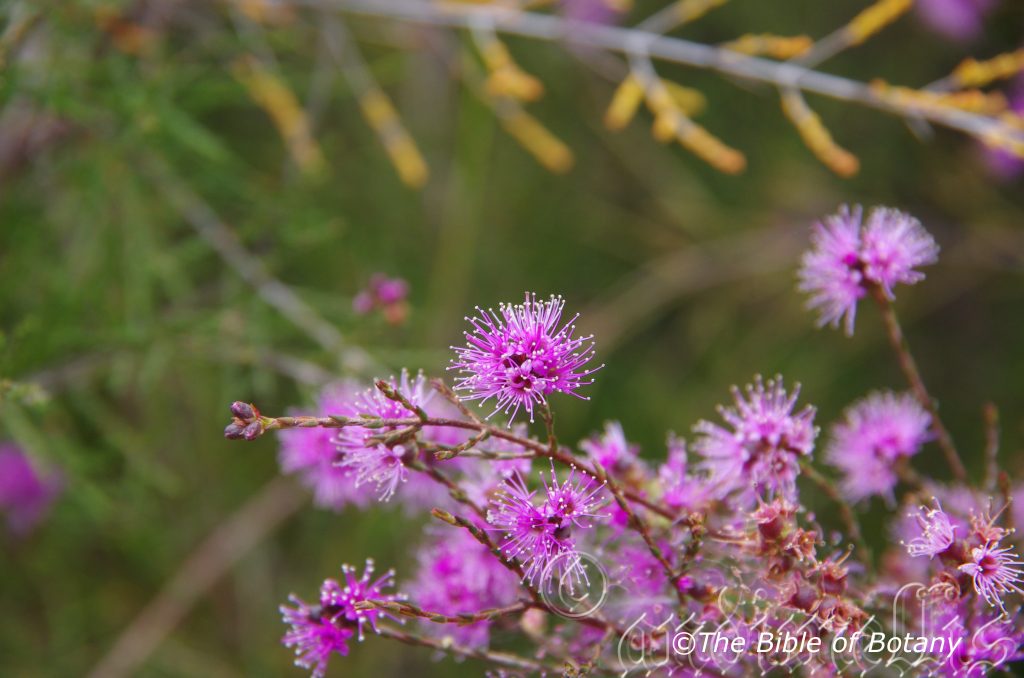
Author’s Garden The Pinnacles NSW
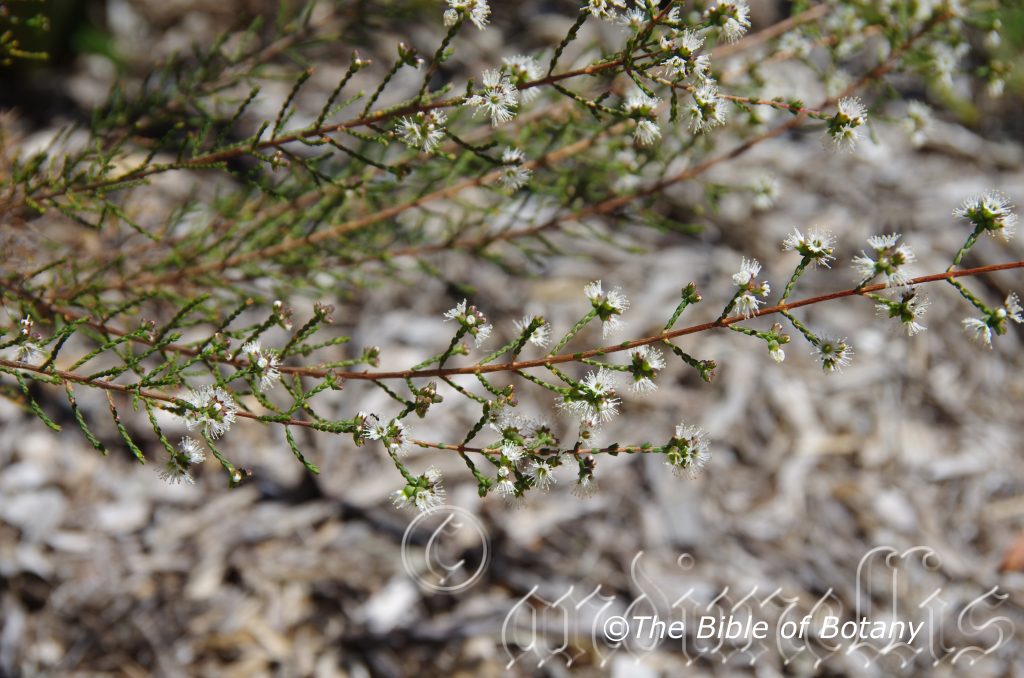
Author’s Garden The Pinnacles NSW
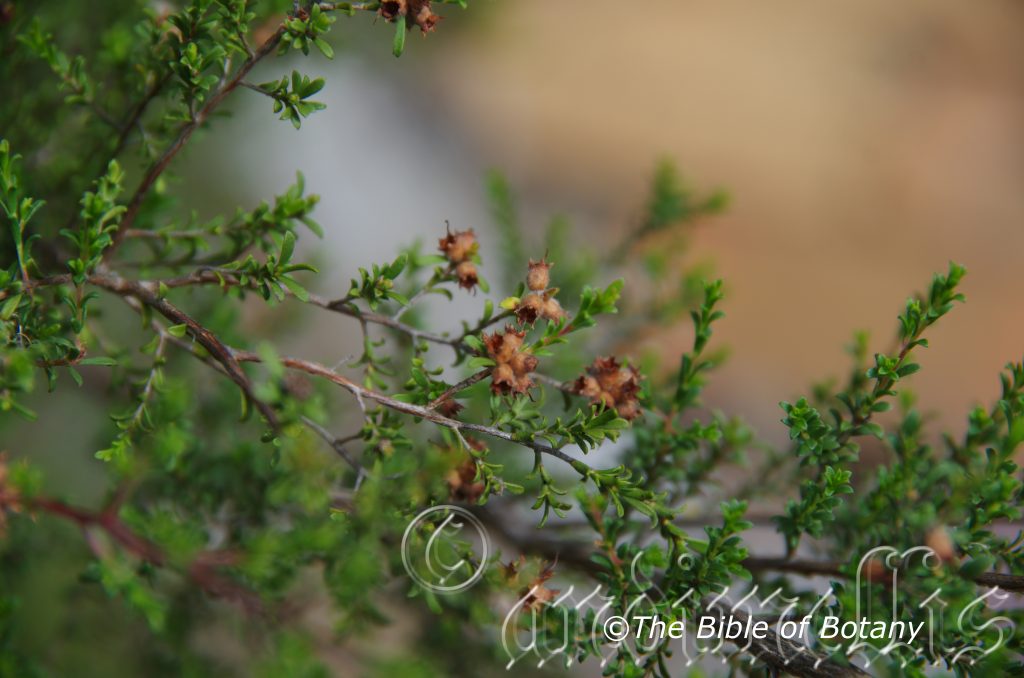
The Pinnacles NSW
Kunzea opposita
Classification:
Unranked: Eudicots
Class:Rosids
Order: Myrtales
Family: Myrtaceae
Subfamily: Faboideae
Genus Is named in honour of Gustav Kunz; 1793-1851, who was a German botanist who worked on Australian plants from Preiss.
Specie: From Oppositus, which is Latin for being on the other side. It refers to the leaves, which appear at 180 degrees to each other on the same axis.
Sub species:
Common Name:
Distribution:
Kunzea opposita is found south from Black Down National Park in central eastern Queensland to Mount Kaputar in northern New South Wales.
https://avh.ala.org.au/occurrences/search?taxa=Kunzea+opposita#tab_mapView
Habitat Aspect Climate:
Kunzea opposita prefers full sun to light dappled shade. It grows in dry sclerophyll forests and heaths. The altitude ranges from 30 meters ASL to 860 meters ASL.
The temperatures range from minus 2 degrees in August to 38 degrees in January.
The rainfall ranges from lows of 450mm to an average of 1350mm.
Soil Requirements:
Kunzea opposita prefers deep coarse sands, fine sands, fatty sands, sandy loams and light gritty clays. The soils are usually derived from decomposed sandstones, granites or black basalts. The soils pH ranges from 5.5pH to 6pH are preferred. It does not tolerate waterlogged soils. Non saline soils to moderately saline soils are tolerated.
Height & Spread:
Wild Plants: 2m to 3.2m by 1.5m to 2m.
Characteristics:
Kunzea opposita’s grows as a medium shrub with pale grey, slightly flaky to glabrous erect stems. The stems turn tan or reddish-green and covered in white pannate hairs.
Kunzea opposita‘s opposite or nearly opposite, decussate, narrow ovate leaves measure 2mm to 3mm in length by 0.5mm to 0.7mm in width. The base tapers to the point of attachment and is sessile while the apex is obtuse to acute. The concolourous laminas are grass-green and are glabrous to being sparsely covered in white sericeous hairs. The margins are entire and flat. The mid vein is slightly prominent on the lower lamina and is not visible from above.
The inflorescence of Kunzea opposita is small sessile clusters born terminally or on special leafy side shoots. The hypanthium is covered in white sericeous hairs. The flowers measure 12mm to 16mm in diameter. The 5 pale creamy green sepals are triangular and measure 1mm to 1.5mm in length. The 5 oval to semicircular petals are pale pink and measure 1.5mm to 1.7mm in length by 2mm to 2.5mm in width.
The 30 to 35 pale pink stamens are attached on the rim of the hypanthium and have white anthers. The stamens measure 2.5mm to 3mm in length. The single erect deep pink style is centrally located on the deep pink disc and measures 4mm to 4.5mm in length.
The flowers appear from late August to mid-November.
Kunzea opposita‘s fruit is an ovoid 3 or rarely 4 locular capsule. The sepals are persistent on the capsules which measure 4mm to 4.5mm in length by 3mm to 3.5mm in diameter. The capsules turn a dull grey prior to dehiscing the numerous small seeds are red-brown.
Wildlife:
Flowers are popular amongst small nectar feeding birds, butterflies, native bees and native beetles.
Cultivation:
Kunzea opposita is a beautiful clean small native shrub that is worthwhile looking out for. As to date I have not seen it in any nurseries and seed may be difficult to acquire. It is magnificent especially when in flower. The white form is so rare that only 11 wild plants are have been recorded. It is suitable for small, medium and large sunny gardens close to the coast or inland in cool temperate sub-tropical areas or semi-arid zones especially where the soils are well drained, poor and sandy. As garden subjects it will grow from 2 meter to 2.5 meters in height by 2 meters to 2.5 meter in diameter when grown in the open. It is fast growing and are cold tolerant to temperatures as low as minus 4 degrees once established.
It is most suitable for use adjacent to pathways, rockeries, along sandy clay banks or along drive ways or adjacent to natural bush gardens. Mass plantings of 5 or more plants, even in large areas; really do the plants justification especially when it is in flower.
Planted back from a bend will become a very strong focal point when in flower gain a lot of attention whether you are coming or going because of the fresh clean look of the foliage even in the driest of times. It can be regularly tip pruned if a smaller shrub is required. It responds well to pruning recovering quickly and often increasing the number of flowers in the following season. An annual application of native fertilizer will enhance flowering if that is at all possible. Place it in the mid ground with other large leaf ground covers and very small shrubs in front. To the rear, use large leaf taller plants. Plants with white, cream or deep red flowers can be used in both the midground and background. Do not use a lot of colour at the time when these plants flower as you want all the attention on them so select plants that flower at different times of the year.
Ensure that the whole plant or at least most of it is on display from most sections of the garden as the flowers are a real bonus.
When it is in flower these plants will catch your attention and the viewer will be transfixed on the display rather than watching the path. Small groups scattered throughout an open canopy bush garden are very enticing to people passing by who will stop, look and check them out.
The magnificent flowering of Kunzea opposita are a real bonus and add colour and depth to the garden, think of using Kunzea ambigua as the back ground plant in either a formal line as a screen or informal curves with the pale pink to deep pink and purple flowers of Kunzea opposita in the foreground for a spectacular display.
Mass plant them at 2 meter to 2.5 meter centers.
They make excellent bonsai specimens and are very easy to work and are hardy.
Propagation:
Seeds: Kunzea opposita seeds can be sown directly into a seed raising mix. Cover them with 5mm to 6mm of fine weed free mulch and keep moist. Place the tray in a warm sunny position. When the seedlings are 20mm to 30mm tall, prick them out and plant them into 50mm native tubes using a good organic mix.
Once the seedlings reach 100mm to 150mm in height they can be planted out into their permanent position.
Cuttings: Use 80mm to 100mm long half ripened material when growing from cuttings from the present season’s growth. Take them in warmer months of the year. Remove half the leaves from the bottom section being careful not to tear the bark. Take a 10mm slice off the bark from the bottom of the cutting on one side.
1 Prepare the cutting mix by adding one third sharp clean river sand, one third peat and one third perlite. These ingredients are sterilize,
2 Select good material from non diseased plants,
3 Select semi green stems for cuttings. Look for a stem with two or three nodes,
4 Place the cutting on a flat, hard surface, and make a clean cut down one side of the cutting at the base for 10mm with a sharp sterile knife or razor blade. – This scarification of the node will increase the chances of roots emerging from this spot. Now remove all but one or two the leaves, leaving the apex leaves in tact. If the leaves are very large in proportion to the stem, cut off the apical halves.
5 Fill a saucer with water, and place a little medium strength rooting hormone into another container like a milk bottle top. Dip the node end of the cutting into the water and then into the rooting hormone. Tap off any excess hormone,
6 Use a small dipple stick or old pencil to poke a hole into the soilless potting mix. Ensure the hole is slightly larger than the stem diameter and be careful not to wipe the rooting hormone off the cuttings base, place the cuttings in a pattern ensuring the cuttings are not touching each other,
7 I like to place the pots in Plastic bags to help maintain temperature and moisture. Place in a semi shaded place like under 50mm shade cloth.
8 When the cuttings have struck, open the bag to allow air circulation for a few days to a week,
9 Once hardened off remove the cuttings from the bag and allow to further hardening for a few more days,
10 Transplant into a good potting mix to grow on.
Fertilize using seaweed, fish emulsion or organic chicken pellets soaked in water on an alternate basis. Fertilize every two months until the plants are established then twice annually in early September or March to maintain health, vitality and better flowering.
Further Comments from Readers:
Hi reader, it seems you use The Bible of Botany a lot. That’s great as we have great pleasure in bringing it to you! It’s a little awkward for us to ask, but our first aim is to purchase land approximately 1,600 hectares to link several parcels of N.P. into one at The Pinnacles NSW Australia, but we need your help. We’re not salespeople. We’re amateur botanists who have dedicated over 30 years to saving the environment in a practical way. We depend on donations to reach our goal. If you donate just $5, the price of your coffee this Sunday, We can help to keep the planet alive in a real way and continue to bring you regular updates and features on Australian plants all in one Botanical Bible. Any support is greatly appreciated. Thank you.
In the spirit of reconciliation we acknowledge the Bundjalung, Gumbaynggirr and Yaegl and all aboriginal nations throughout Australia and their connections to land, sea and community. We pay our respect to their Elders past, present and future for the pleasures we have gained.
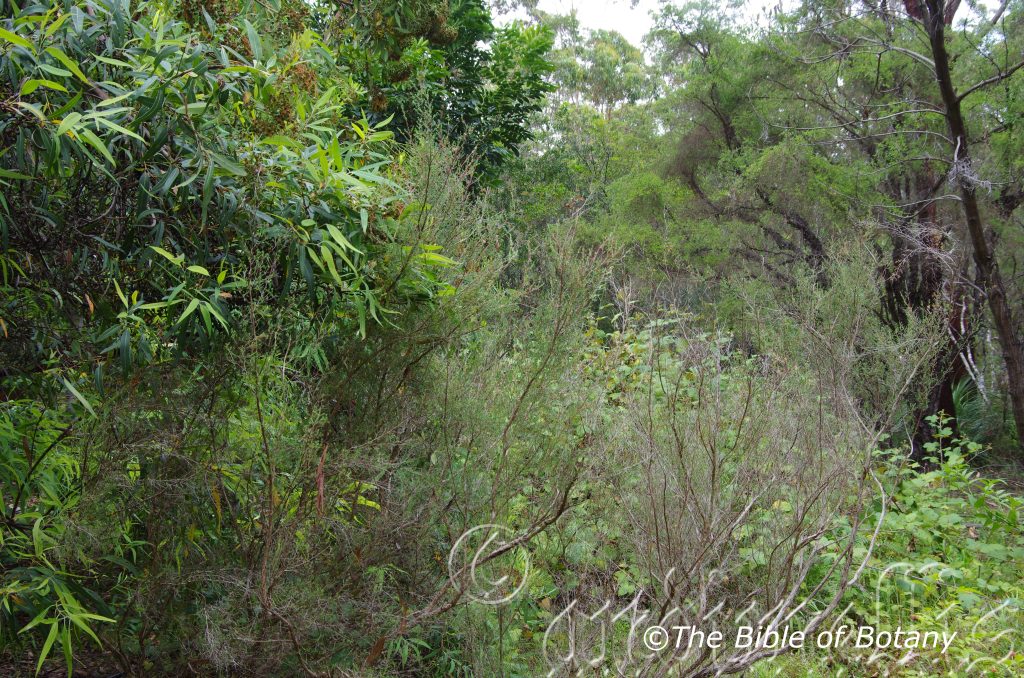
Author’s Garden The Pinnacles NSW
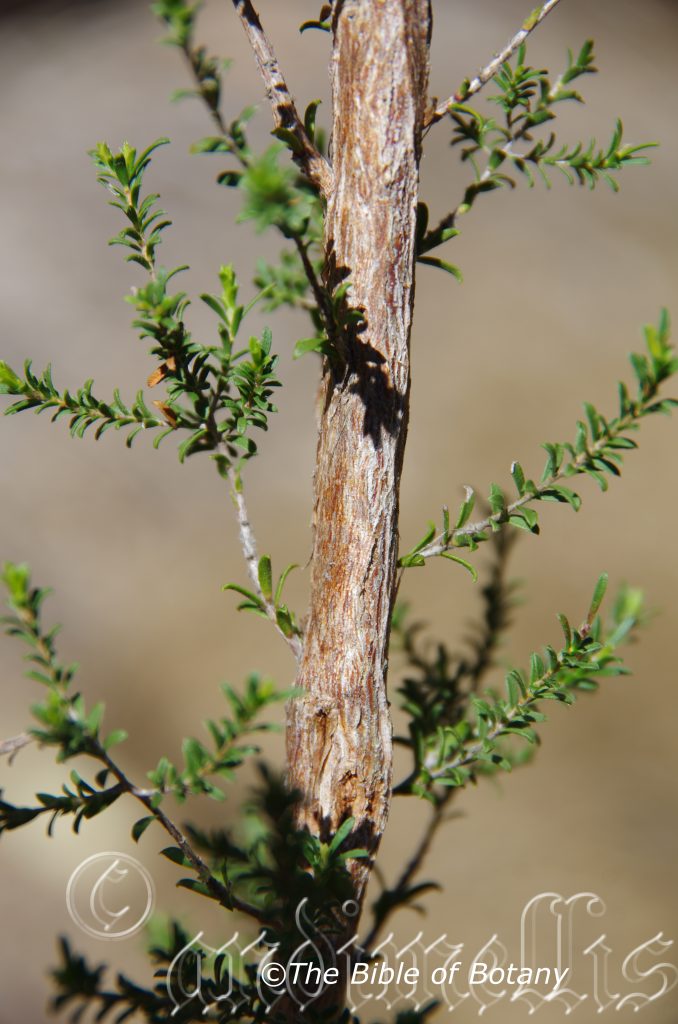
Author’s Garden The Pinnacles NSW
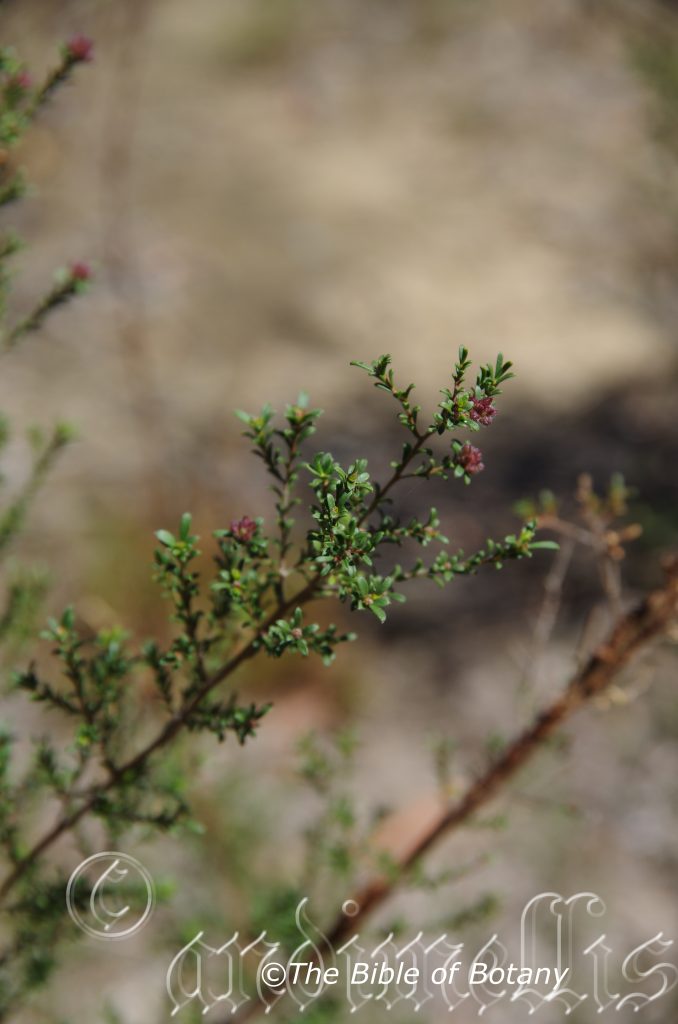
Author’s Garden The Pinnacles NSW
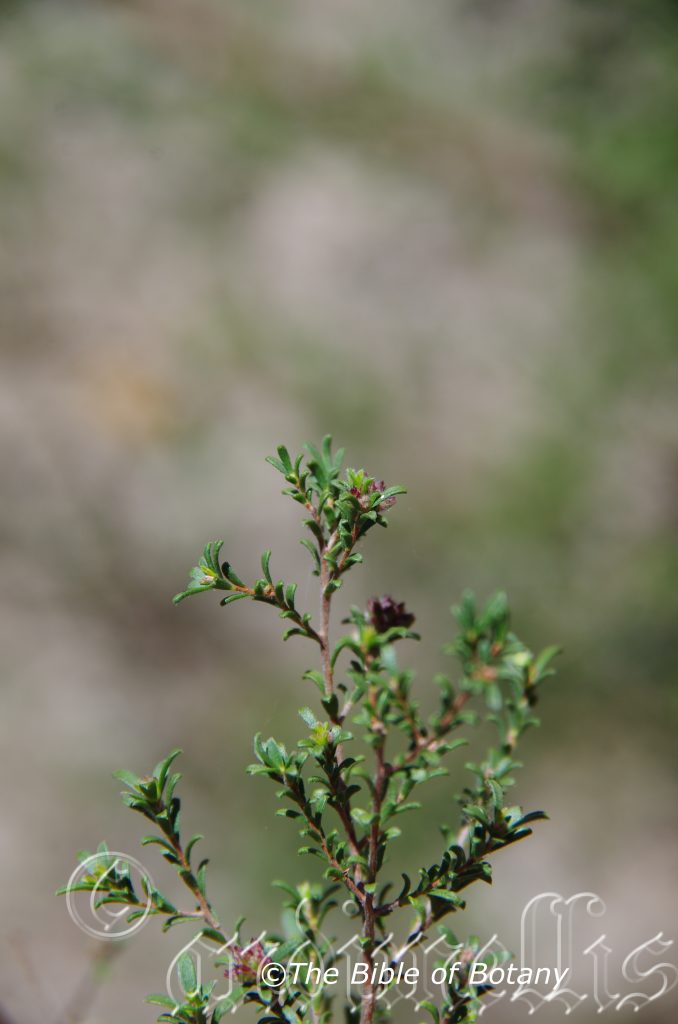
Author’s Garden The Pinnacles NSW
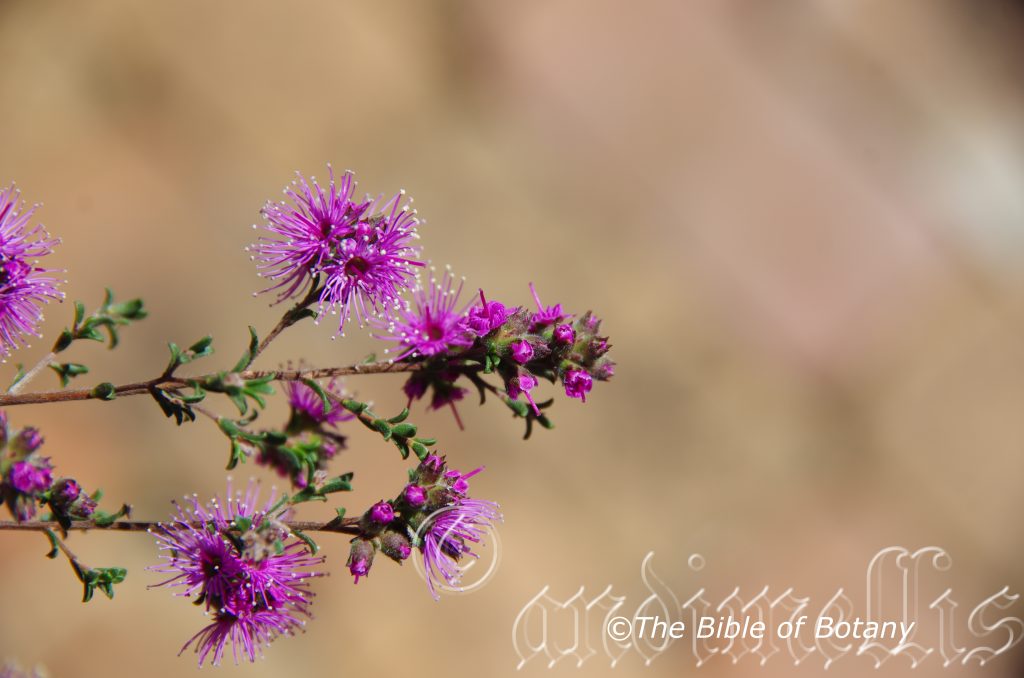
Author’s Garden The Pinnacles NSW
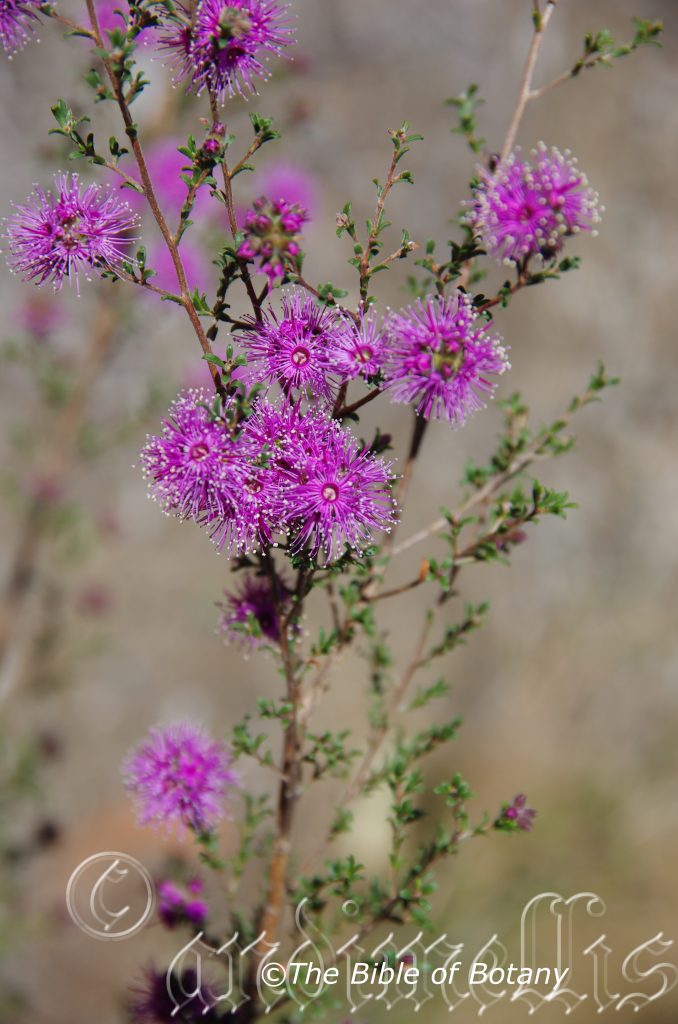
Author’s Garden The Pinnacles NSW
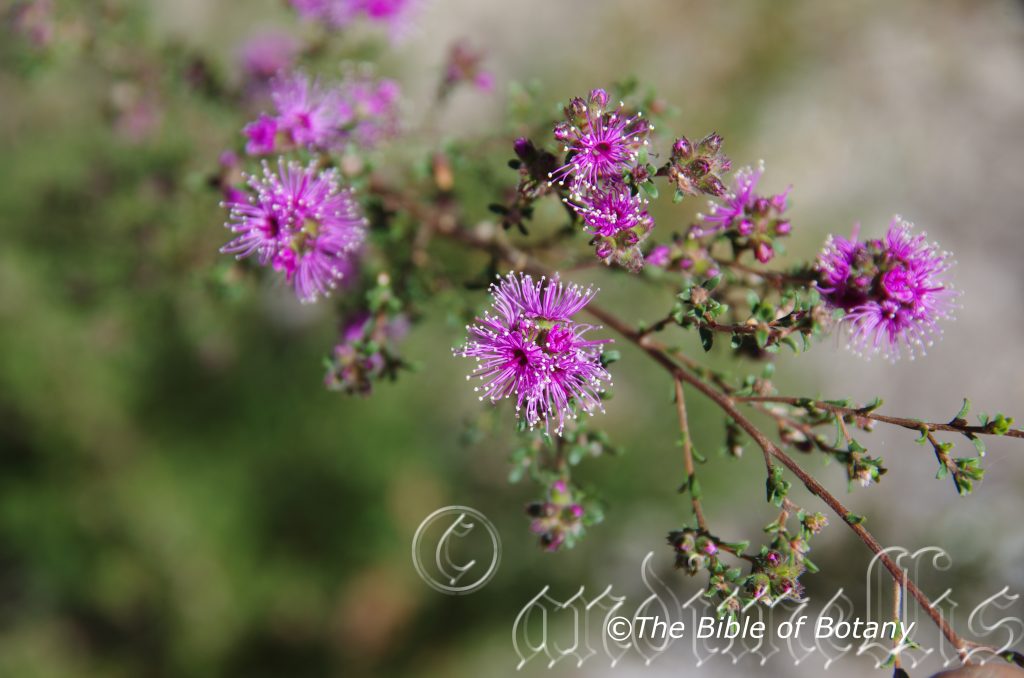
Author’s Garden The Pinnacles NSW
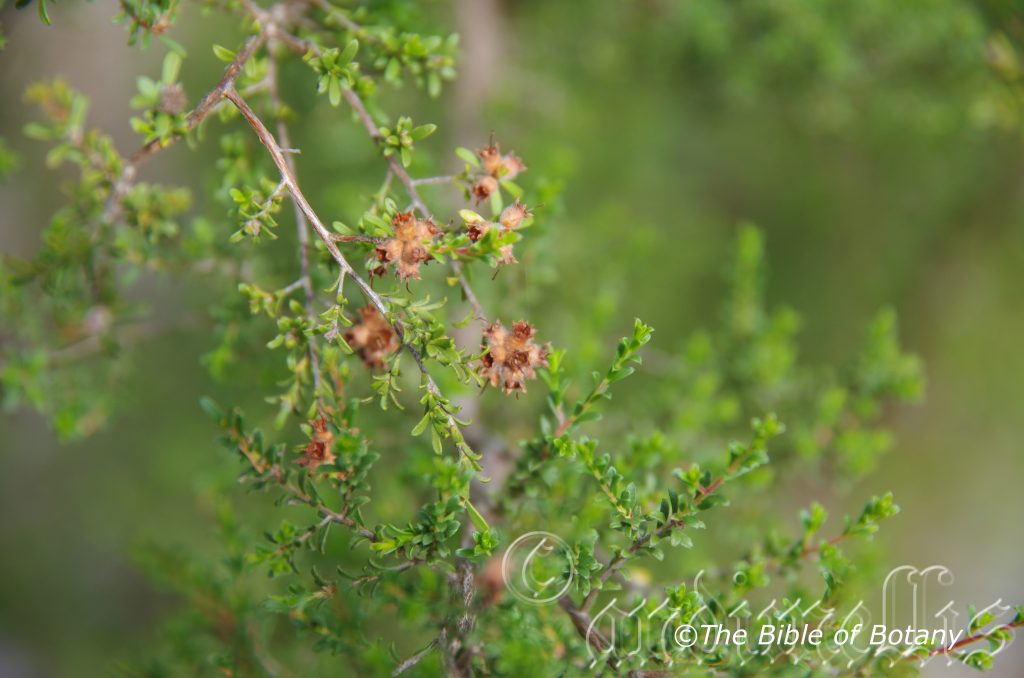
Author’s Garden The Pinnacles NSW
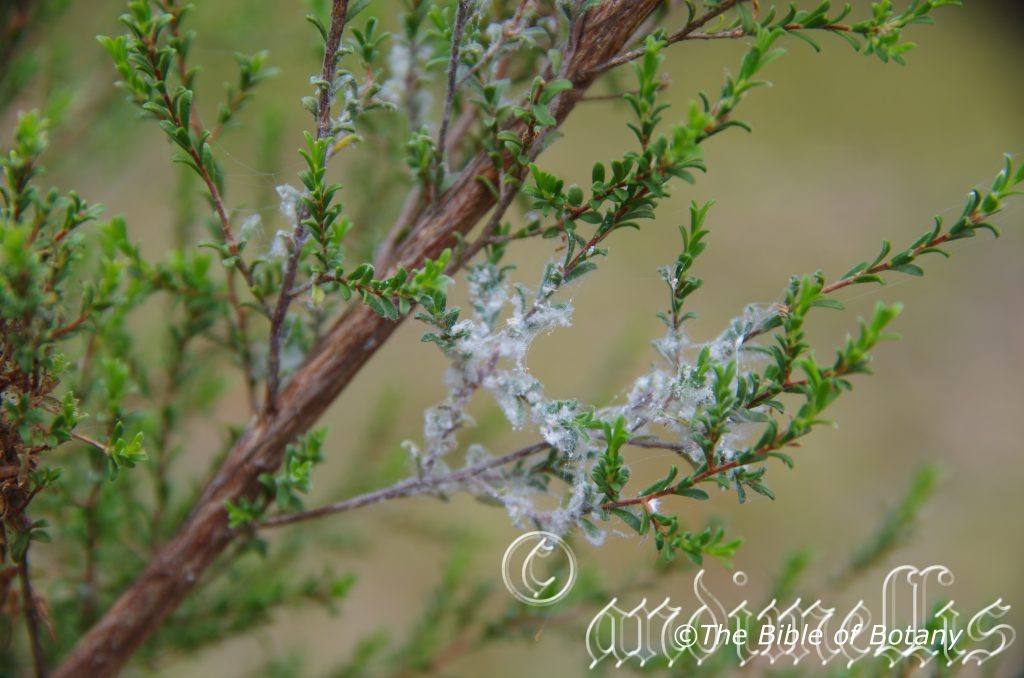
Author’s Garden The Pinnacles NSW
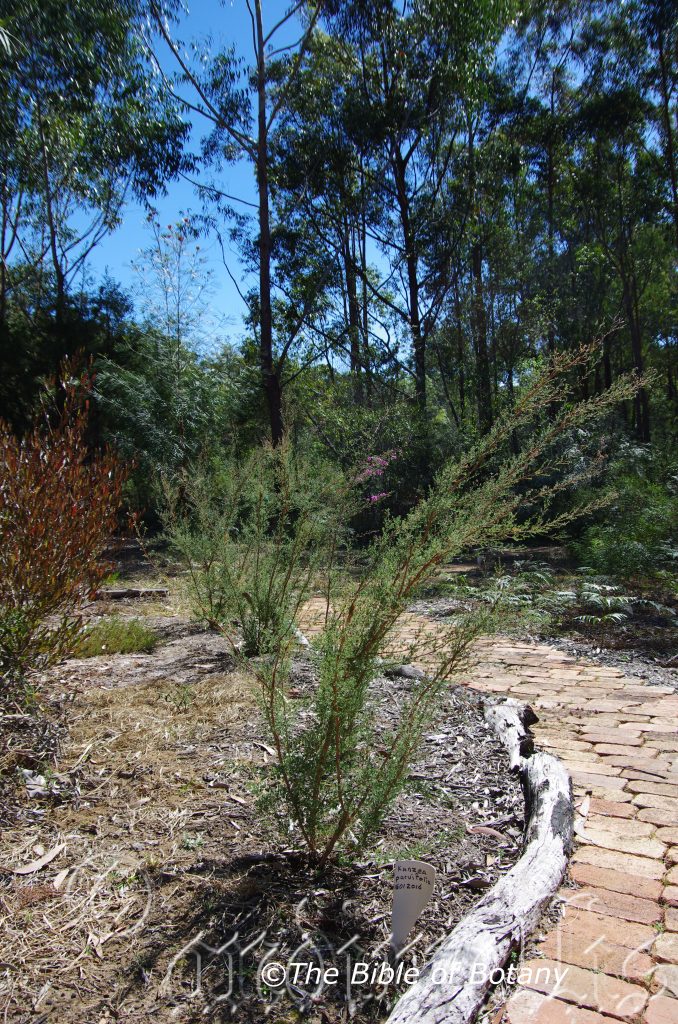
Author’s Garden The Pinnacles NSW
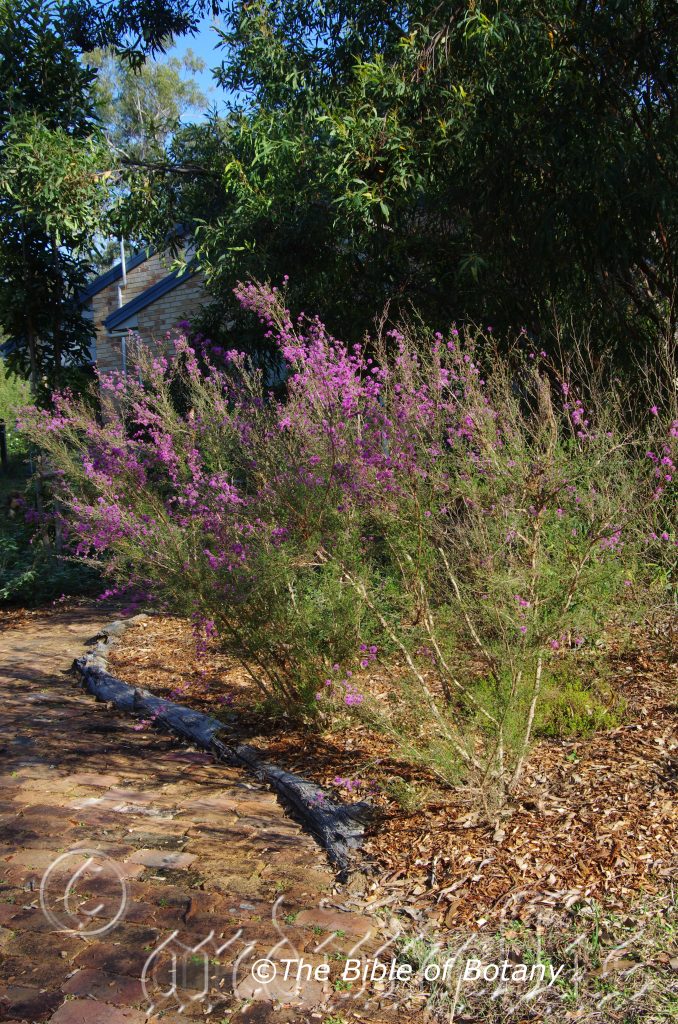
Author’s Garden The Pinnacles NSW
Kunzea parvifolia
Classification:
Unranked: Eudicots
Class: Rosids
Order: Myrtales
Family: Myrtaceae
Genus Is named in honour of Gustav Kunz; 1793-1851, who was a German botanist who worked on Australian plants from Preiss.
Specie: From Paûros, which is Ancient Greek or Parvum, which is Latin for small and Folium, which is Latin for a foliage.
Sub species:
Common Name: Violet Kunzea, Violet Tick Bush.
Distribution:
Kunzea parvifolia is mainly found on and west of the Great Dividing Range though it is found on the eastern side in the Sydney Basin. It is found south from Timbarra on the Gibraltar Range in far north eastern New South Wales to Toorour and Orbost in north eastern Victoria. It is found further west in Victoria bounded by Stawell, the Victoria Range and Buangor Dam.
https://avh.ala.org.au/occurrences/search?taxa=Kunzea+parvifolia#tab_mapView
Habitat Aspect Climate:
Kunzea parvifolia prefers full sun to light dappled shade. It grows on coastal slopes and hills amongst rocks and boulders near seepage lines or in seepage lines at higher altitudes. The altitude ranges from 30 meters ASL to 950 meters ASL.
The temperatures range from 4 degree in August to 40 degrees in January.
The rainfall ranges from lows of 500mm to an average of 1500mm.
Soil Requirements:
Kunzea parvifolia prefers coarse sands to light gritty clays. The soils are usually derived from granite. The soils pH ranges from 5.5pH to 6.5pH are preferred. It does not tolerate waterlogged soils. Non saline soils to moderately saline soils are tolerated.
Height & Spread:
Wild Plants: 0.3m to 1.5m by 0.5m to 1.5m.
Characteristics:
Kunzea parvifolia’s grows as a small spreading shrub with pale grey stems that are densely covered in white pubescent hairs. The new stems are green, and densely covered in white pubescent hairs.
Kunzea parvifolia’s crowded alternate, semi appressed, linear to linear-lanceolate leaves measure 1mm to 4mm in length by 0.7mm to 1mm in width. The bases are slightly tapering to the petiole while the apexes are acute and recurved. The concolourous laminas are pale greenish-blue and densely covered in white pubescent hairs becoming glabrous with age. The margins are entire. The mid vein is slightly prominent on the lower lamina and is not visible from the upper lamina. The petioles measure 0.3mm to 0.5mm in length.
The inflorescence of Kunzea parvifolia are sessile and are born in small terminal clusters or on special leafy side shoots. The hypanthium is glabrous to densely covered in white pubescent hairs. The 5 greenish-pink sepals are triangular and measure 2mm to 2.5mm in length. The 5 pink, to deep pink, purple, rarely white ovate petals measure 2.5mm to 4mm in length by 2.5mm to 4mm in width.
The 35 to 50 pink to purple stamens are attached on the inner rim of the hypanthium and measure 2.5mm to 4.5mm in length. I have photographed white flowers from The Pinnacles area which have not been seen or recorded before. The pastel yellow, pale yellow or rarely white orbicular anthers measure 0.4 to 0.5mm in diameter. The single erect style is centrally located on the greenish-pink to deep pink or rarely pale green disc. The pistil measures 2.5 to 4.5mm in length. The flowers appear from September to December.
Kunzea parvifolia’s fruits are conical capsules. The 3 or sometimes 4 locular capsules measure 2mm to 2.5mm in length by 2mm to 2.5mm in diameter. The capsules turn a dull grey prior to dehiscing. The numerous small seeds are red-brown.
Wildlife:
Kunzea parvifolia’s flowers are popular amongst small nectar feeding birds.
Cultivation:
Kunzea parvifolia is a beautiful clean small native shrub that is frequently overlooked by gardeners because of their spindly appearance in pots or a preconception that it could look weedy and common when in fact it is magnificent when in flower. It is suitable for small, medium and large sunny gardens close to the coast or inland in temperate subtropical areas or semi-arid zones especially where the soils are well drained, poor and sandy. As garden subjects it will grow from 0.7 meters to 1.2 meters in height by 0.8 meters to 1.2 meters in diameter when grown in the open. It is fast growing and are cold tolerant to temperatures as low as minus 2 degrees once established.
It is most suitable for use adjacent to pathways, rockeries, along sandy clay banks or along drive ways or adjacent to natural bush gardens. Mass plantings of 5 or more plants, even in large areas; really do the plants justification especially when it is in flower.
Six or more planted back from a bend will become a very strong focal point when in flower gain a lot of attention whether you are coming or going because of the fresh clean look of the foliage even in the driest of times. It can be regularly tip pruned if a smaller shrub is required. It responds well to pruning recovering quickly and often increasing the number of flowers in the following season. An annual application of native fertilizer will enhance flowering if that is at all possible. Place them in the mid ground with other large leaf ground covers and very small shrubs in front. To the rear, use large leaf taller plants. Plants with white, cream or deep red flowers can be used in both the mid ground and background. Do not use a lot of colour at the time when these plants flower as you want all the attention on them so select plants that flower at different times of the year.
Ensure that the whole plant or at least most of it is on display from most sections of the garden as the flowers are a real bonus.
When it is in flower these plants will catch your attention and the viewer will be transfixed on the display rather than watching the path. Small groups scattered throughout an open canopy bush garden are very enticing to people passing by who will stop, look or check them out.
The magnificent flowering of Kunzea parvifolia is a real bonus and add colour and depth to the garden. For a contrasting Kunzea for a hedge or screen mix Kunzea ambigua or Kunzea bracteolata in either a formal line or use informal curves pale pink to deep pink, purple and cream or white flowers for a spectacular display.
Mass plant them at 1 meter to 1.2 meter centers.
It could make an excellent bonsai specimens and are very easy to work and are hardy.
Propagation:
Seeds: Kunzea parvifolia seeds can be sown directly into a seed raising mix. Cover them with 5mm to 6mm of fine weed free mulch and keep moist. Place the tray in a warm sunny position. When the seedlings are 20mm to 30mm tall, prick them out and plant them into 50mm native tubes using a good organic mix.
Once the seedlings reach 100mm to 150mm in height they can be planted out into their permanent position.
Cuttings: Seedling plants can be very variable in the profusion and depth of flower colour so select plant material from the best plants and those that suit your particular requirements.
Use 100mm long half ripened material when growing from cuttings from the present season’s growth. Take them in warmer months of the year. Remove half the leaves from the bottom section being careful not to tear the bark. Take a 10mm slice off the bark from the bottom of the cutting on one side.
1 Prepare the cutting mix by adding one third sharp clean river sand, one third peat and one third perlite. These ingredients are sterilize,
2 Select good material from non diseased plants,
3 Select semi green stems for cuttings. Look for a stem with two or three nodes,
4 Place the cutting on a flat, hard surface, and make a clean cut down one side of the cutting at the base for 10mm with a sharp sterile knife or razor blade. – This scarification of the node will increase the chances of roots emerging from this spot. Now remove all but one or two the leaves, leaving the apex leaves in tact. If the leaves are very large in proportion to the stem, cut off the apical halves.
5 Fill a saucer with water, and place a little medium strength rooting hormone into another container like a milk bottle top. Dip the node end of the cutting into the water and then into the rooting hormone. Tap off any excess hormone,
6 Use a small dipple stick or old pencil to poke a hole into the soilless potting mix. Ensure the hole is slightly larger than the stem diameter and be careful not to wipe the rooting hormone off the cuttings base, place the cuttings in a pattern ensuring the cuttings are not touching each other,
7 I like to place the pots in Plastic bags to help maintain temperature and moisture. Place in a semi shaded place like under 50mm shade cloth.
8 When the cuttings have struck, open the bag to allow air circulation for a few days to a week,
9 Once hardened off remove the cuttings from the bag and allow to further hardening for a few more days,
10 Transplant into a good potting mix to grow on.
Fertilize using seaweed, fish emulsion or organic chicken pellets soaked in water on an alternate basis. Fertilize every two months until the plants are established then twice annually in early September or March to maintain health, vitality and better flowering.
Further Comments from Readers:
Hi reader, it seems you use The Bible of Botany a lot. That’s great as we have great pleasure in bringing it to you! It’s a little awkward for us to ask, but our first aim is to purchase land approximately 1,600 hectares to link several parcels of N.P. into one at The Pinnacles NSW Australia, but we need your help. We’re not salespeople. We’re amateur botanists who have dedicated over 30 years to saving the environment in a practical way. We depend on donations to reach our goal. If you donate just $5, the price of your coffee this Sunday, We can help to keep the planet alive in a real way and continue to bring you regular updates and features on Australian plants all in one Botanical Bible. Any support is greatly appreciated. Thank you.
In the spirit of reconciliation we acknowledge the Bundjalung, Gumbaynggirr and Yaegl and all aboriginal nations throughout Australia and their connections to land, sea and community. We pay our respect to their Elders past, present and future for the pleasures we have gained.
Kunzea pauciflora
Classification:
Unranked: Eudicots
Class:Rosids
Order: Myrtales
Family: Myrtaceae
Subfamily: Faboideae
Genus Is named in honour of Gustav Kunz; 1793-1851, who was a German botanist who worked on Australian plants from Preiss.
Specie: From Paucī, which is Latin for a few and Flōris, which is Latin for a flower or Flōs, which is the Roman goddess of spring and flowers. It refers to plants, which produce fewer flowers or which are poorer bloomers than other species in the genus.
Sub species:
Common Name: Pink flowering Kunzea.
Distribution:
Kunzea pauciflora is found in Western Australia a restricted area east of Albany.
https://avh.ala.org.au/occurrences/search?taxa=Kunzea+pauciflora#tab_mapView
Habitat Aspect Climate:
Kunzea pauciflora prefers full sun to light dappled shade. It grows on sand plains in open Eucalyptus woodlands or mallee woodlands. The altitude ranges from 15 meters ASL to 40 meters ASL.
The temperatures range from 4 degree in August to 35 degrees in January.
The rainfall ranges from lows of 750mm to an average of 1000mm.
Soil Requirements:
Kunzea pauciflora prefers sandy loams. The soils are derived from ancient accumulated sands. The soils pH ranges from 5.5pH to 6pH are preferred. It does not tolerate waterlogged soils. Non saline soils to moderately saline soils are tolerated as are salt laden winds.
Height & Spread:
Wild Plants: 0.3m to 1.5m by 0.5m to 1.5m.
Characteristics:
Kunzea pauciflora’s stems are pale grey and glabrous. The branchlets are pale tan, semi glossy and glabrous.
Kunzea pauciflora‘s alternate, linear to narrow lanceolate leaves measure 3mm to 8mm in length by 1mm to 1.5mm in width. The base is rounded while the apex is narrow acute. The concolourous laminas are grass-green to deep sea-green and glabrous. The margins are entire and flat. The mid vein is slightly prominent on the lower lamina and is faintly visible from above. The petioles measure less than 0.5mm in length.
The inflorescence of Kunzea pauciflora are sessile and are born in small clusters terminally or on special leafy side shoots. The hypanthium is glabrous or sparsely covered in white puberulent hairs. The 5 pale creamy green sepals are triangular and measure 2mm to 2.5mm in length. The flowers measure 6mm to 8mm in diameter. The 5 oval to orbicular petals are pink to deep bright pink or purple and measure 2mm to 2.6mm in length by 2mm to 2.6mm in width.
The 25 to 30 pink to purple stamens are attached on the rim of the glabrous hypanthium and have white anthems. The stamens measure 2.5mm to 4mm in length. The single erect style is centrally located on the green disc which measures 2.5 to 4mm in length. The flowers appear from late August to late November.
Kunzea pauciflora’s fruit is a globose capsule. The sepals are persistent on the capsules. The 3 or sometimes 4 locular capsules measure 2.5mm to 3.5mm in length by 3mm to 4mm in diameter. The capsules turn a dull grey prior to dehiscing. The numerous small seeds are red-brown.
Wildlife:
Kunzea pauciflora’s flowers are popular amongst small nectar feeding birds.
Cultivation:
Kunzea pauciflora is another beautiful clean small native shrub that is is gaining a lot of attention in gardens. It is suitable for small, medium and large sunny gardens close to the coast or inland in temperate subtropical areas or semi-arid zones especially where the soils are well drained, poor and sandy. As garden subjects it will grow from 0.7 meters to 1.2 meters in height by 0.8 meters to 1.2 meters in diameter when grown in the open. It is relatively fast growing and is cold tolerant to temperatures as low as minus 2 degrees once established.
It is most suitable for use adjacent to pathways, rockeries, along sandy clay banks or along drive ways or adjacent to natural bush gardens. Mass plantings of 5 or more plants, even in large areas; really do the plants justification especially when it is in flower.
Six or more planted back from a bend will become a very strong focal point when in flower and gain a lot of attention. It can be regularly tip pruned if a smaller shrub is required. It responds well to pruning recovering quickly and often increasing the number of flowers in the following season. An annual application of native fertilizer will enhance flowering if that is at all possible. Place it in the midground with other large leaf ground covers and very small shrubs in front. To the rear, use large leaf taller plants. Plants with white, cream or deep red flowers can be used in both the mid ground and background. Do not use a lot of colour at the time when these plants flower as you want all the attention on them so select plants that flower at different times of the year.
Ensure that the whole plant or at least most of it is on display from most sections of the garden as the flowers are a real bonus.
When it is in flower these plants will catch your attention and the viewer will be transfixed on the display rather than watching the path. Small groups scattered throughout an open canopy bush garden are very enticing to passer byes who will stop, look or check them out.
The magnificent flowering of Kunzea pauciflora are a real bonus and add colour and depth to the garden, think of using Kunzea ambigua as the back ground plant in either a formal line as a screen or informal curves with the pale pink to deep pink and purple flowers of Kunzea pauciflora in the foreground for a spectacular display.
Mass plant them at 1.5 meter to 2 meter centers.
They make excellent bonsai specimens and are very easy to work and are hardy.
Propagation:
Seeds: Kunzea pauciflora seeds can be sown directly into a seed raising mix. Cover them with 5mm to 6mm of fine weed free mulch and keep moist. Place the tray in a warm sunny position. When the seedlings are 20mm to 30mm tall, prick them out and plant them into 50mm native tubes using a good organic mix.
Once the seedlings reach 100mm to 150mm in height they can be planted out into their permanent position.
Cuttings: Seedling plants can be very variable in the profusion and depth of flower colour so select plant material from the best plants and those that suit your particular requirements.
Use 100mm long half ripened material when growing from cuttings from the present season’s growth. Take them in warmer months of the year. Remove half the leaves from the bottom section being careful not to tear the bark. Take a 10mm slice off the bark from the bottom of the cutting on one side.
1 Prepare the cutting mix by adding one third sharp clean river sand, one third peat and one third perlite. These ingredients are sterilize,
2 Select good material from non diseased plants,
3 Select semi green stems for cuttings. Look for a stem with two or three nodes,
4 Place the cutting on a flat, hard surface, and make a clean cut down one side of the cutting at the base for 10mm with a sharp sterile knife or razor blade. – This scarification of the node will increase the chances of roots emerging from this spot. Now remove all but one or two the leaves, leaving the apex leaves in tact. If the leaves are very large in proportion to the stem, cut off the apical halves.
5 Fill a saucer with water, and place a little medium strength rooting hormone into another container like a milk bottle top. Dip the node end of the cutting into the water and then into the rooting hormone. Tap off any excess hormone,
6 Use a small dipple stick or old pencil to poke a hole into the soilless potting mix. Ensure the hole is slightly larger than the stem diameter and be careful not to wipe the rooting hormone off the cuttings base, place the cuttings in a pattern ensuring the cuttings are not touching each other,
7 I like to place the pots in Plastic bags to help maintain temperature and moisture. Place in a semi shaded place like under 50mm shade cloth.
8 When the cuttings have struck, open the bag to allow air circulation for a few days to a week,
9 Once hardened off remove the cuttings from the bag and allow to further hardening for a few more days,
10 Transplant into a good potting mix to grow on.
Fertilize using seaweed, fish emulsion or organic chicken pellets soaked in water on an alternate basis. Fertilize every two months until the plants are established then twice annually in early September or March to maintain health, vitality and better flowering.
Further Comments from Readers:
Hi reader, it seems you use The Bible of Botany a lot. That’s great as we have great pleasure in bringing it to you! It’s a little awkward for us to ask, but our first aim is to purchase land approximately 1,600 hectares to link several parcels of N.P. into one at The Pinnacles NSW Australia, but we need your help. We’re not salespeople. We’re amateur botanists who have dedicated over 30 years to saving the environment in a practical way. We depend on donations to reach our goal. If you donate just $5, the price of your coffee this Sunday, We can help to keep the planet alive in a real way and continue to bring you regular updates and features on Australian plants all in one Botanical Bible. Any support is greatly appreciated. Thank you.
In the spirit of reconciliation we acknowledge the Bundjalung, Gumbaynggirr and Yaegl and all aboriginal nations throughout Australia and their connections to land, sea and community. We pay our respect to their Elders past, present and future for the pleasures we have gained.